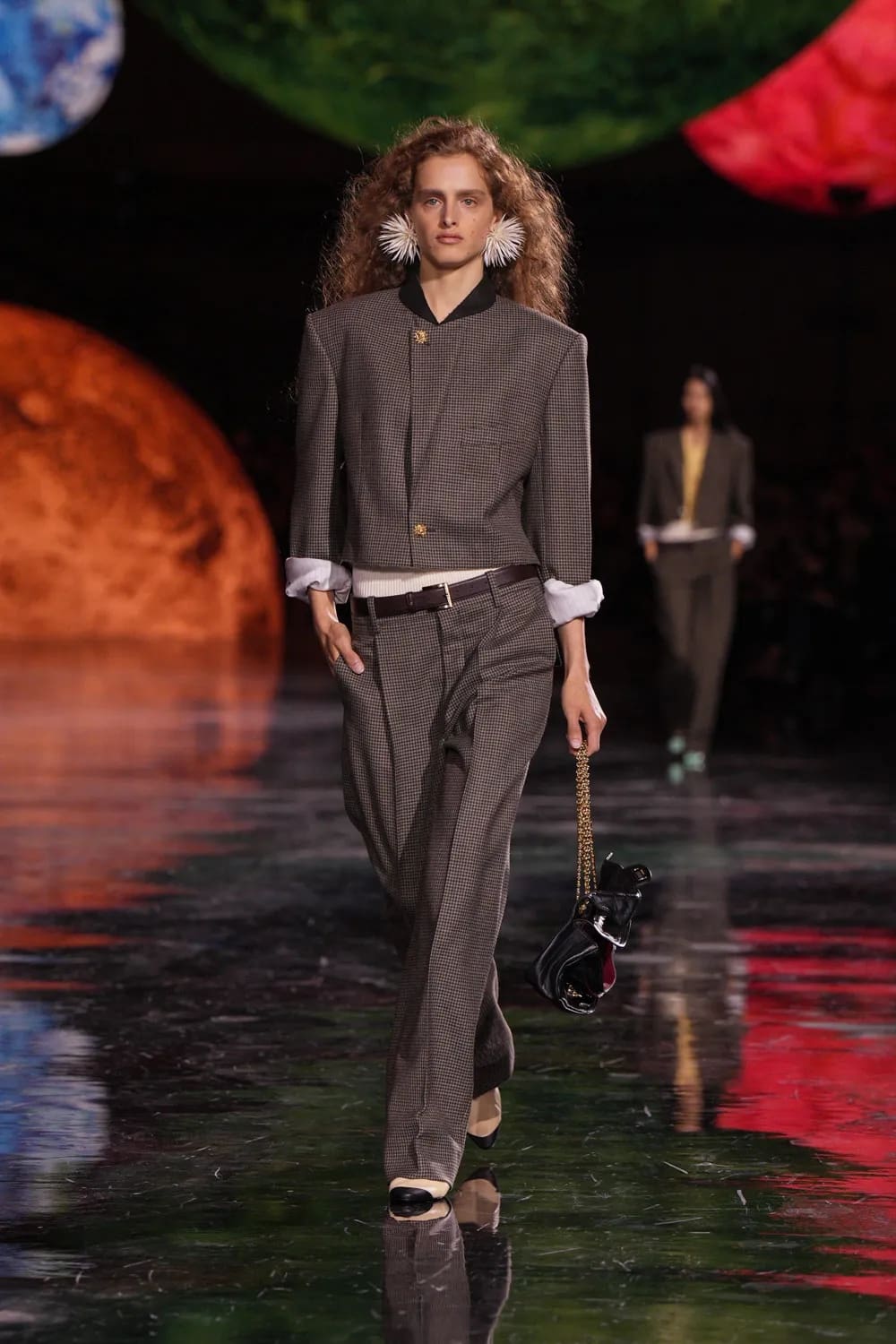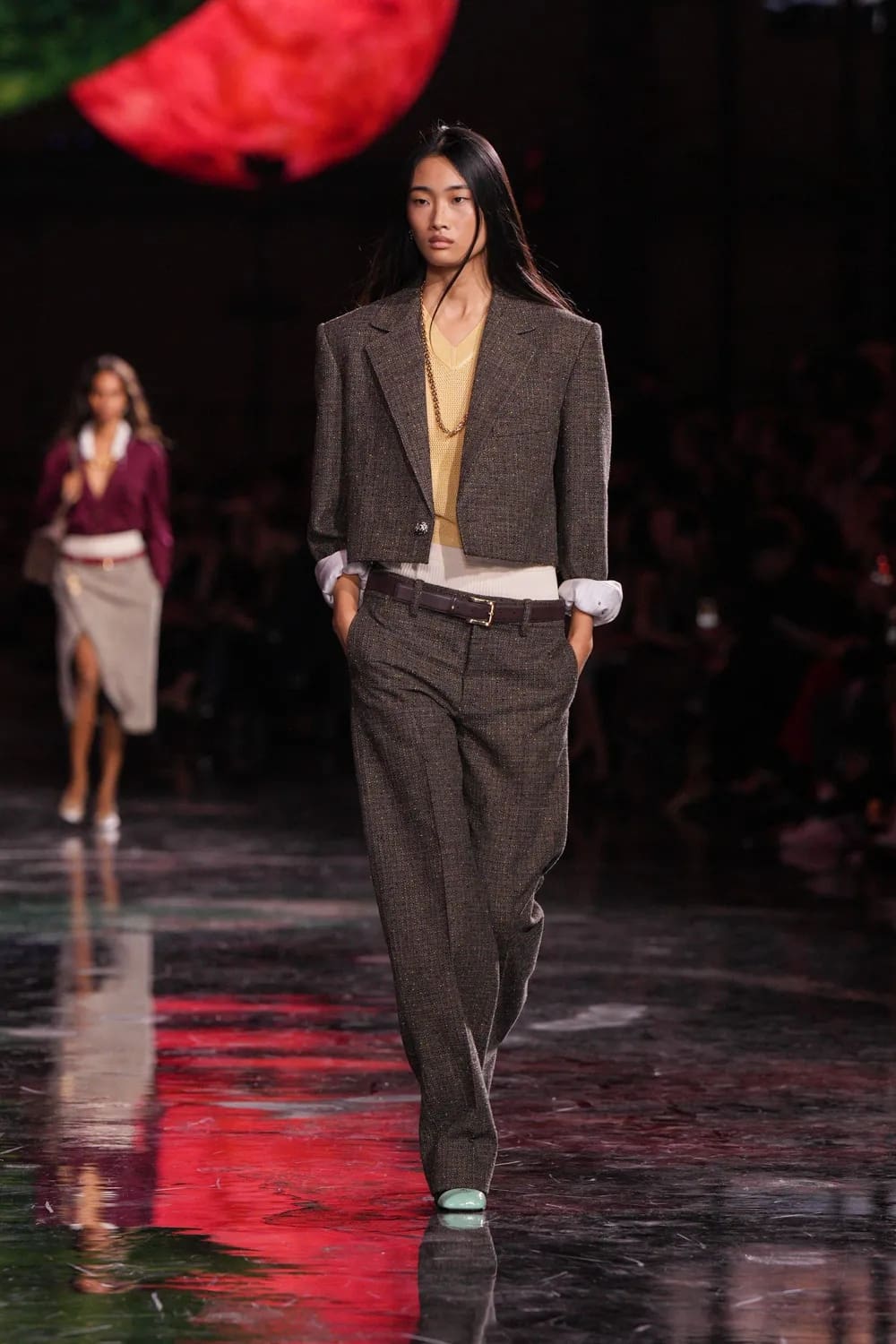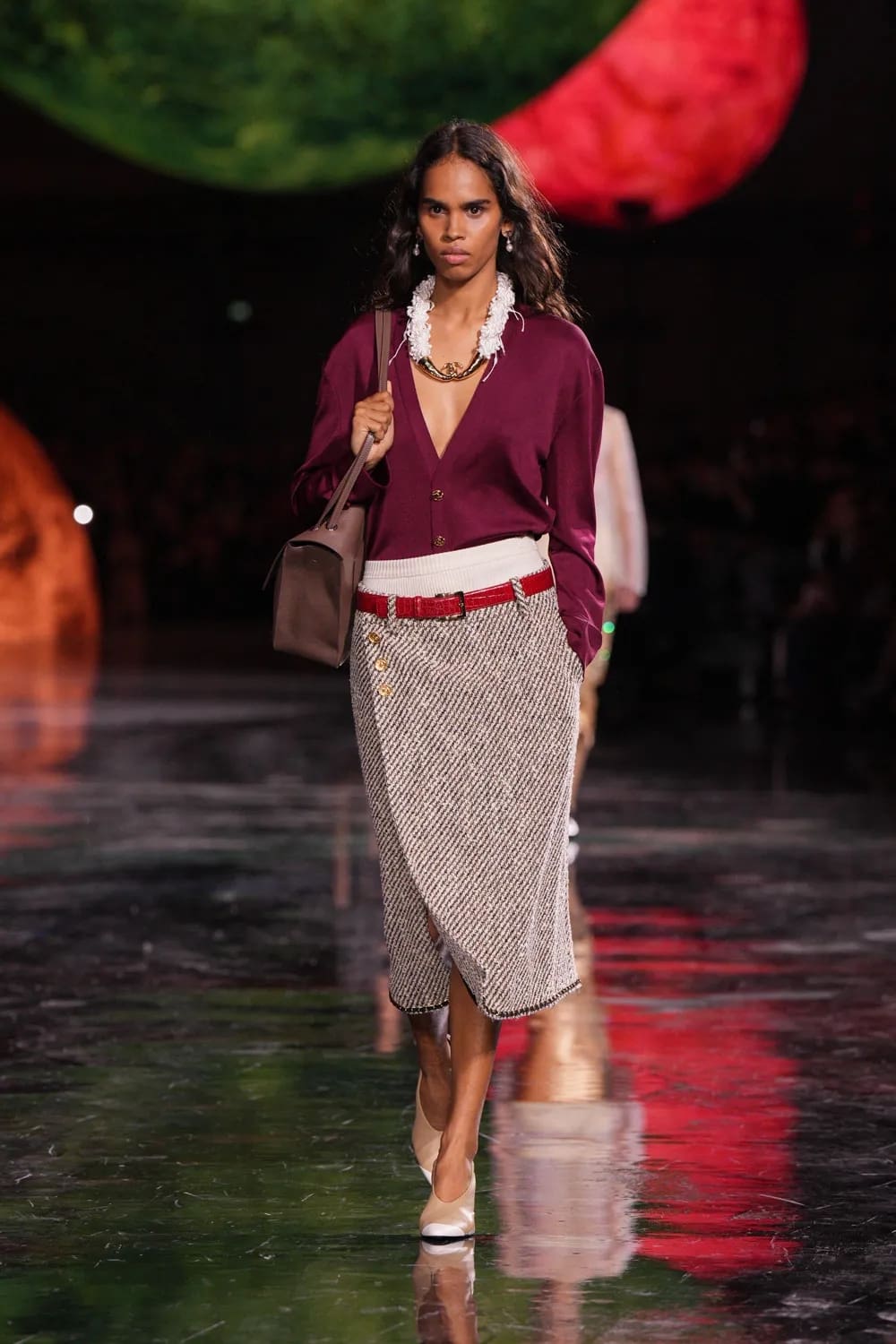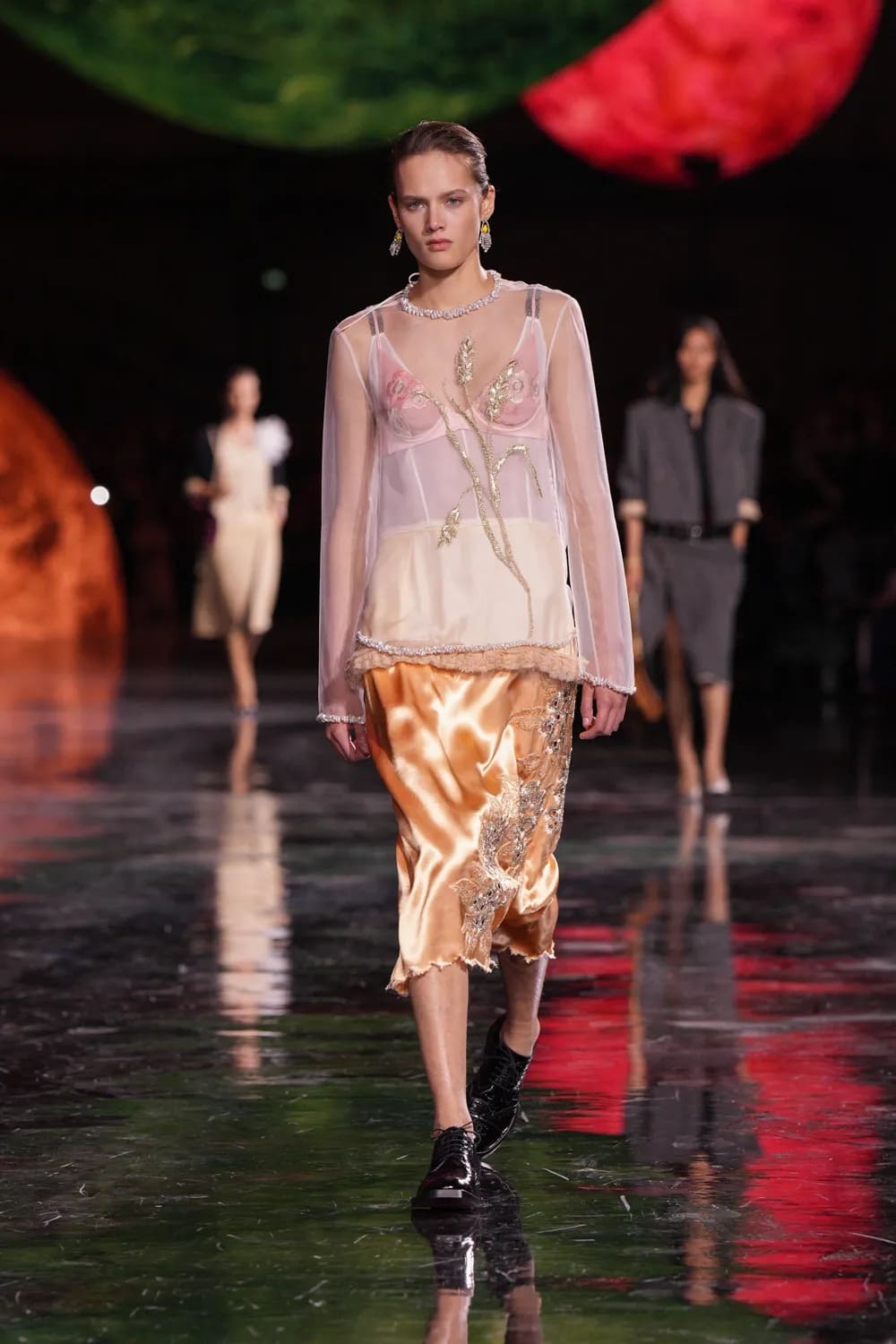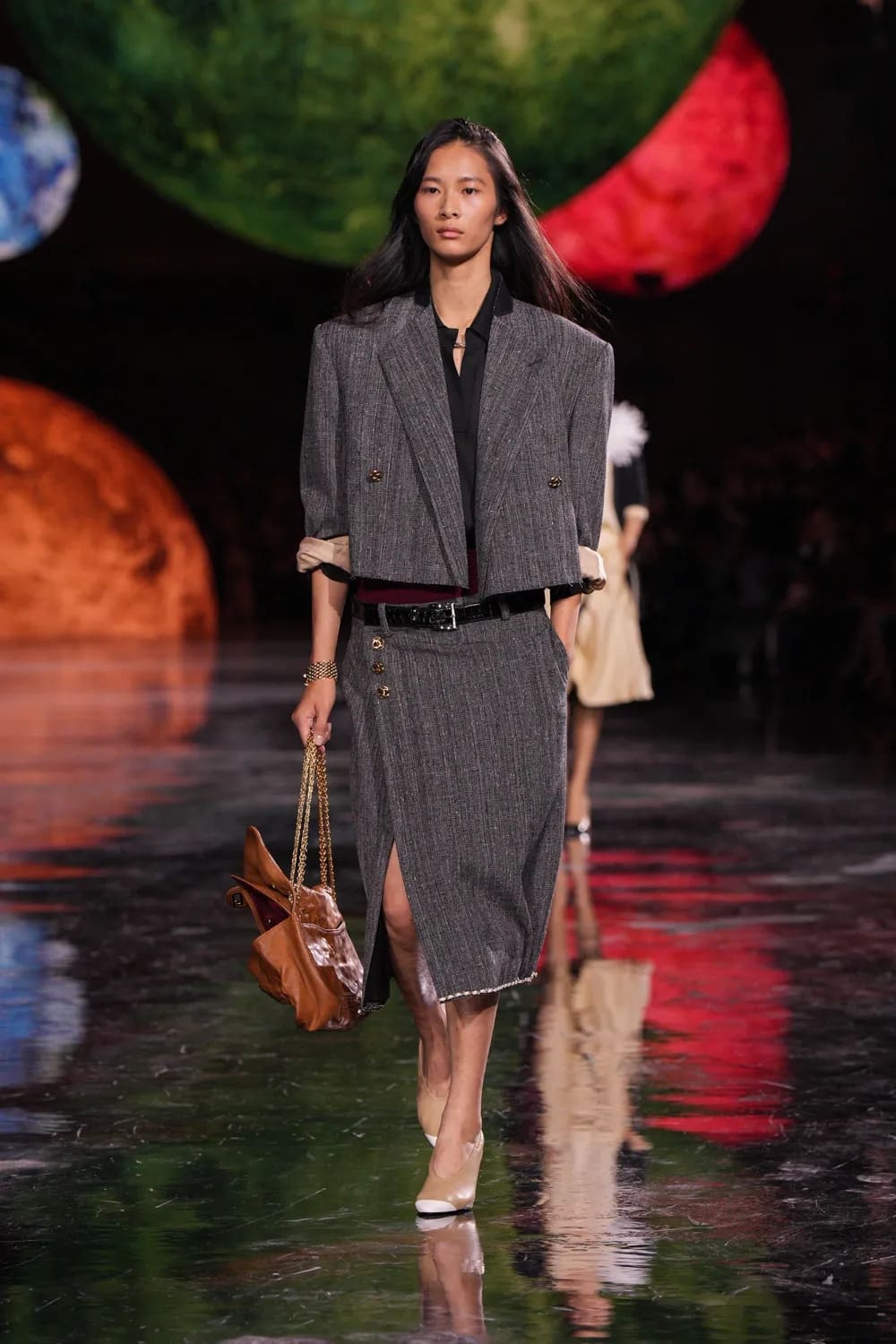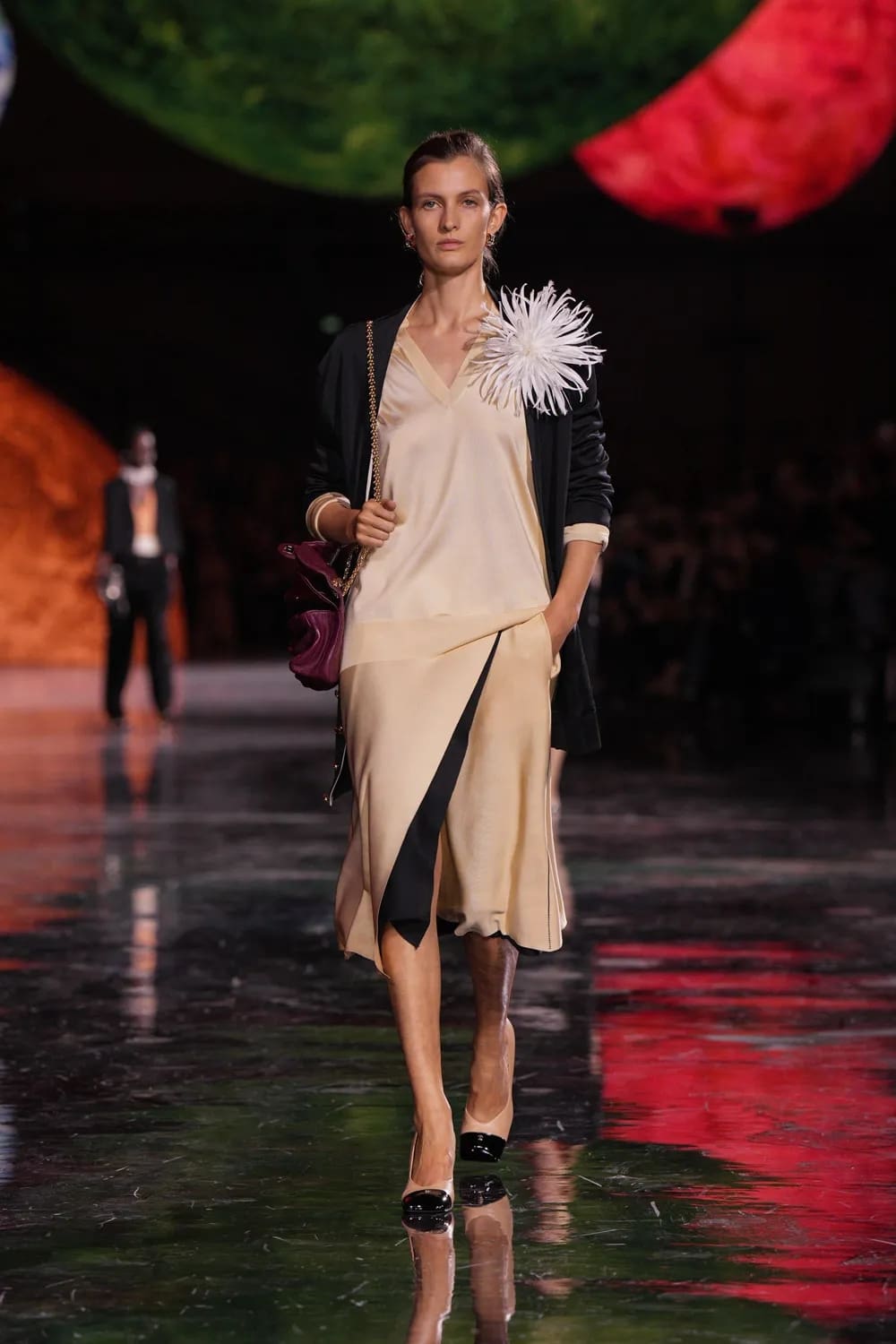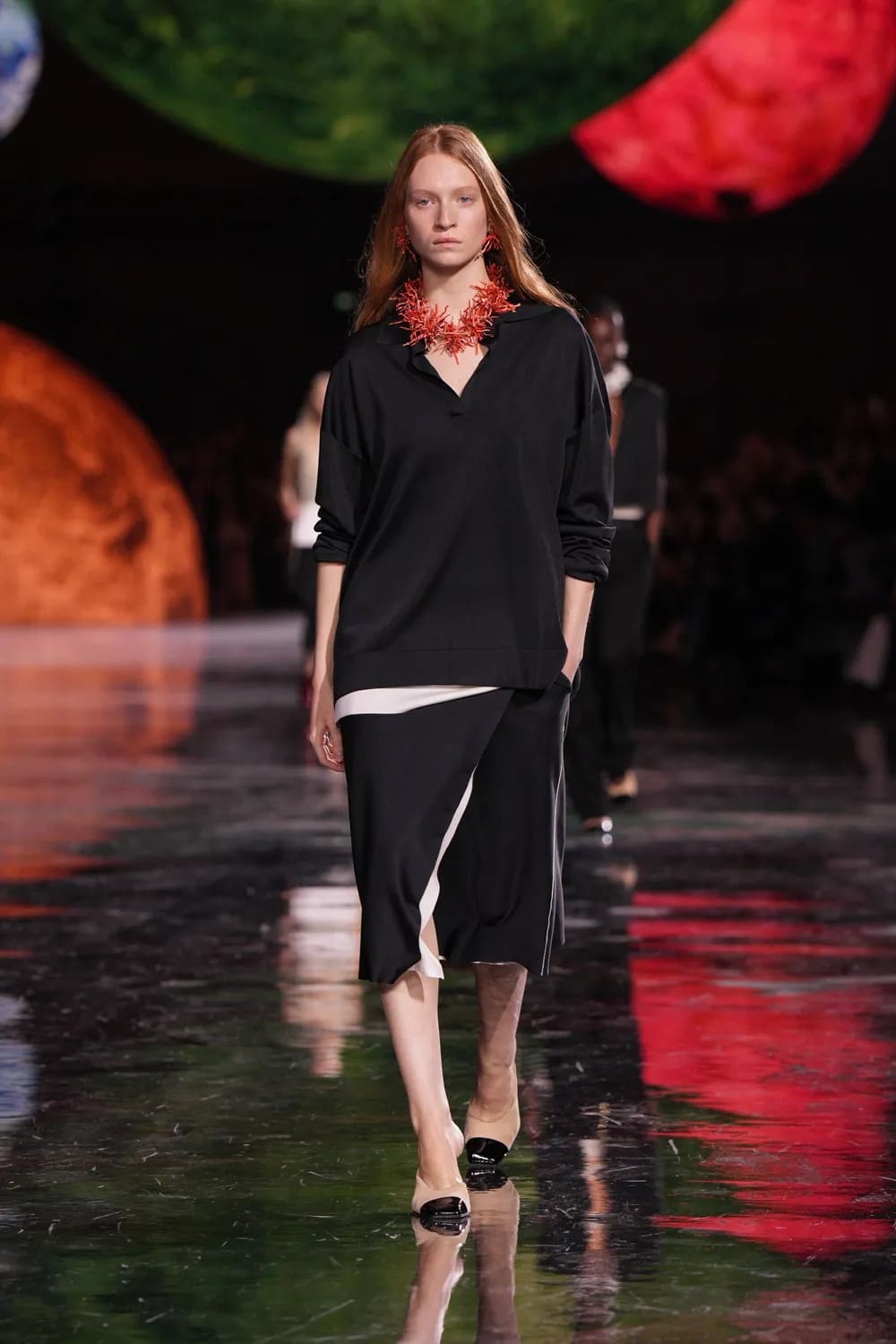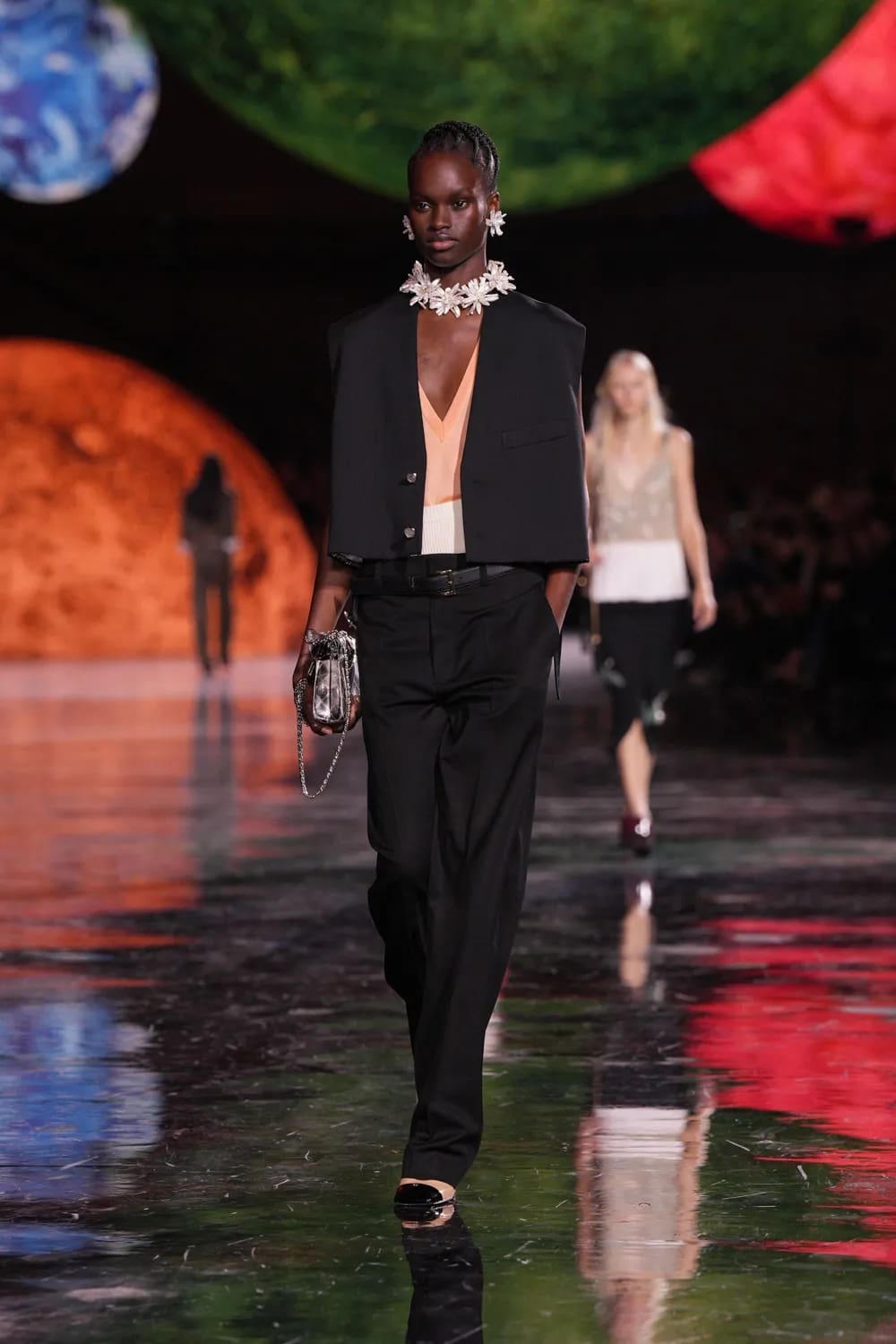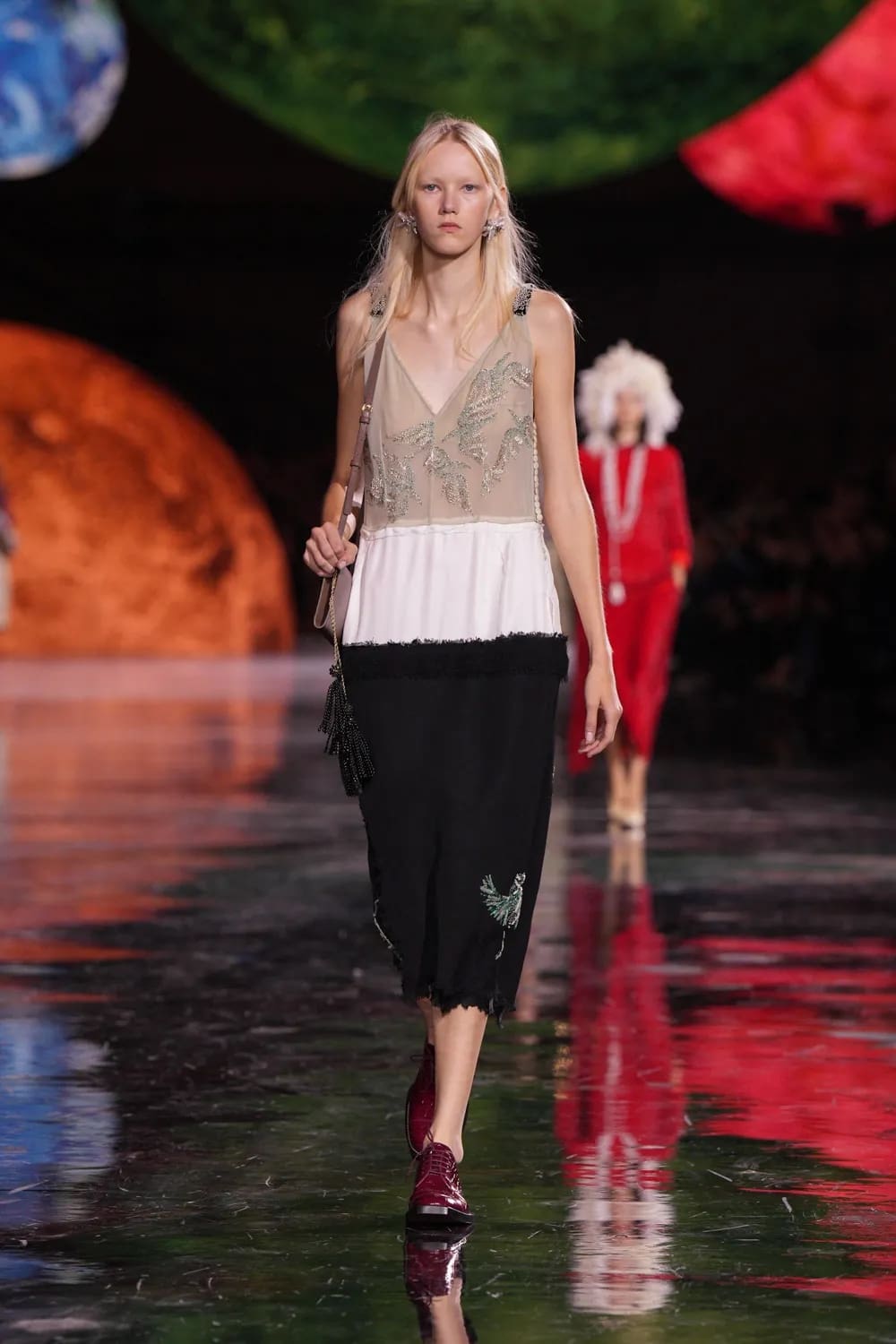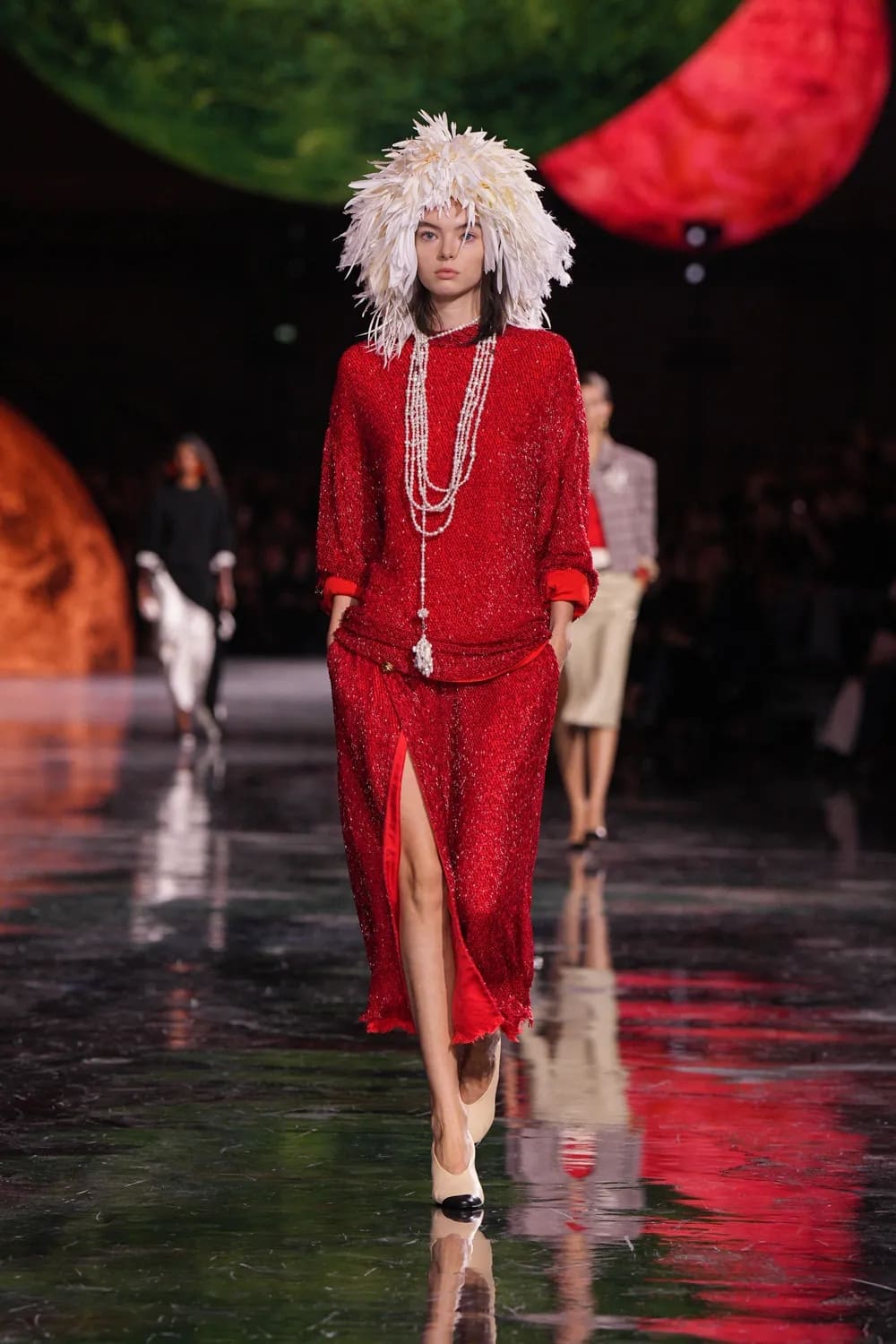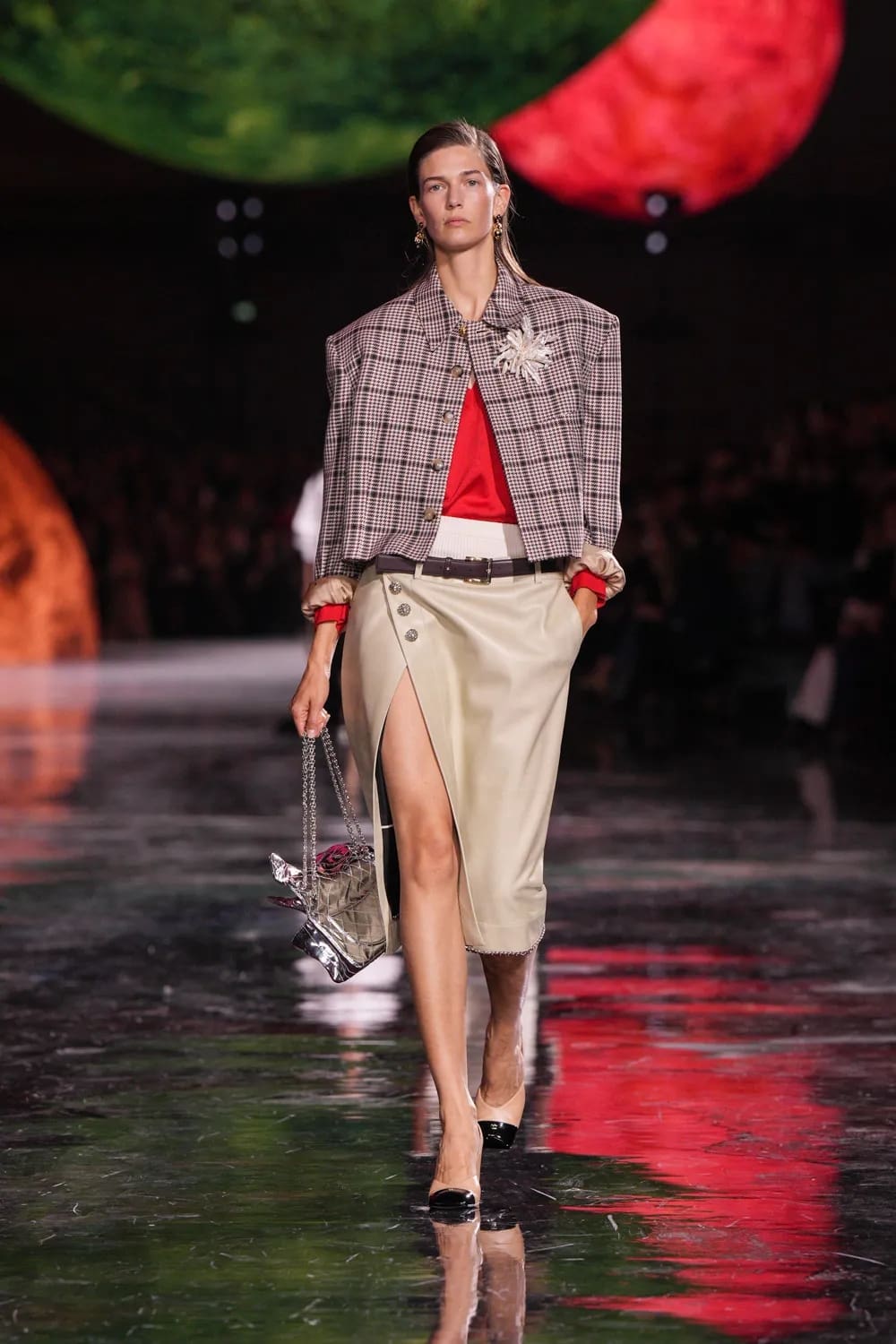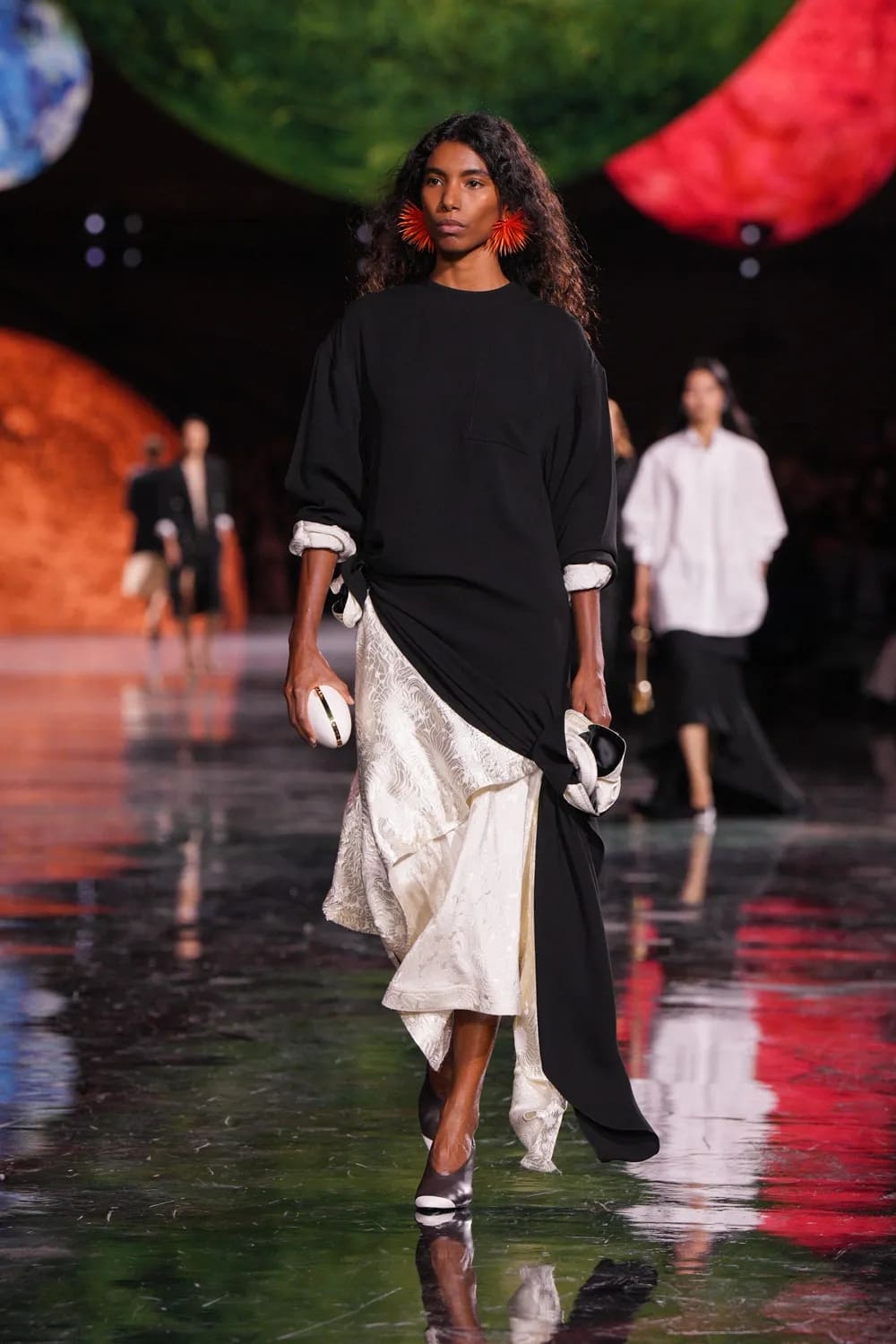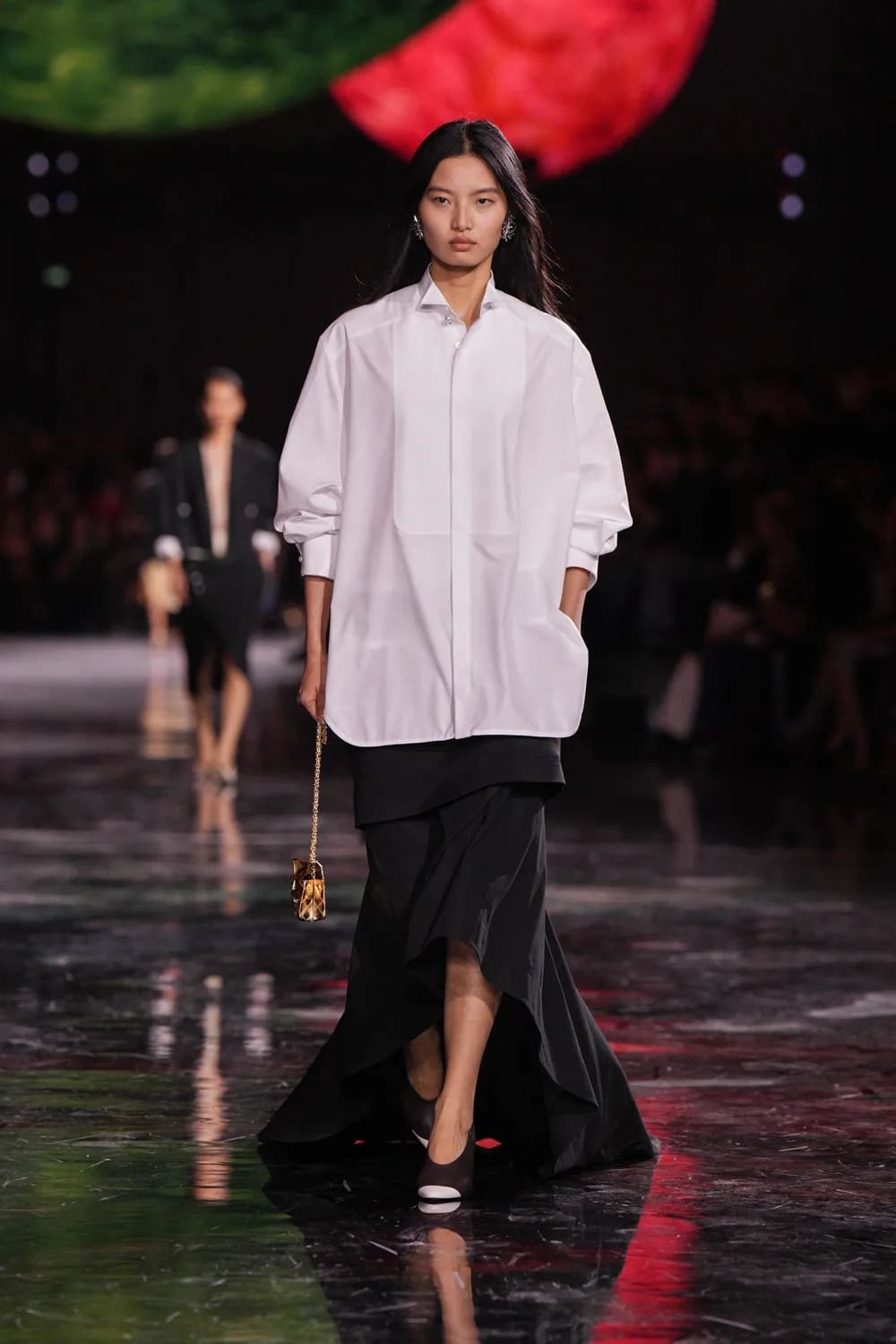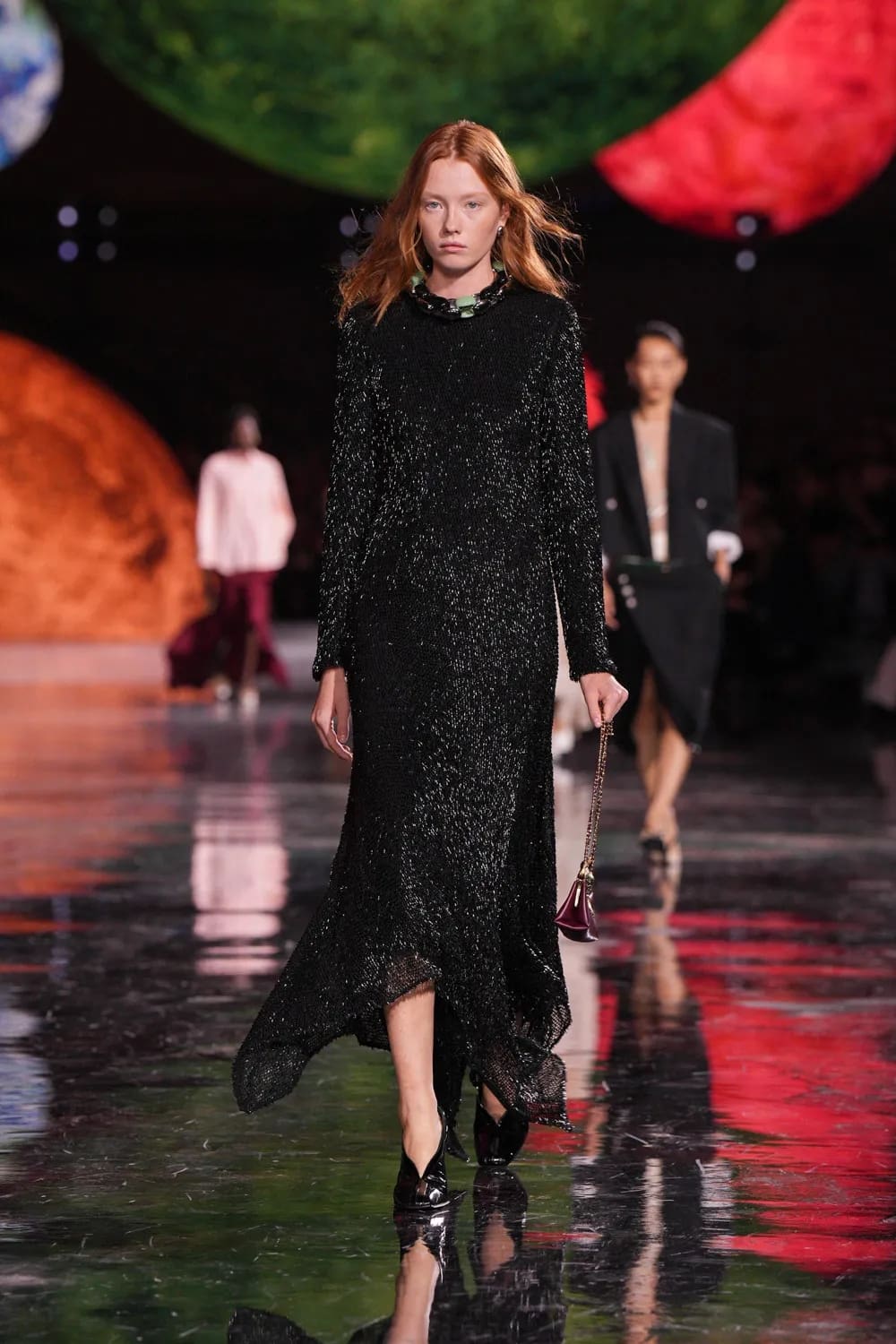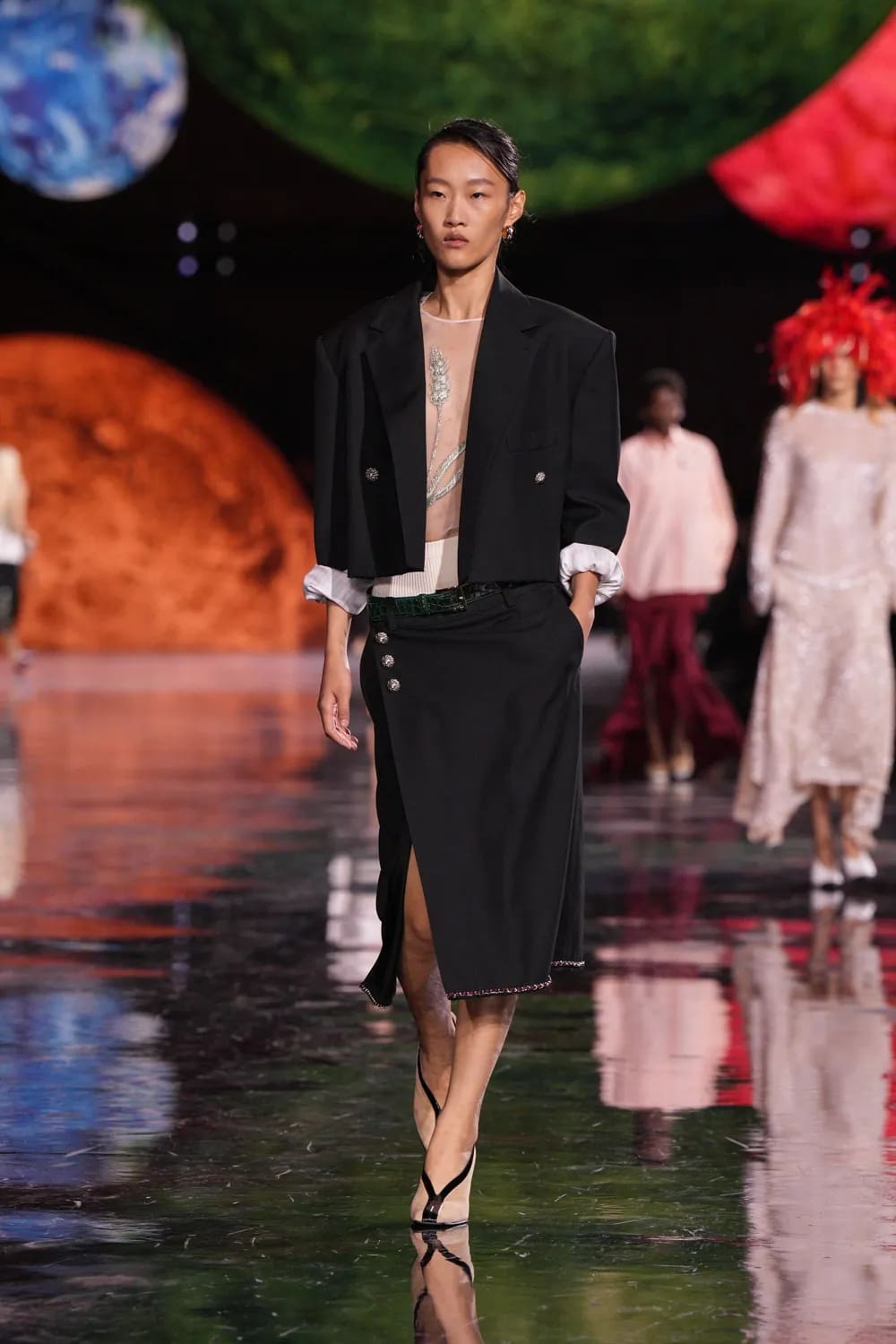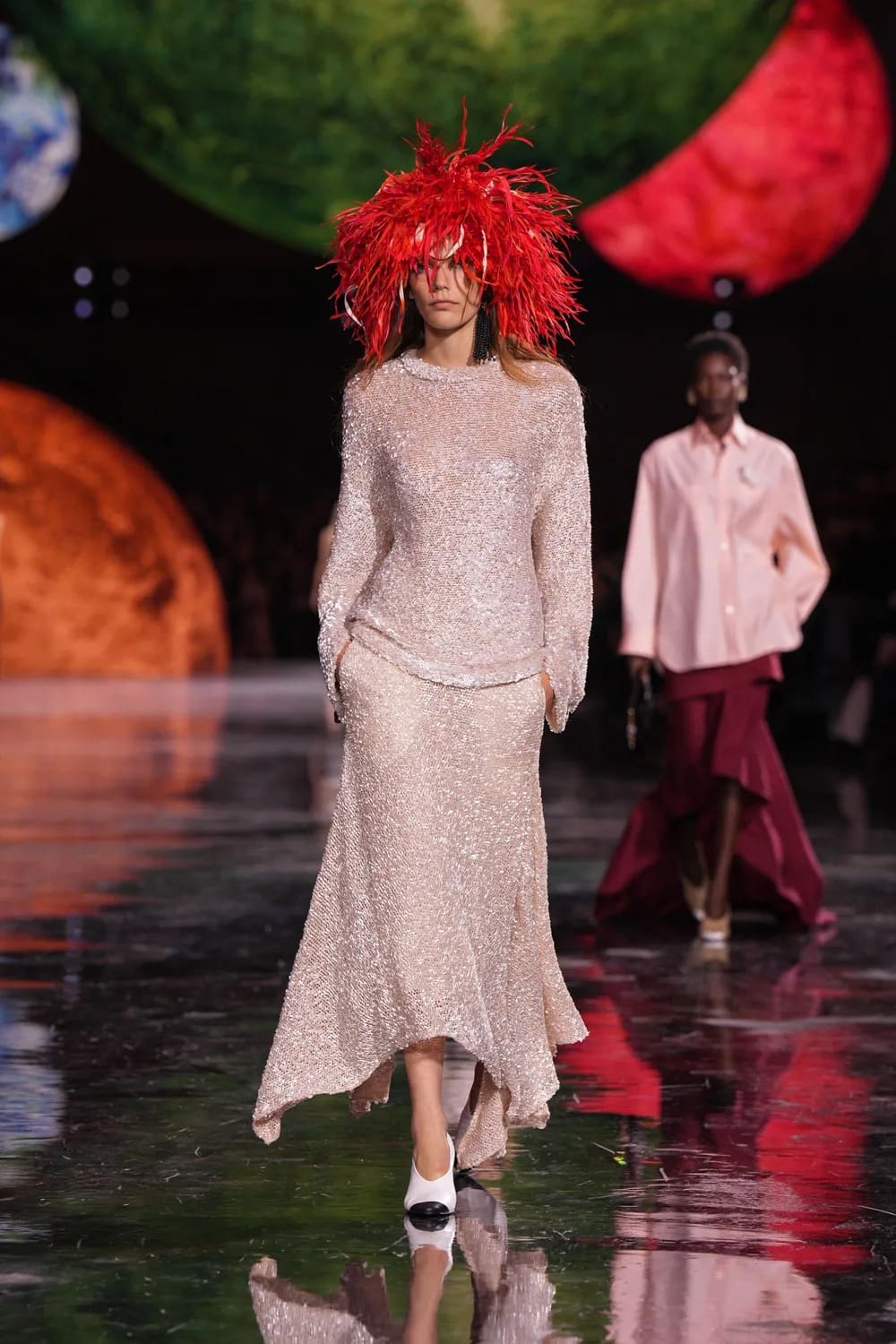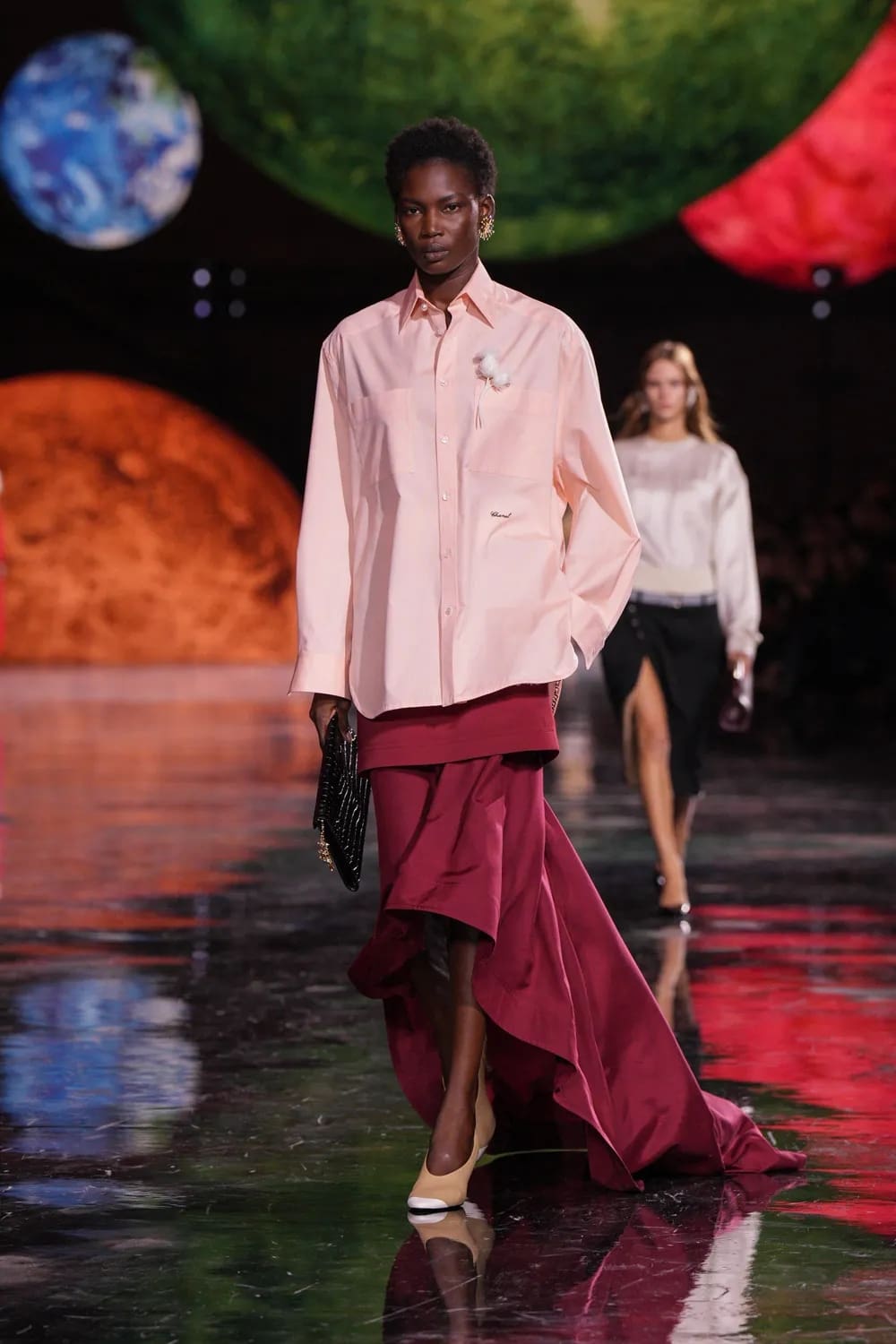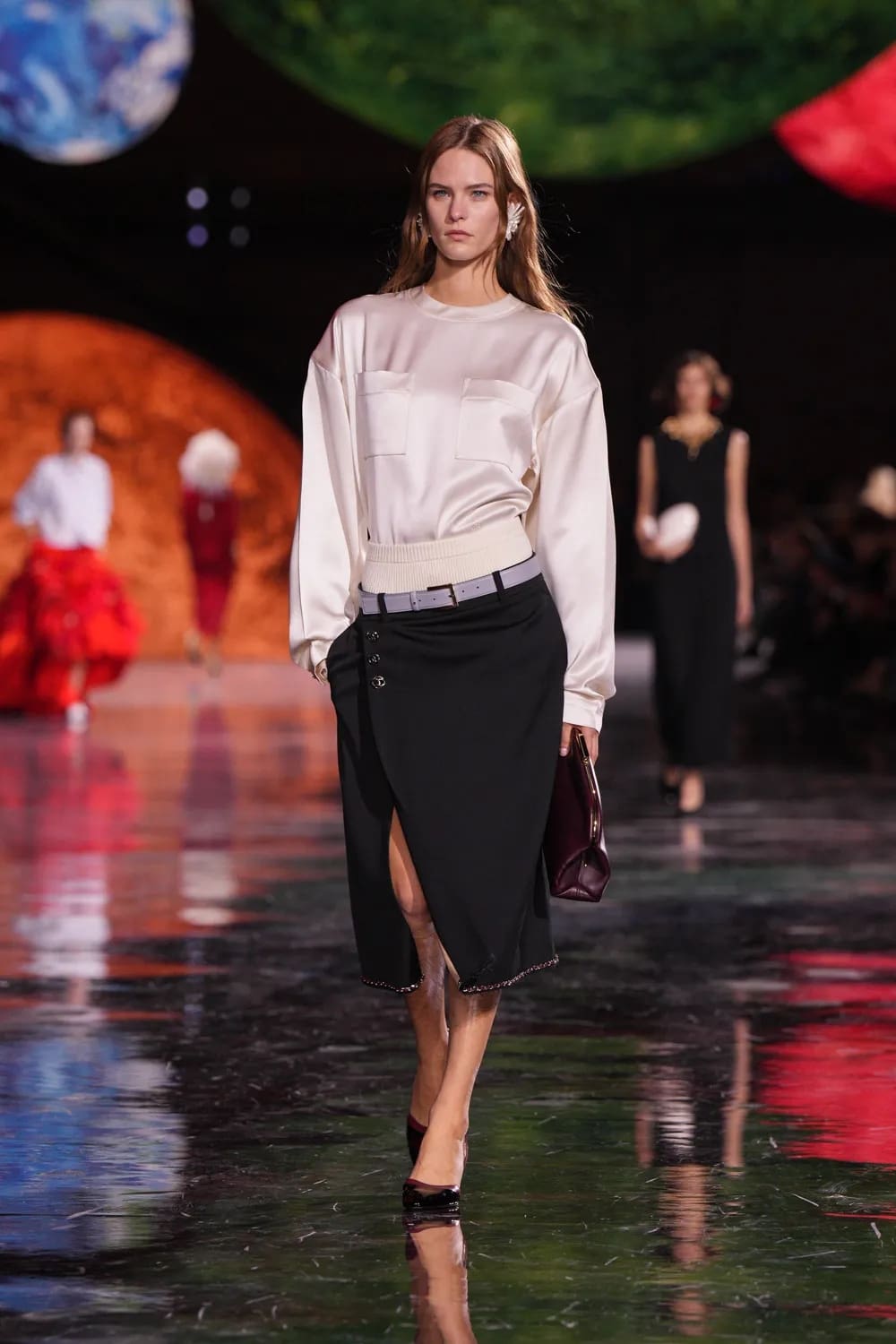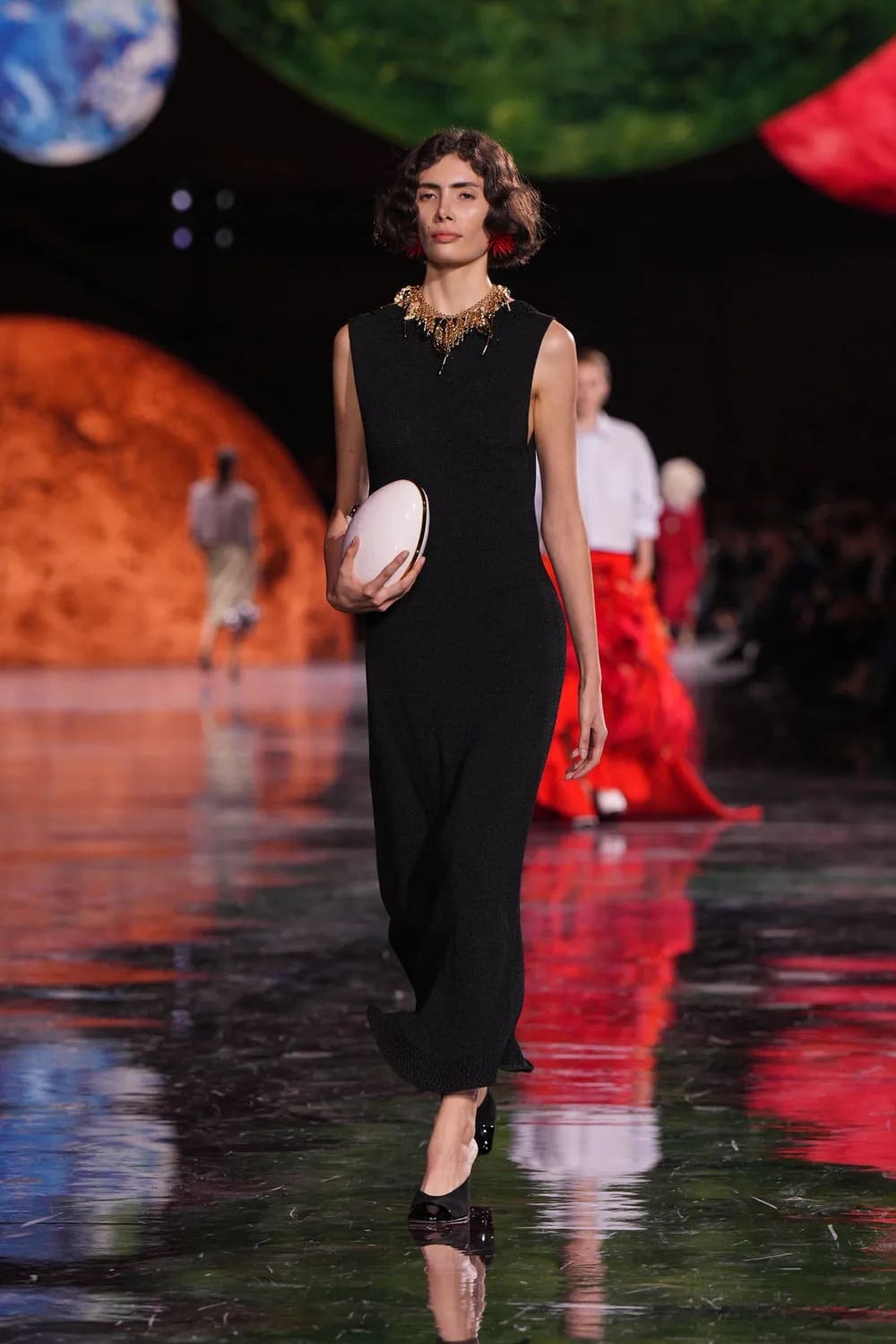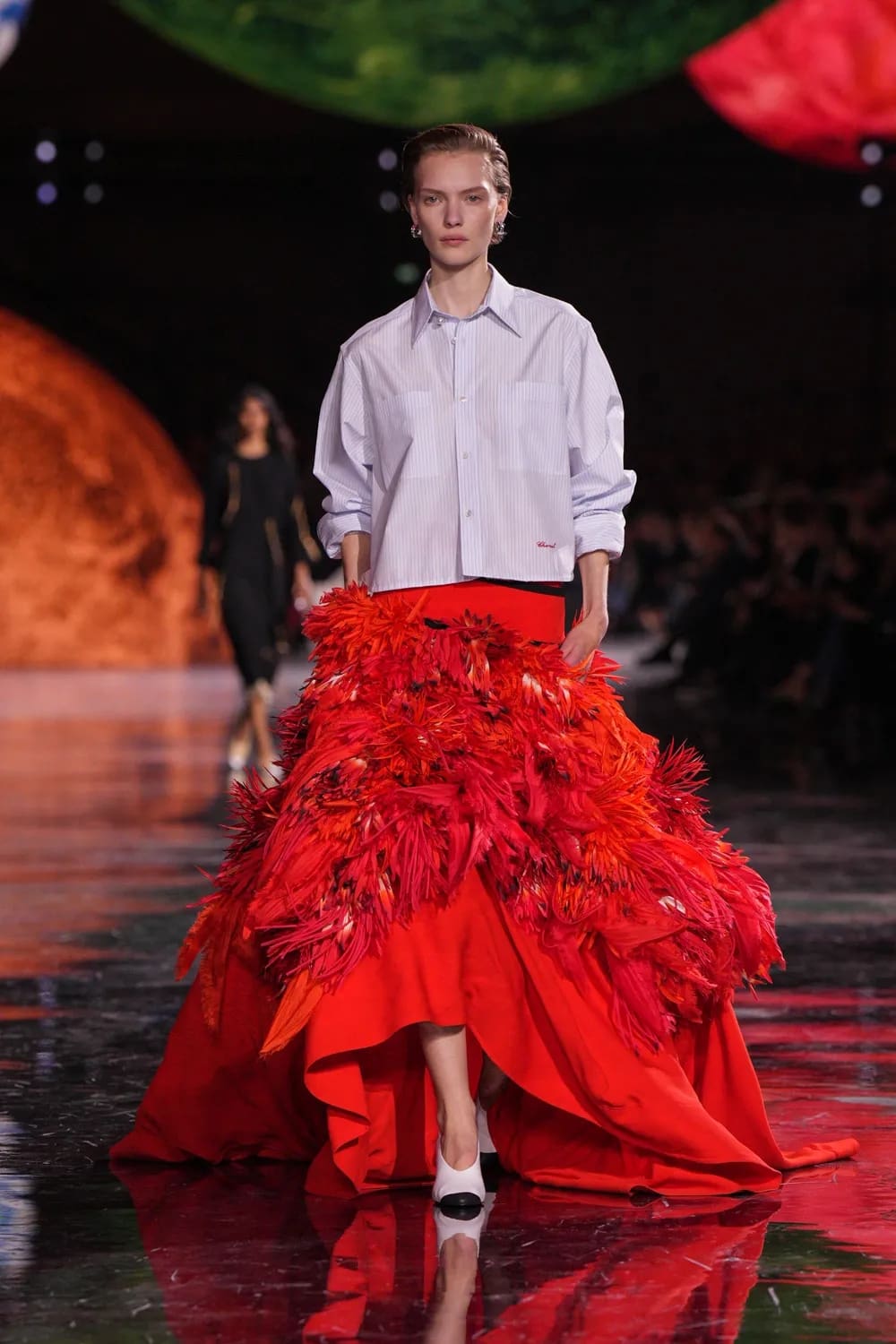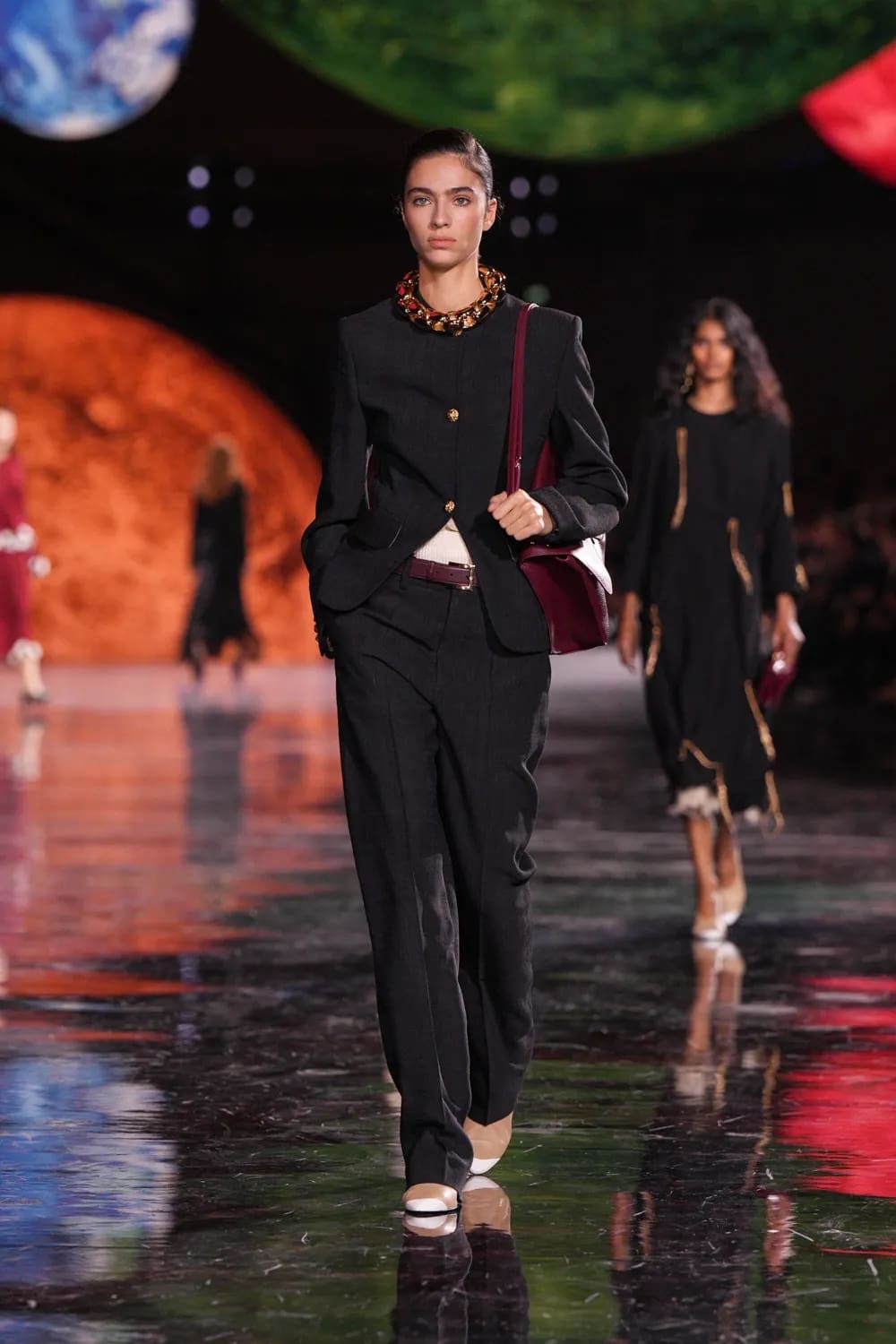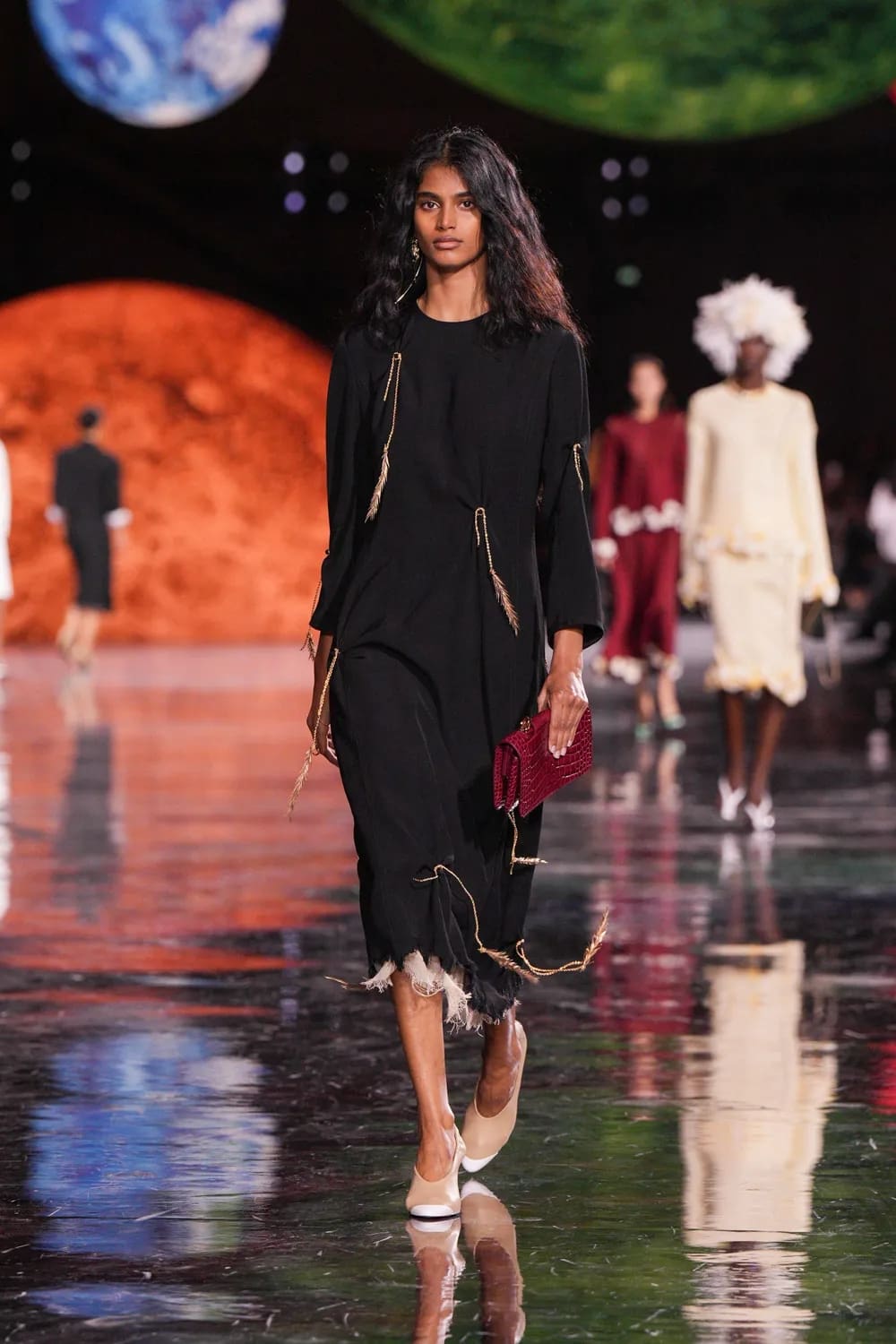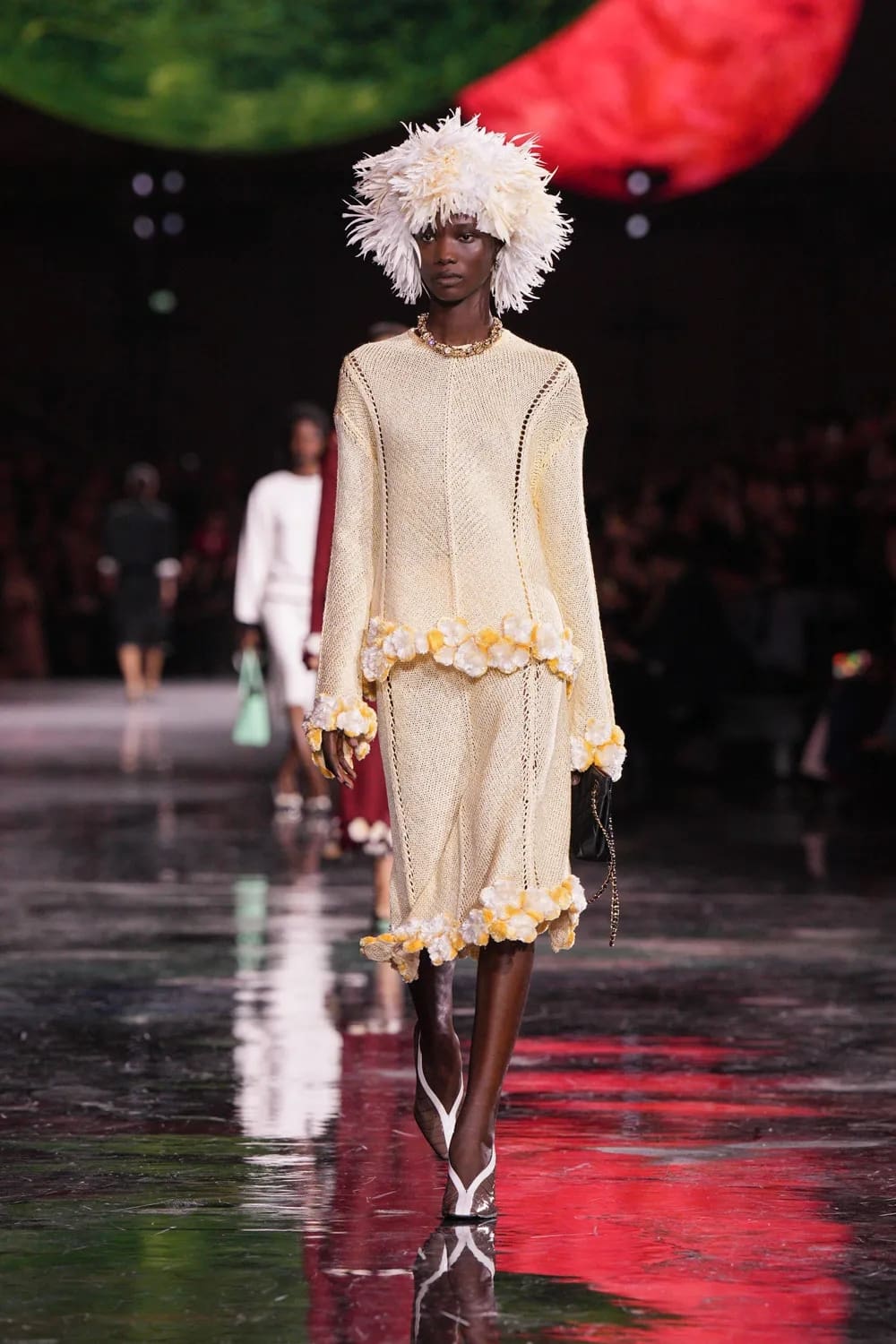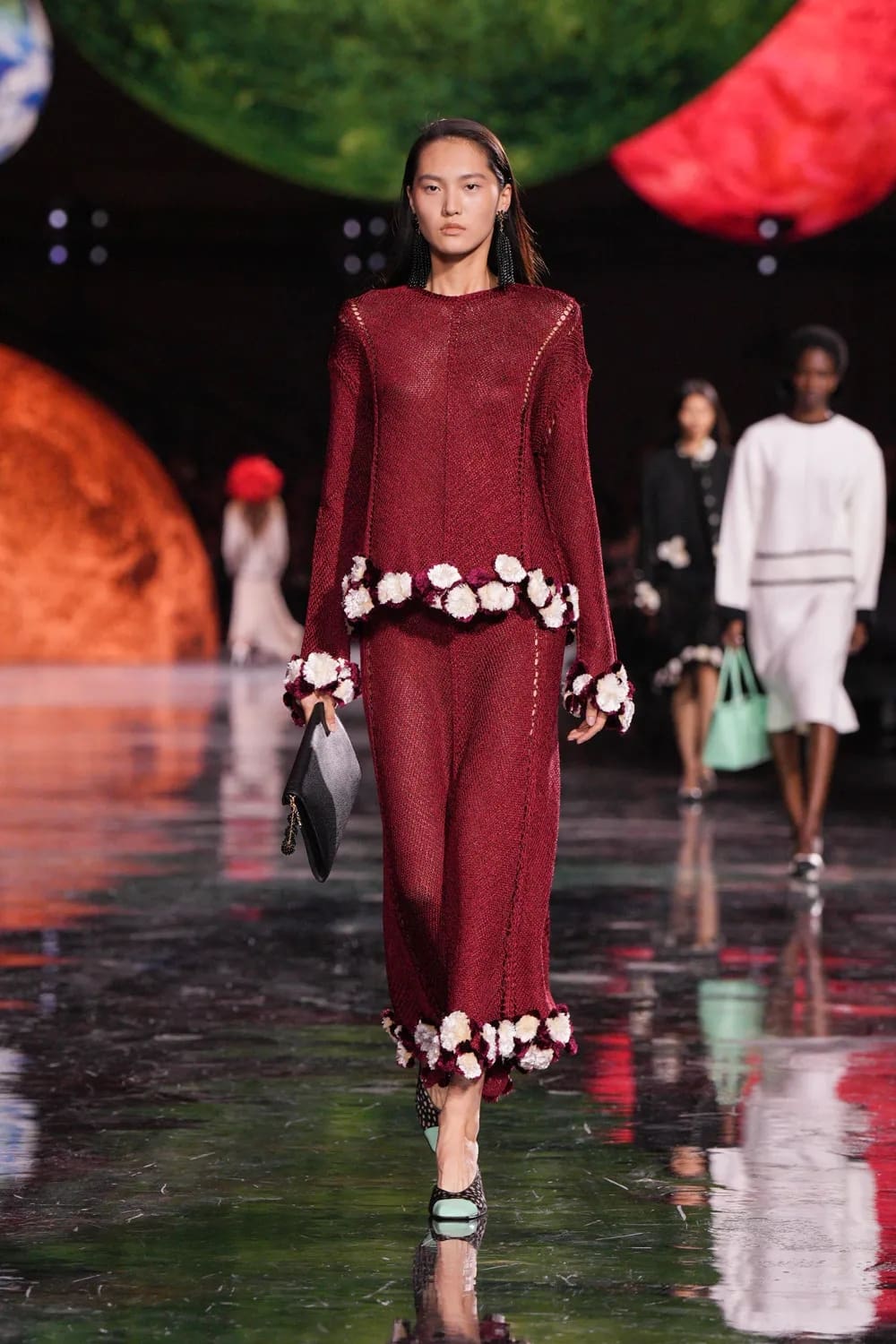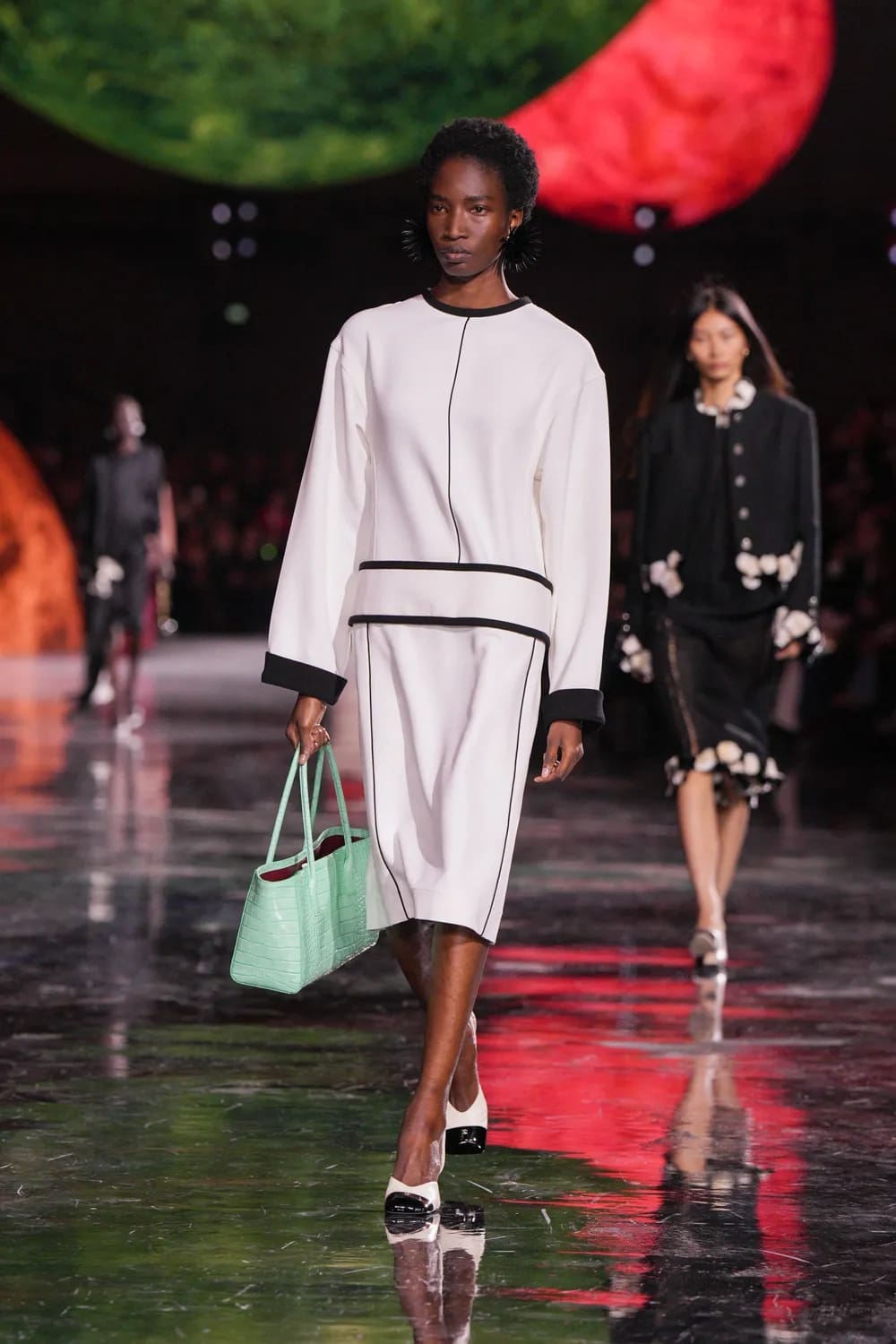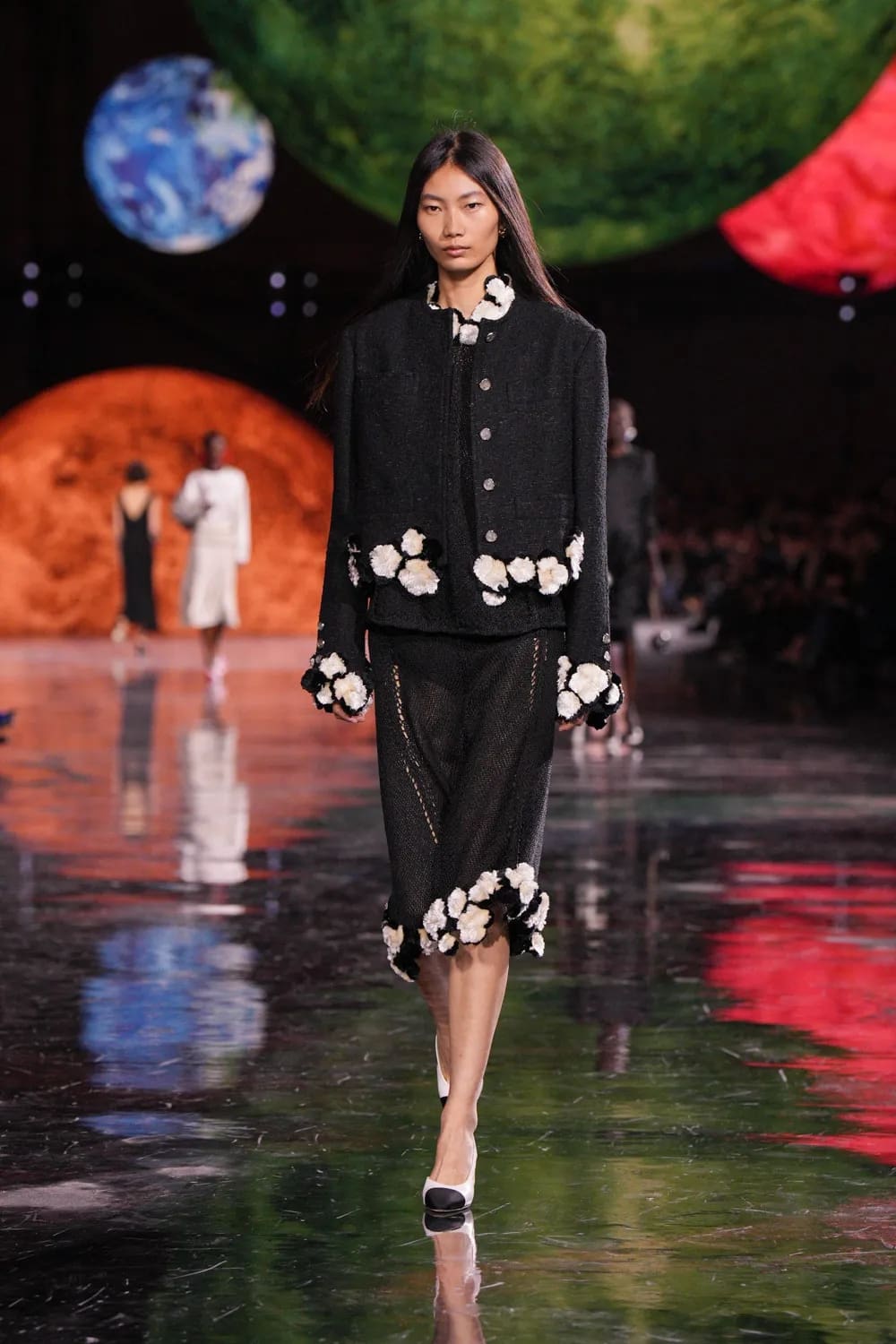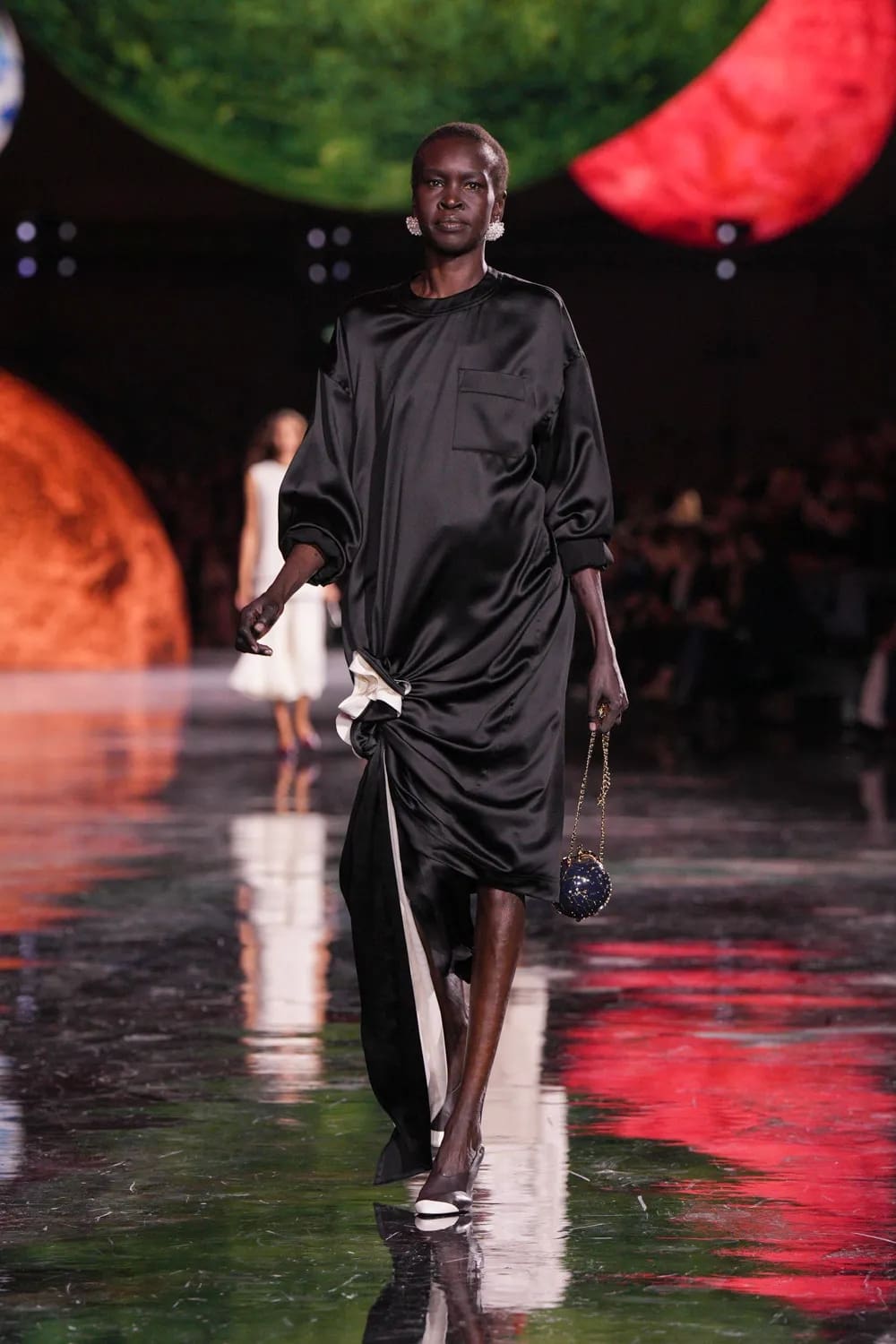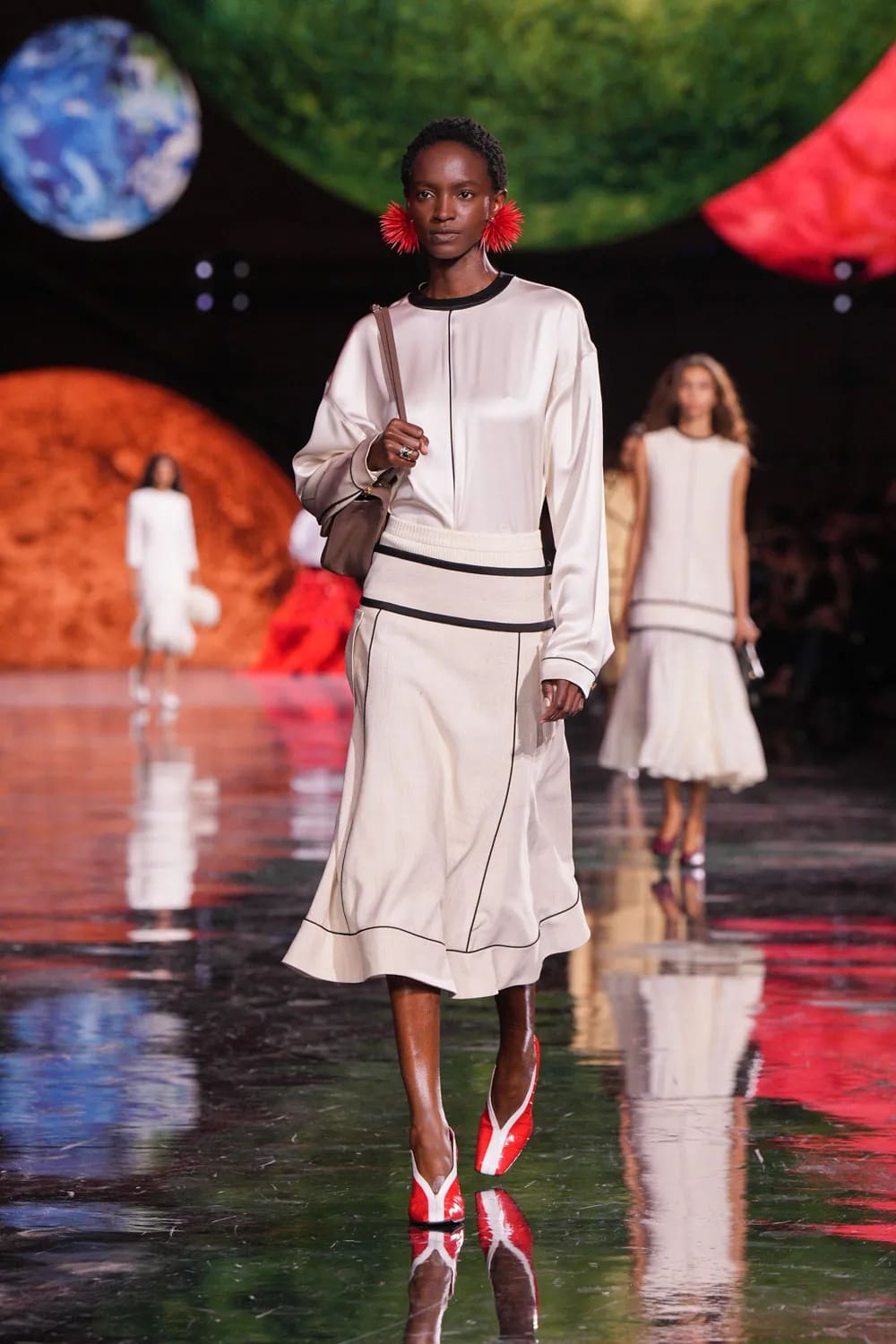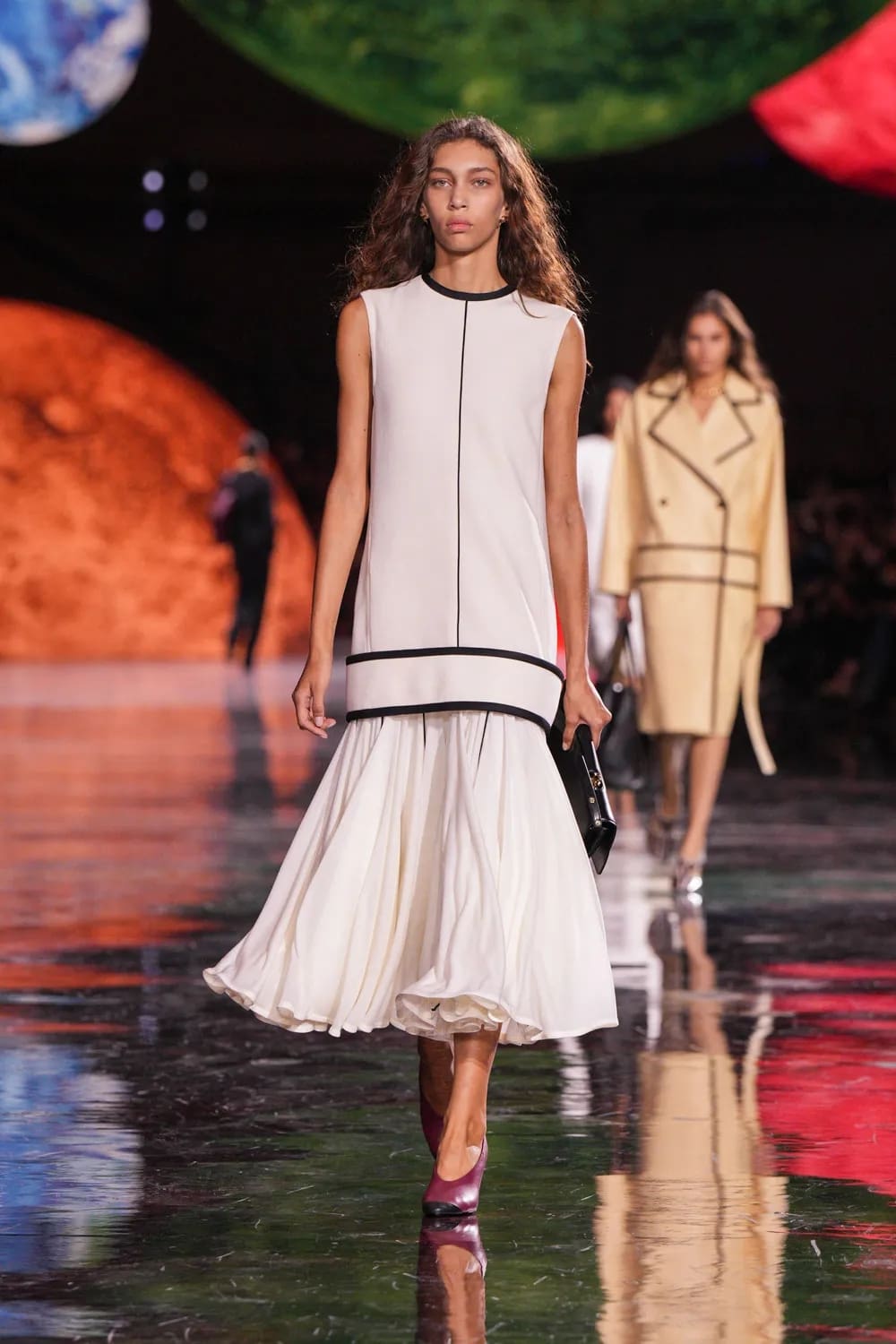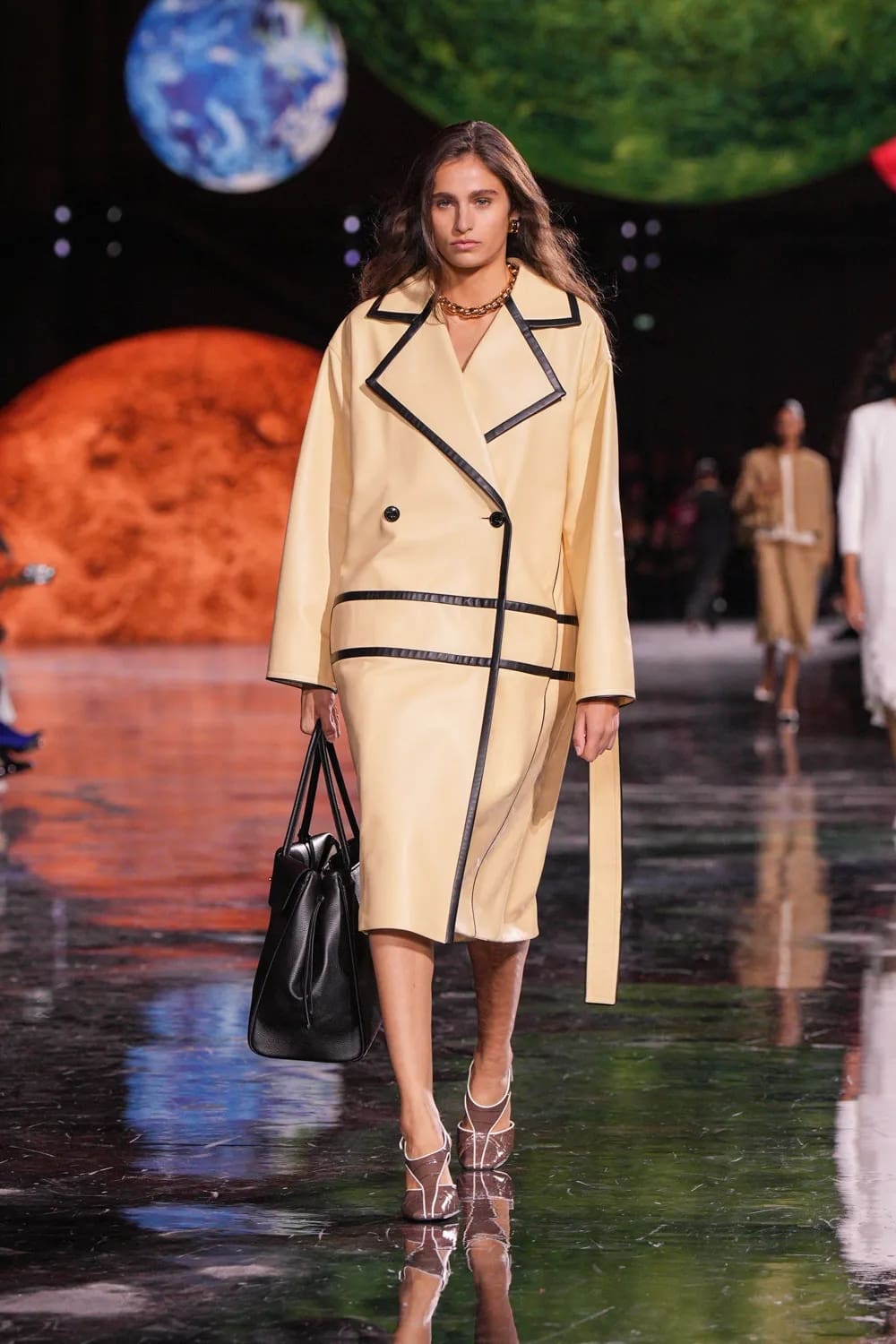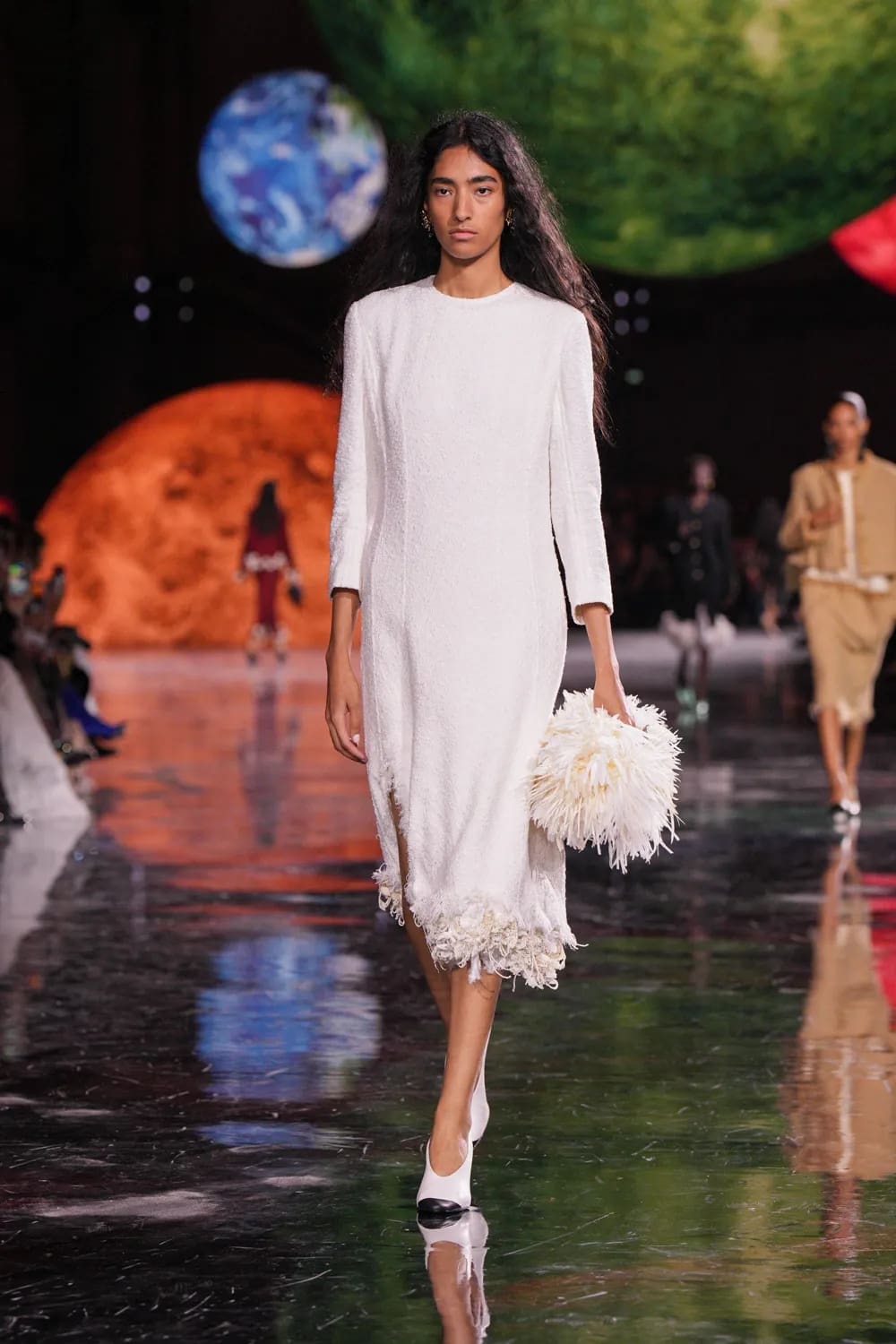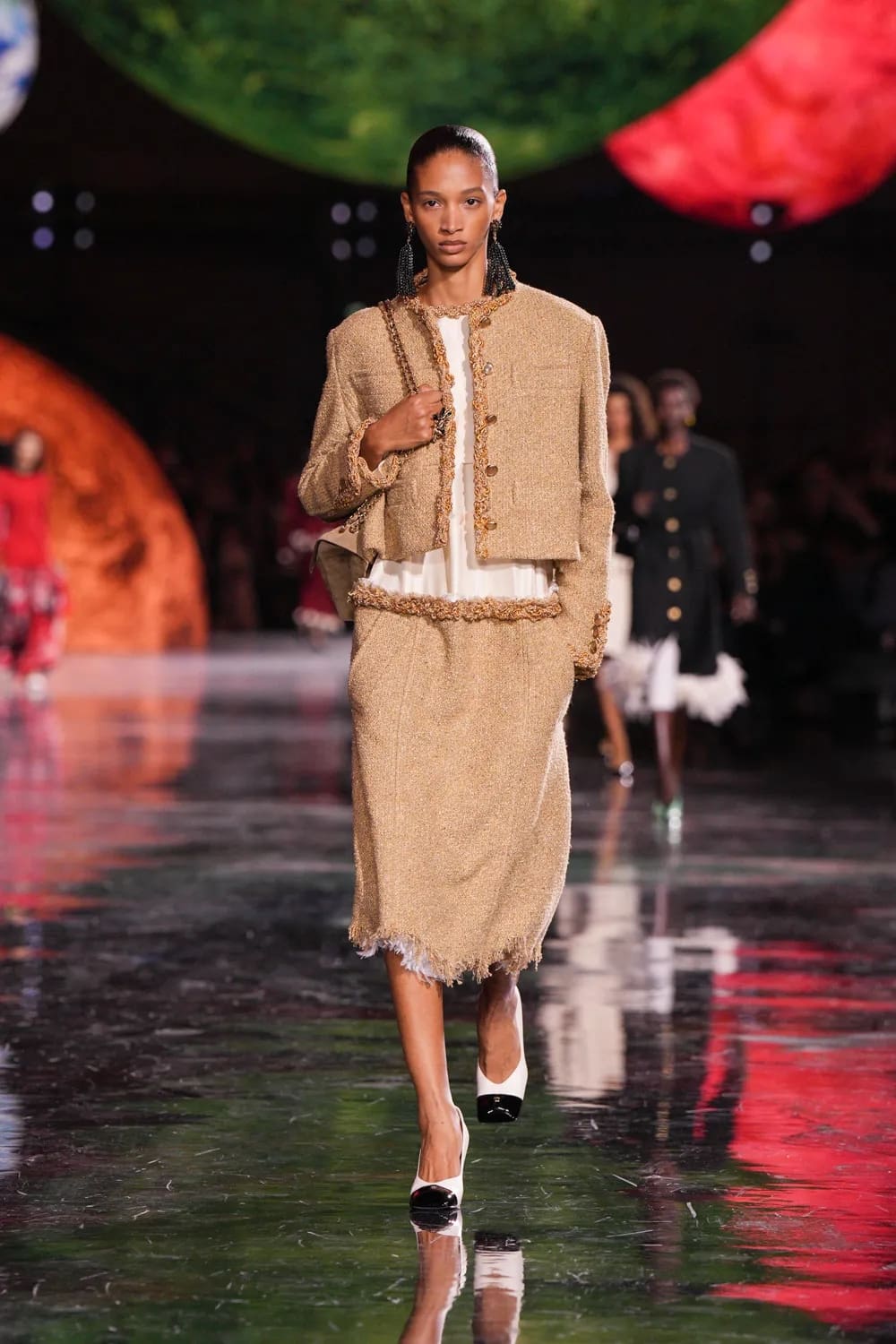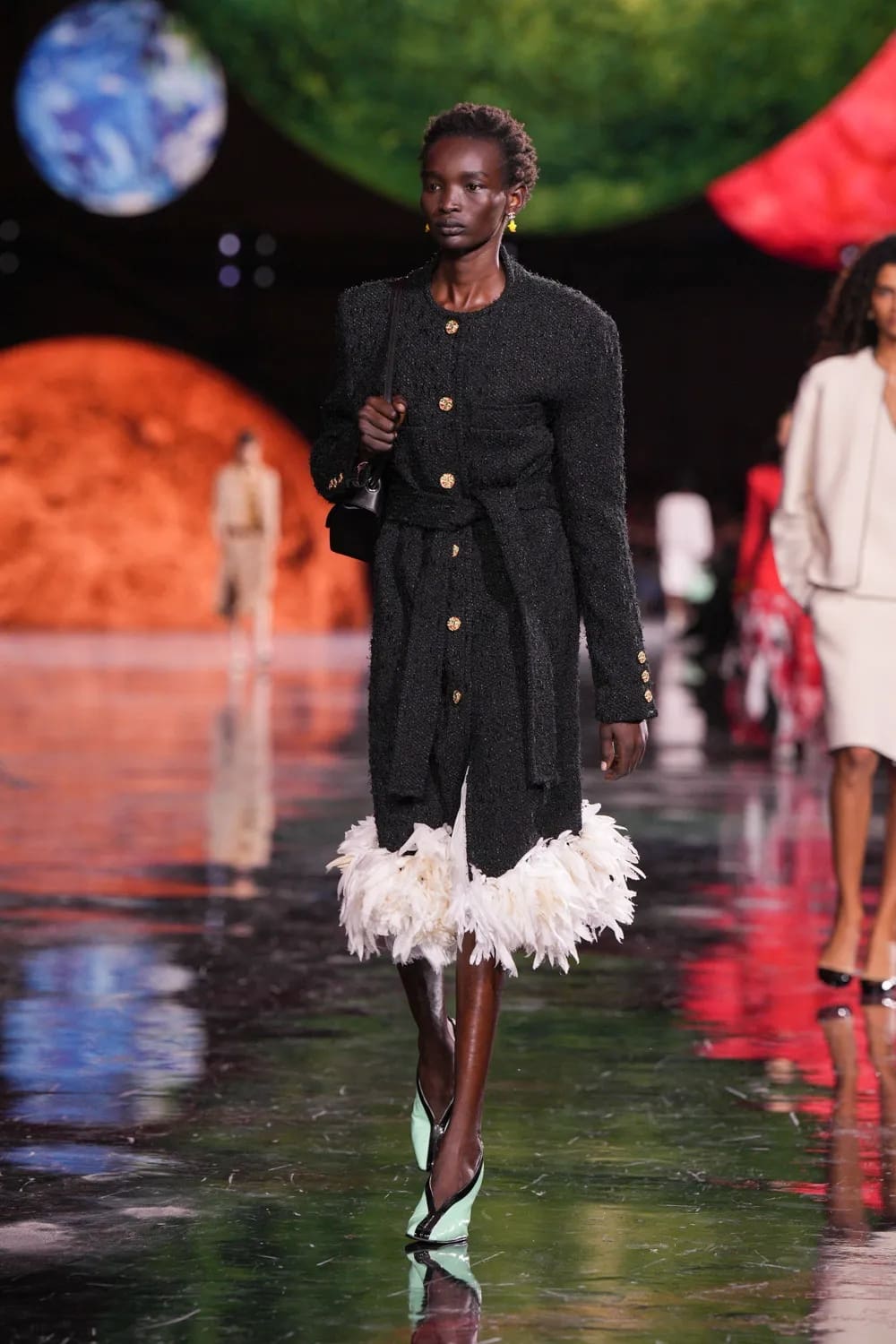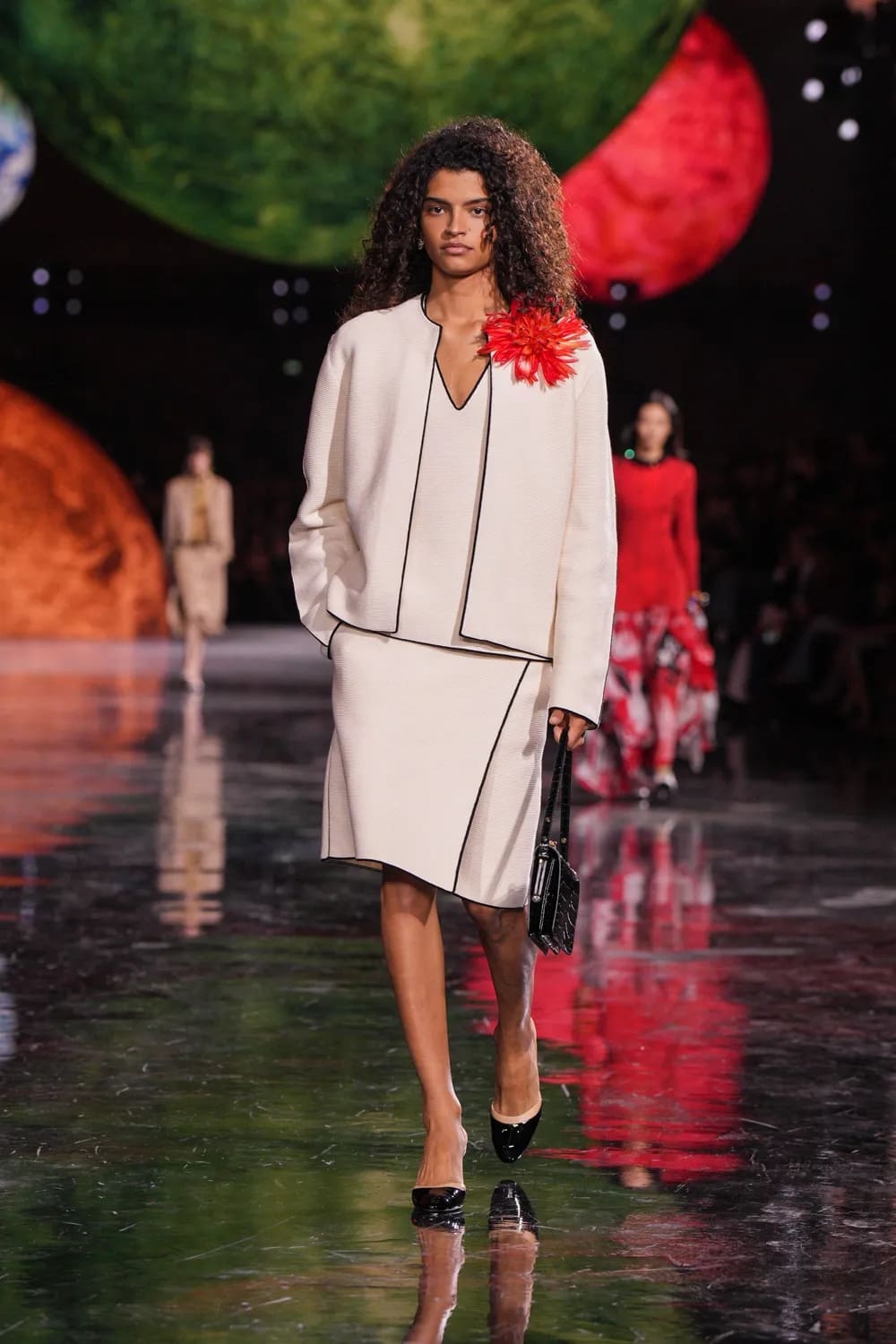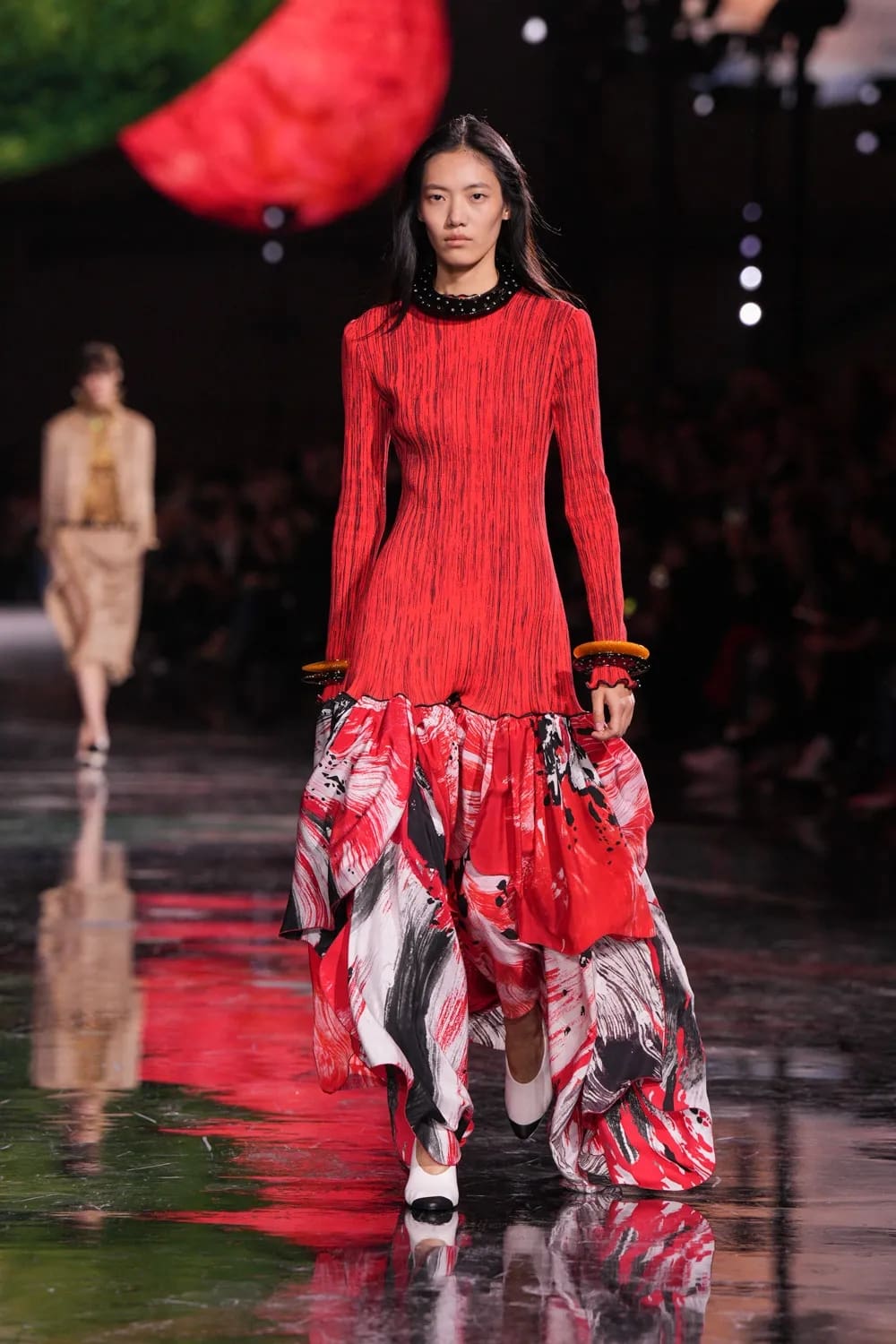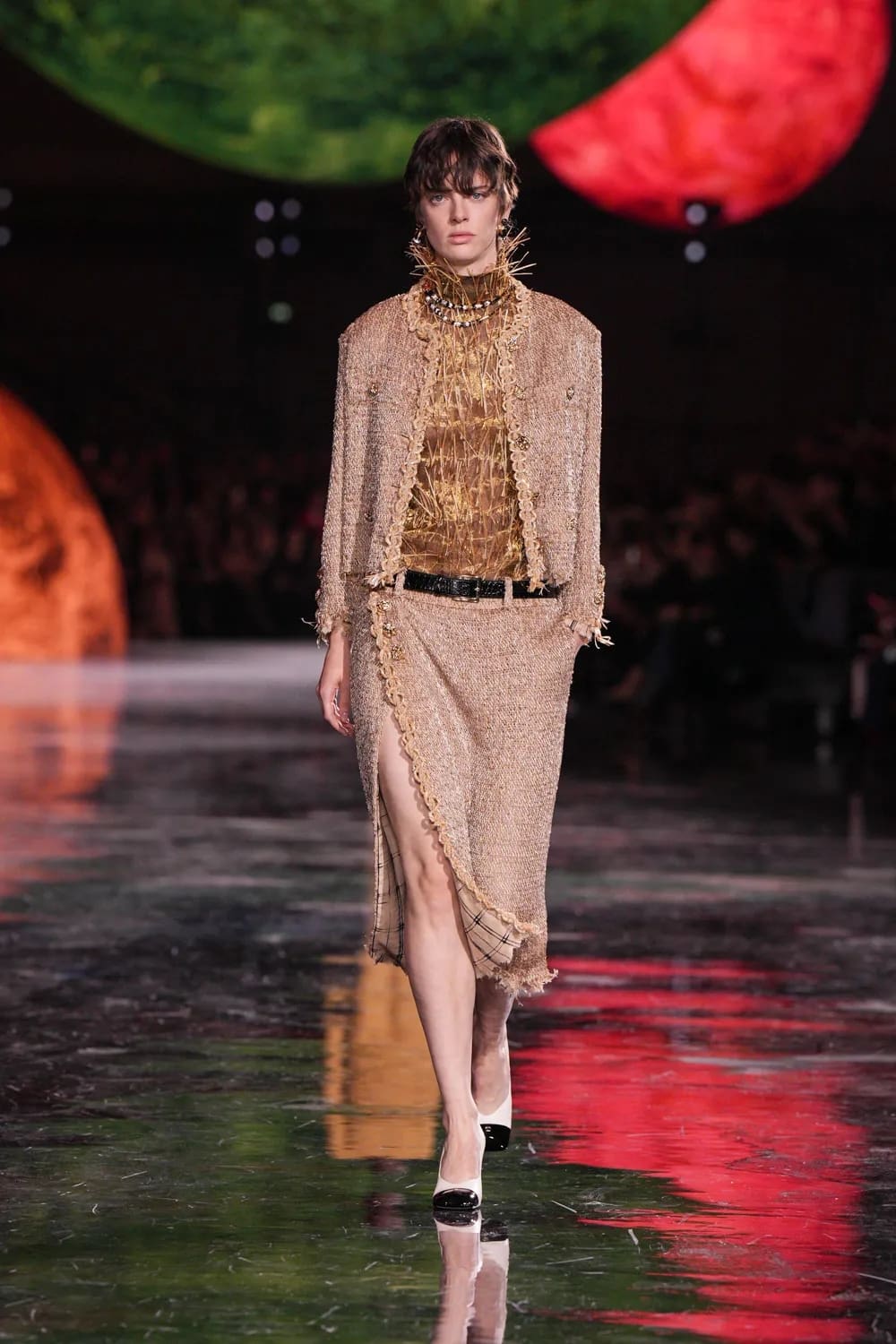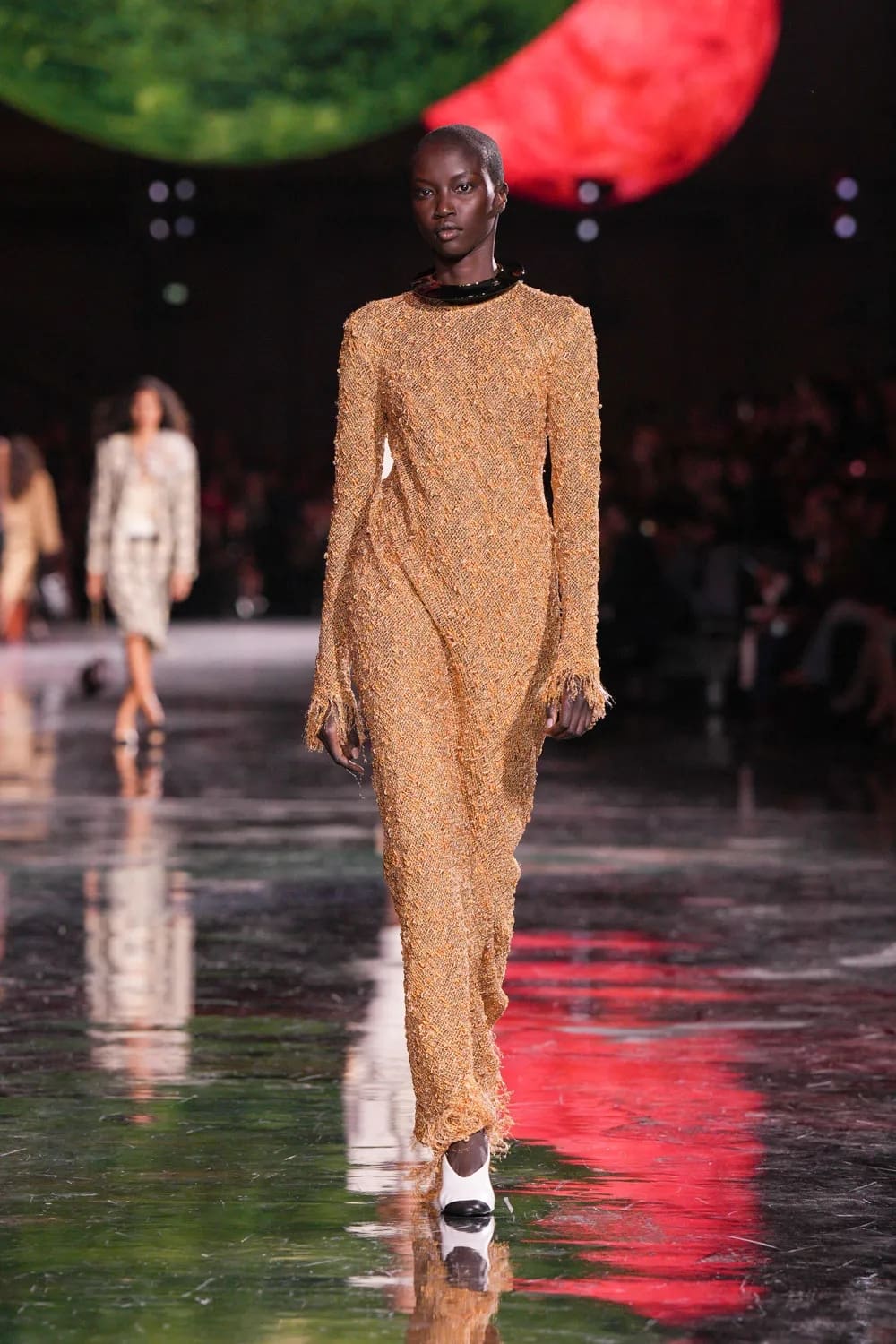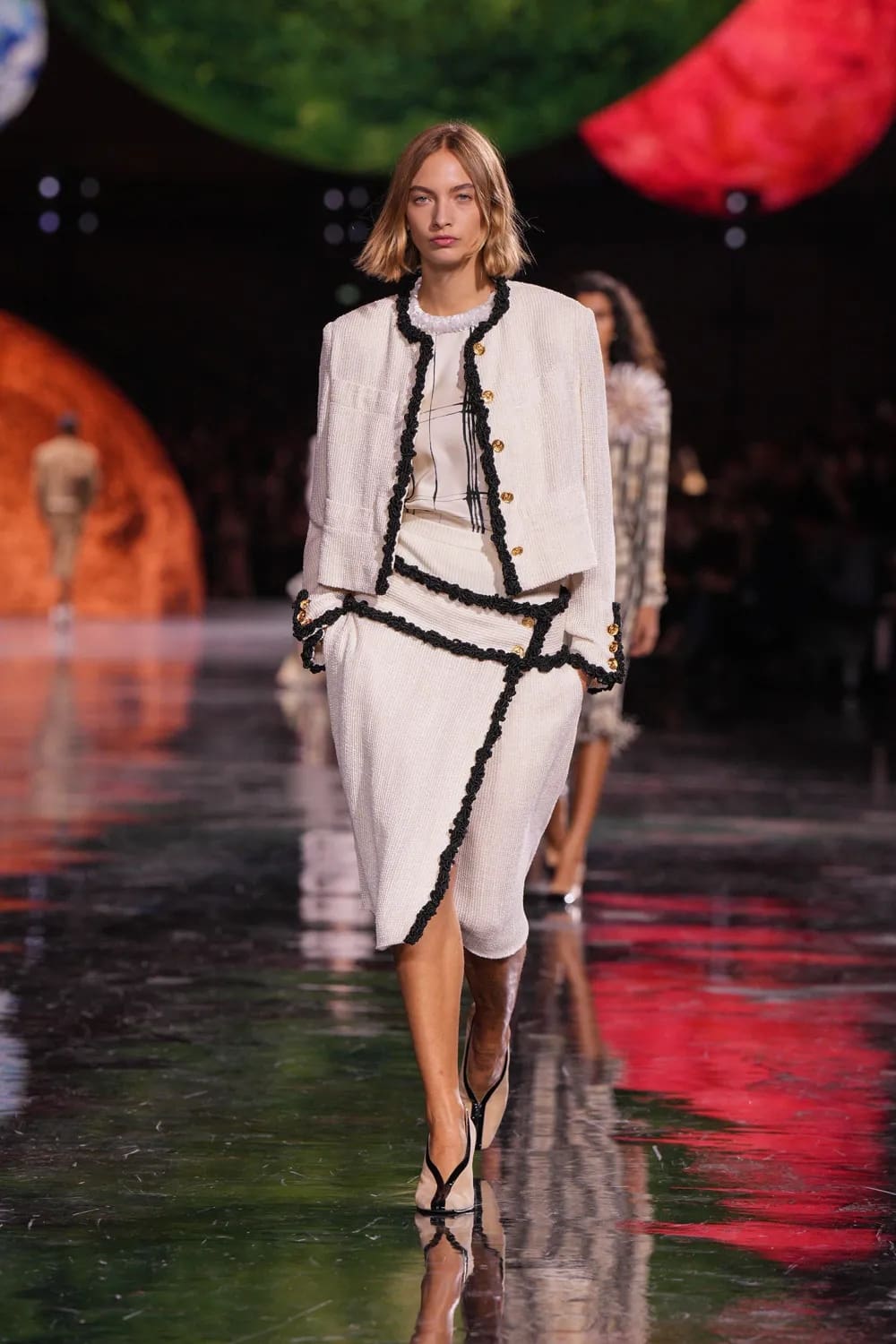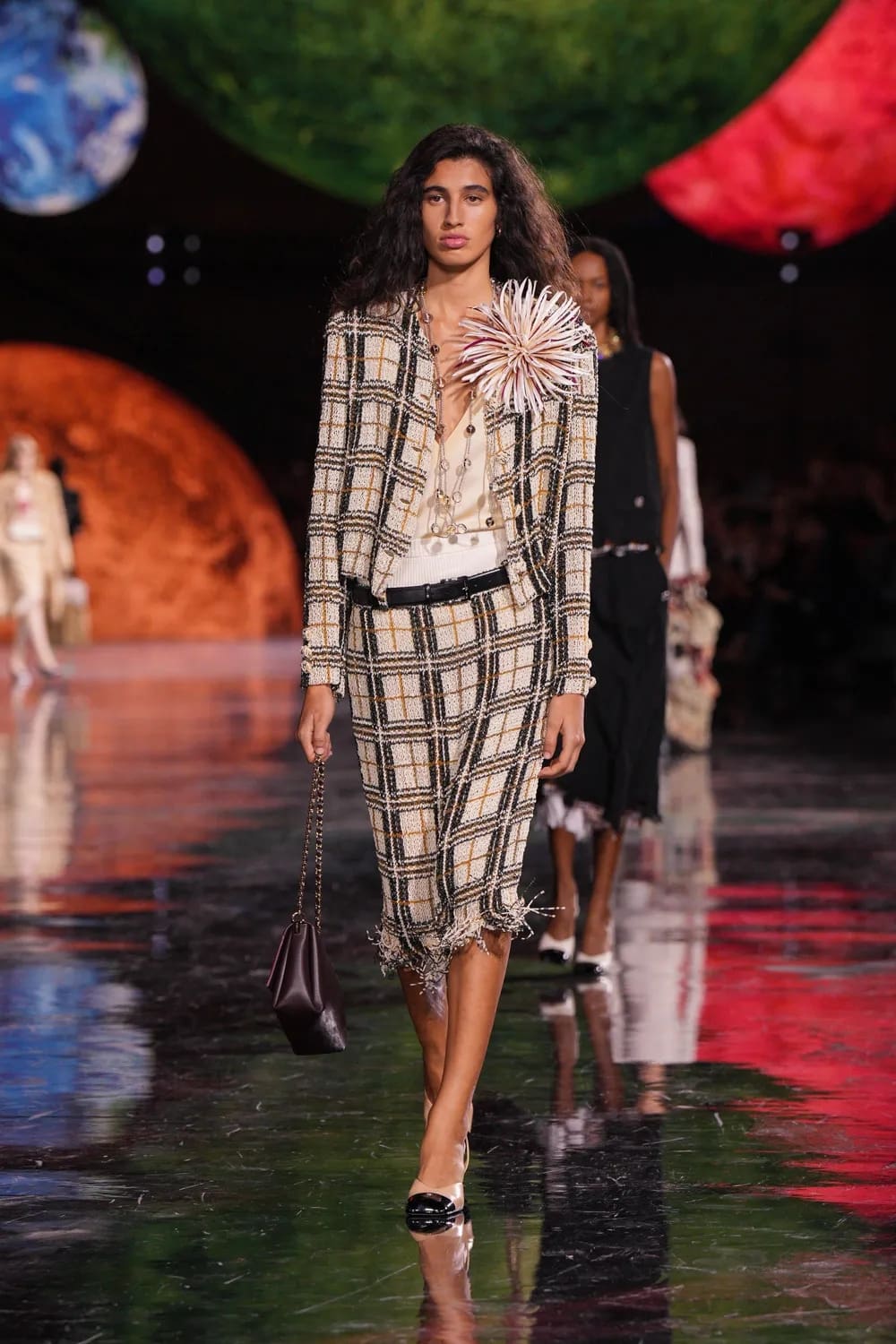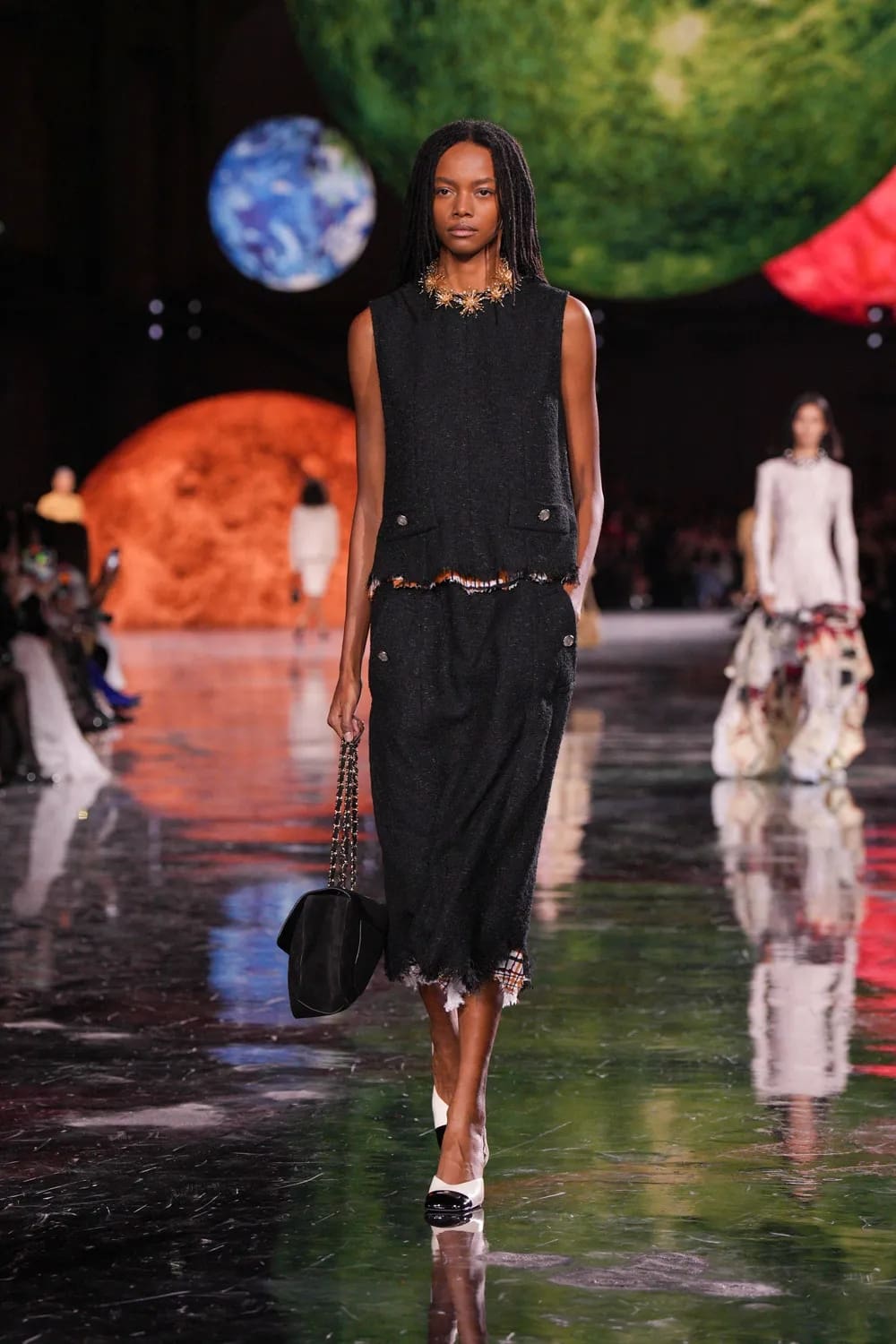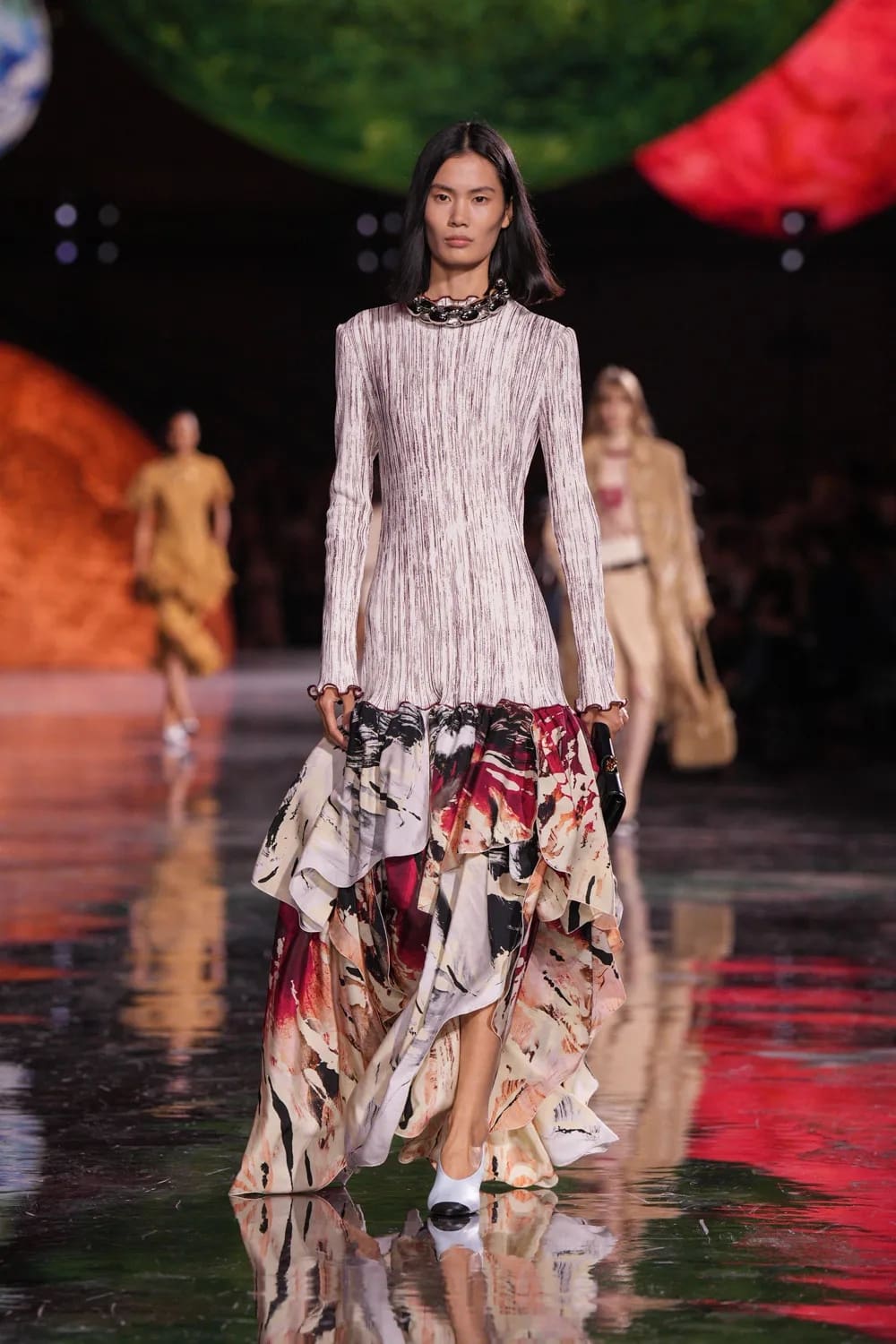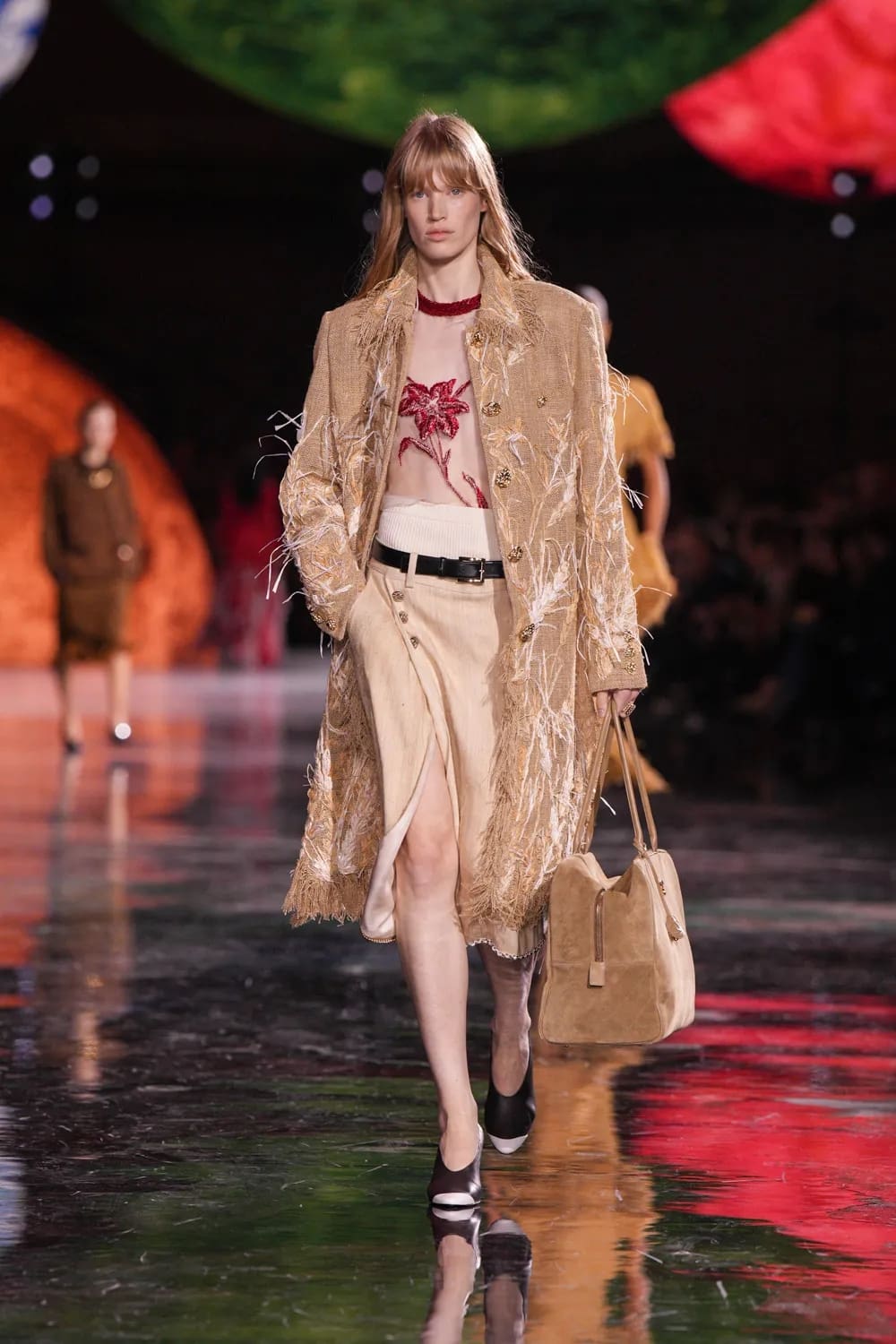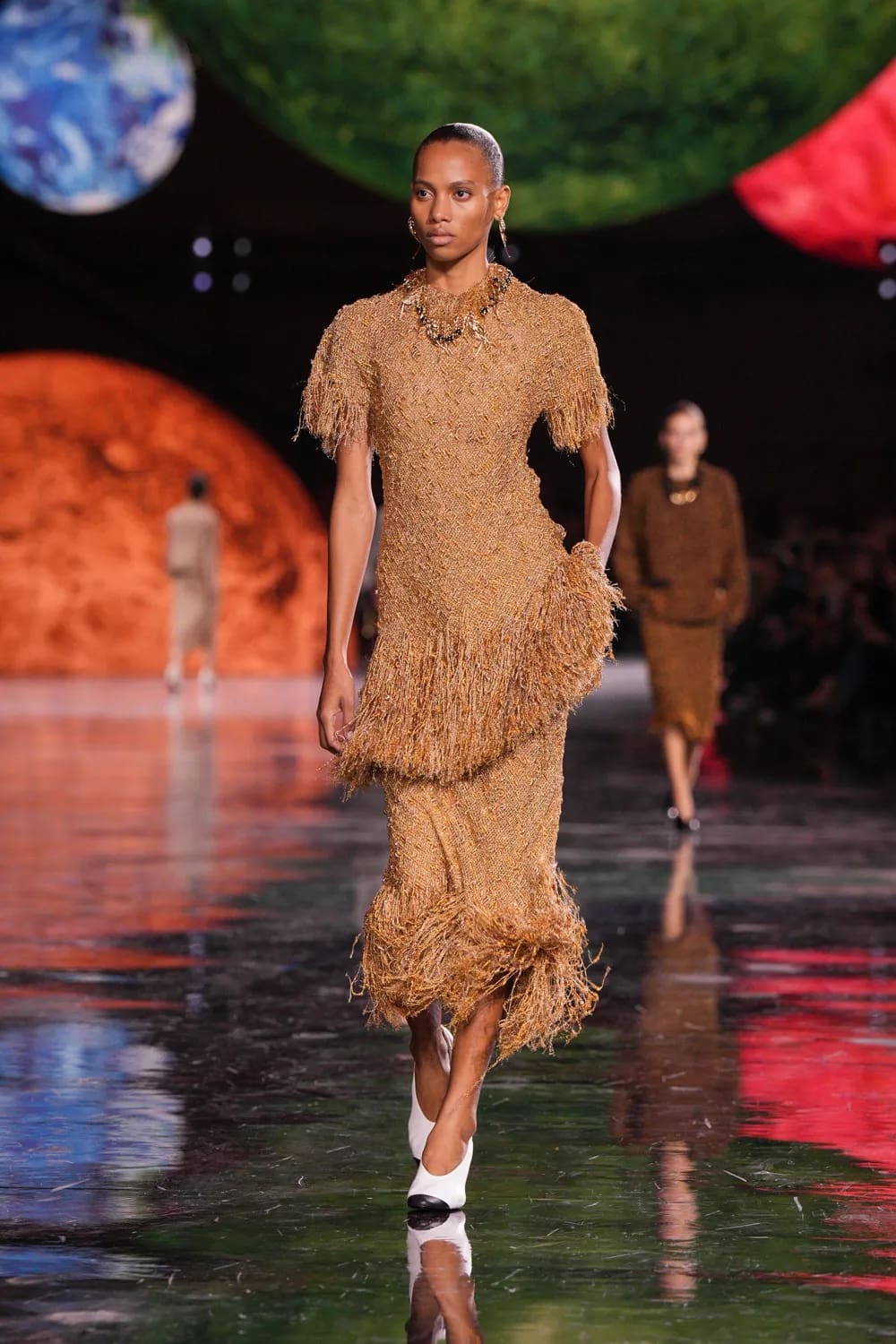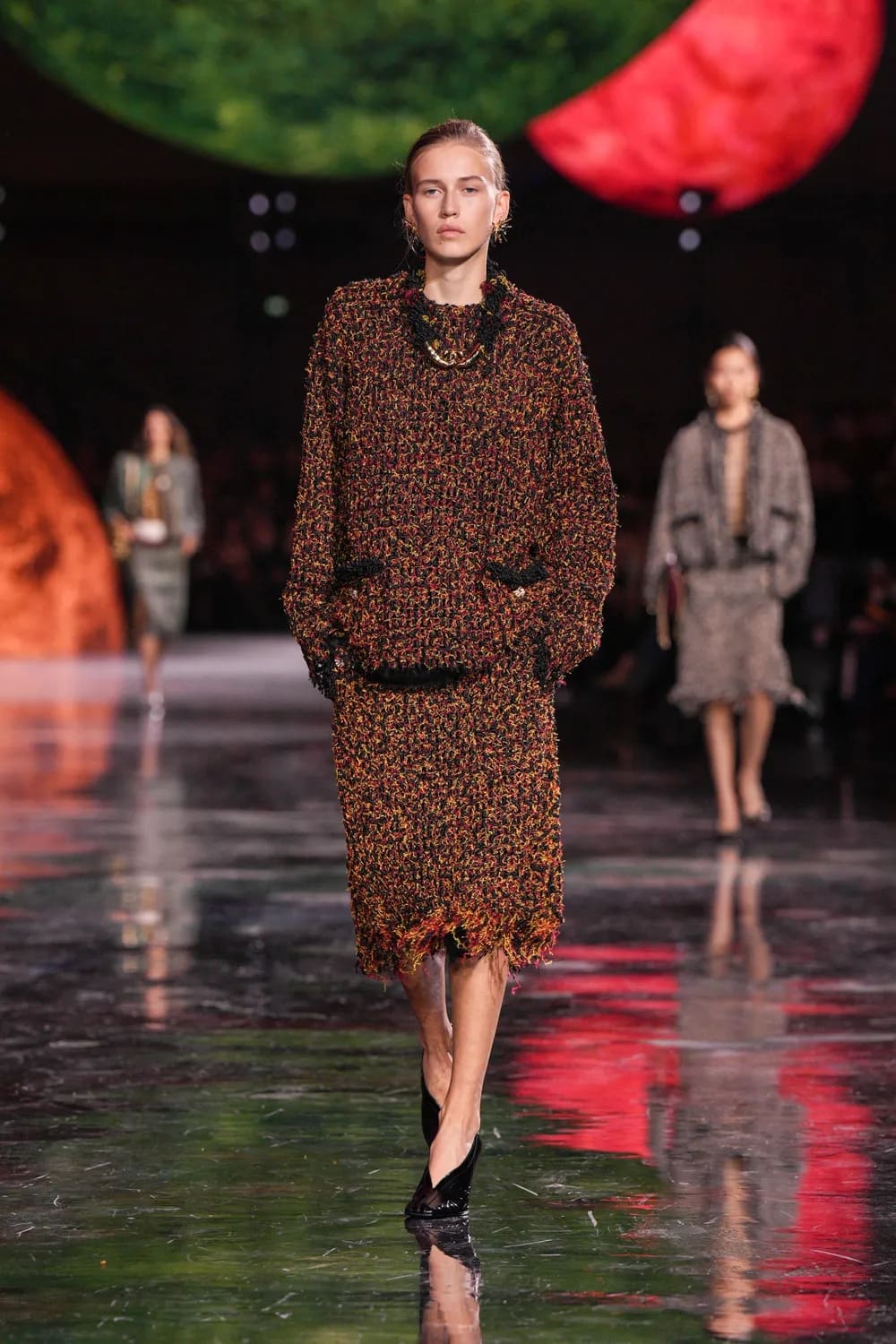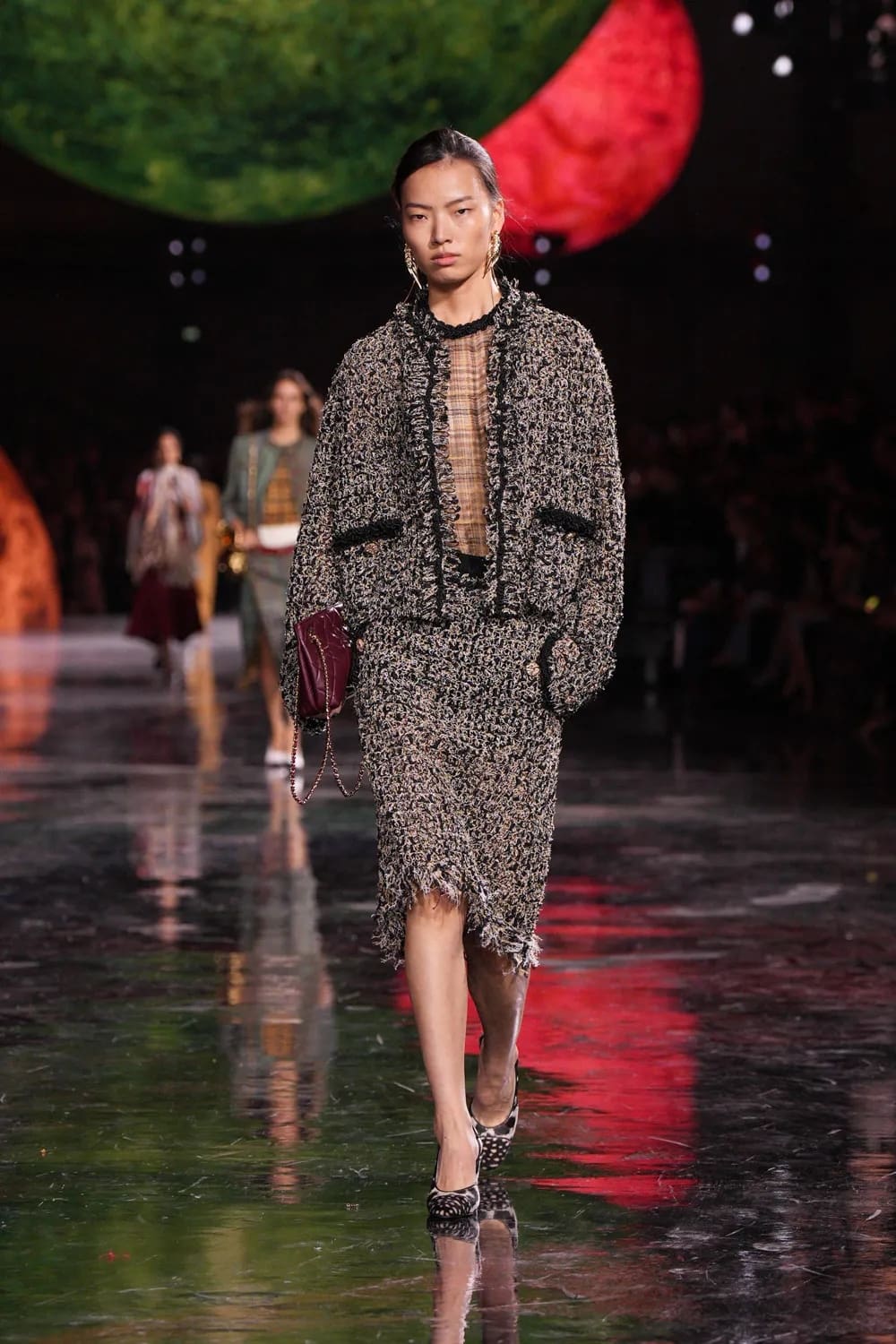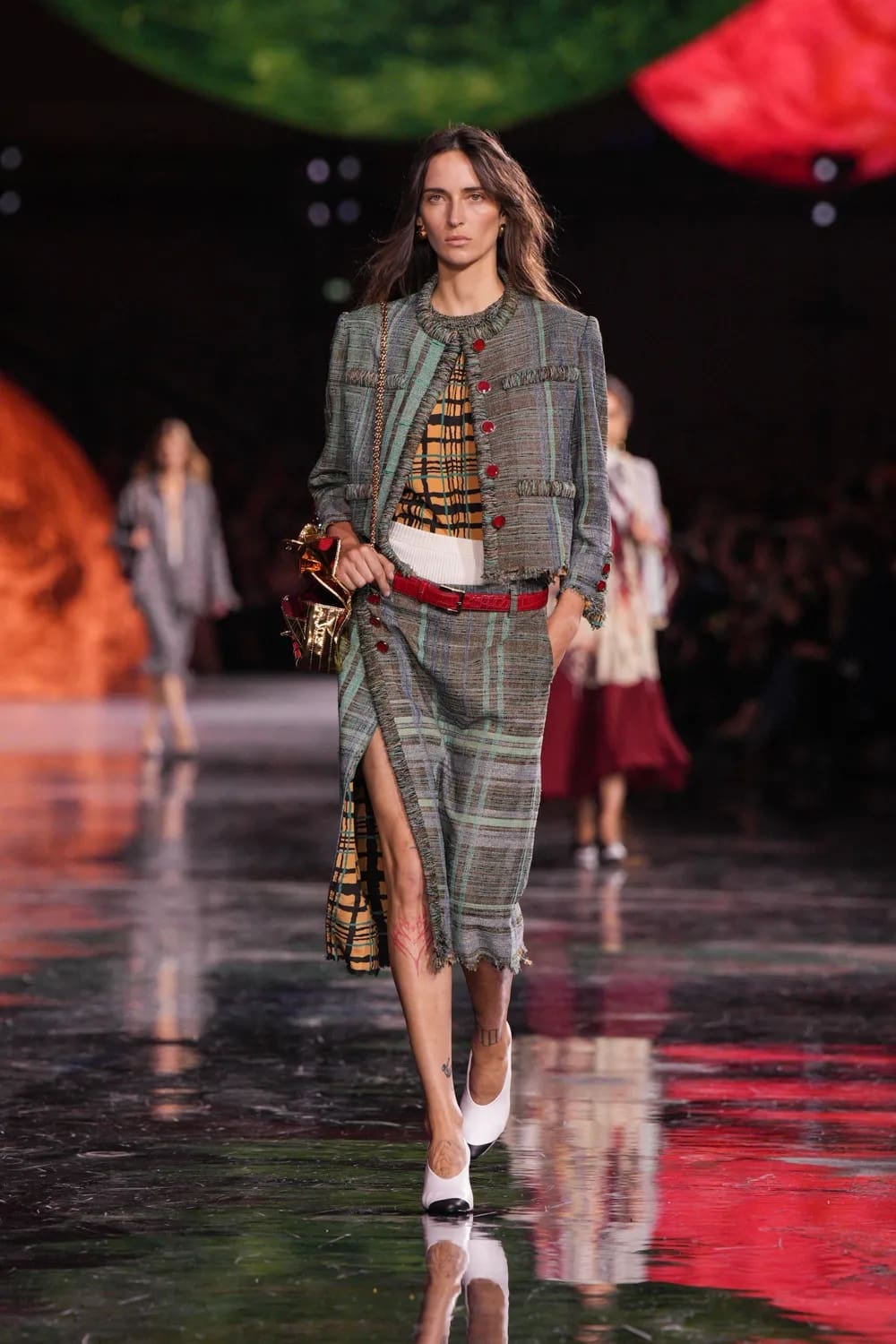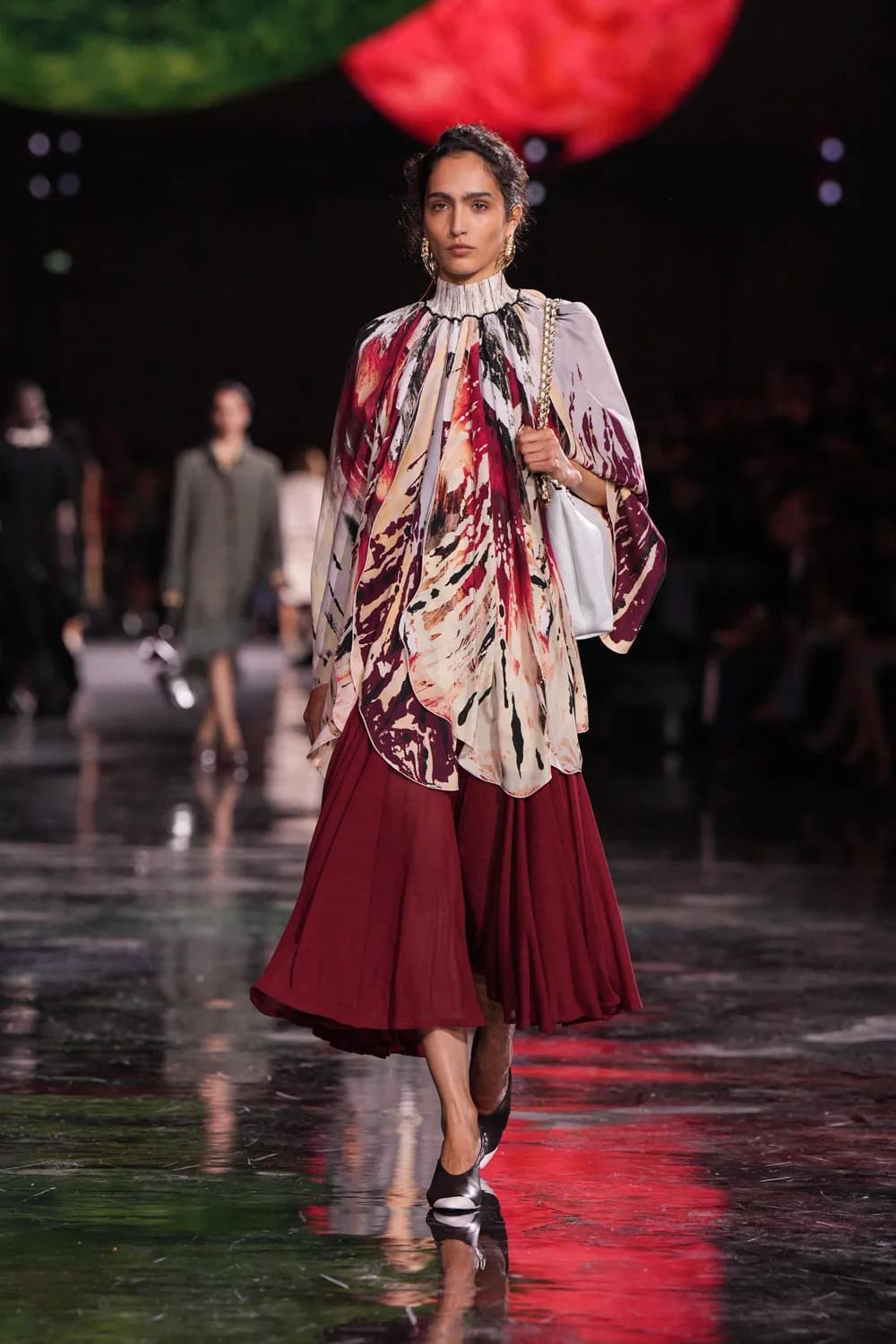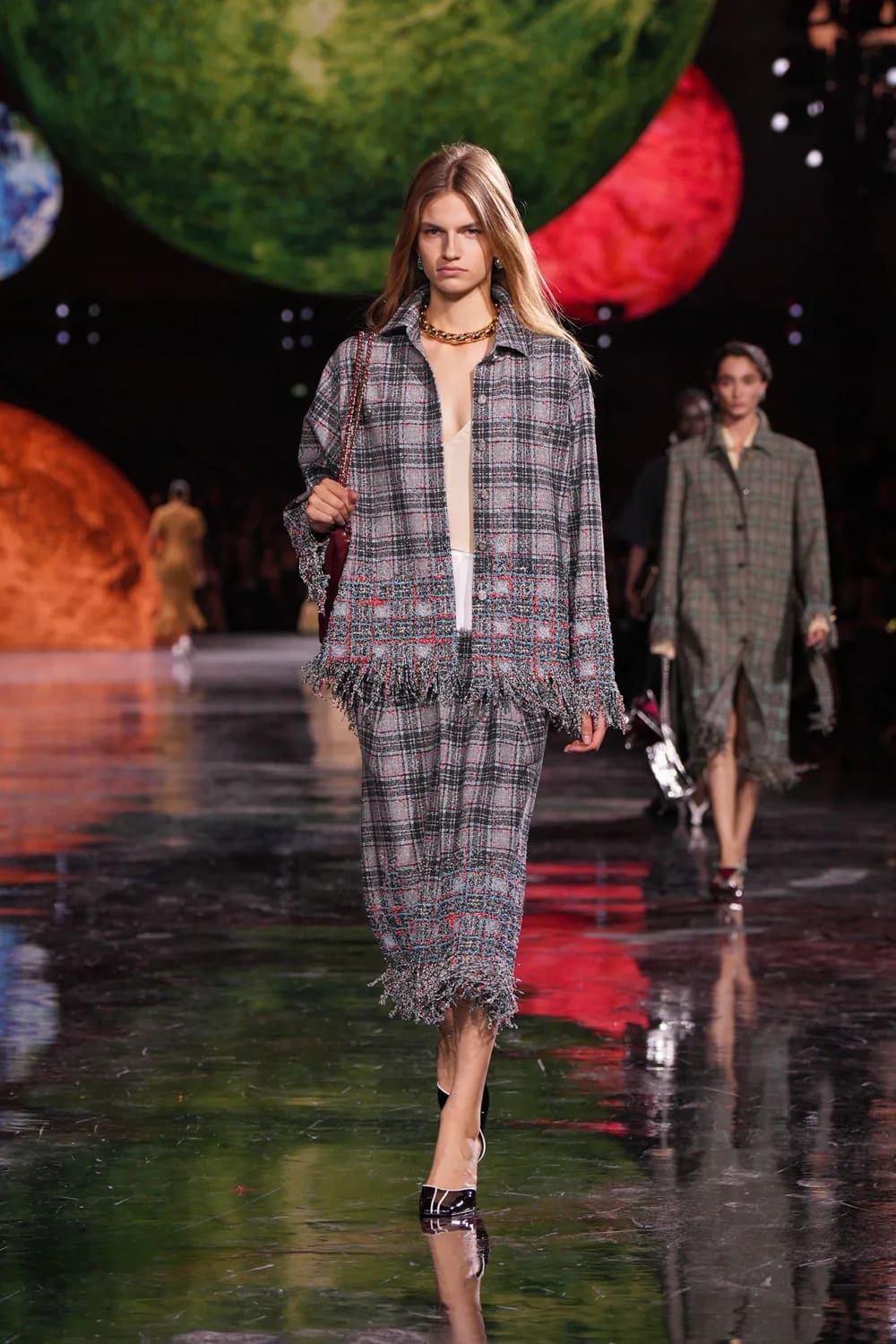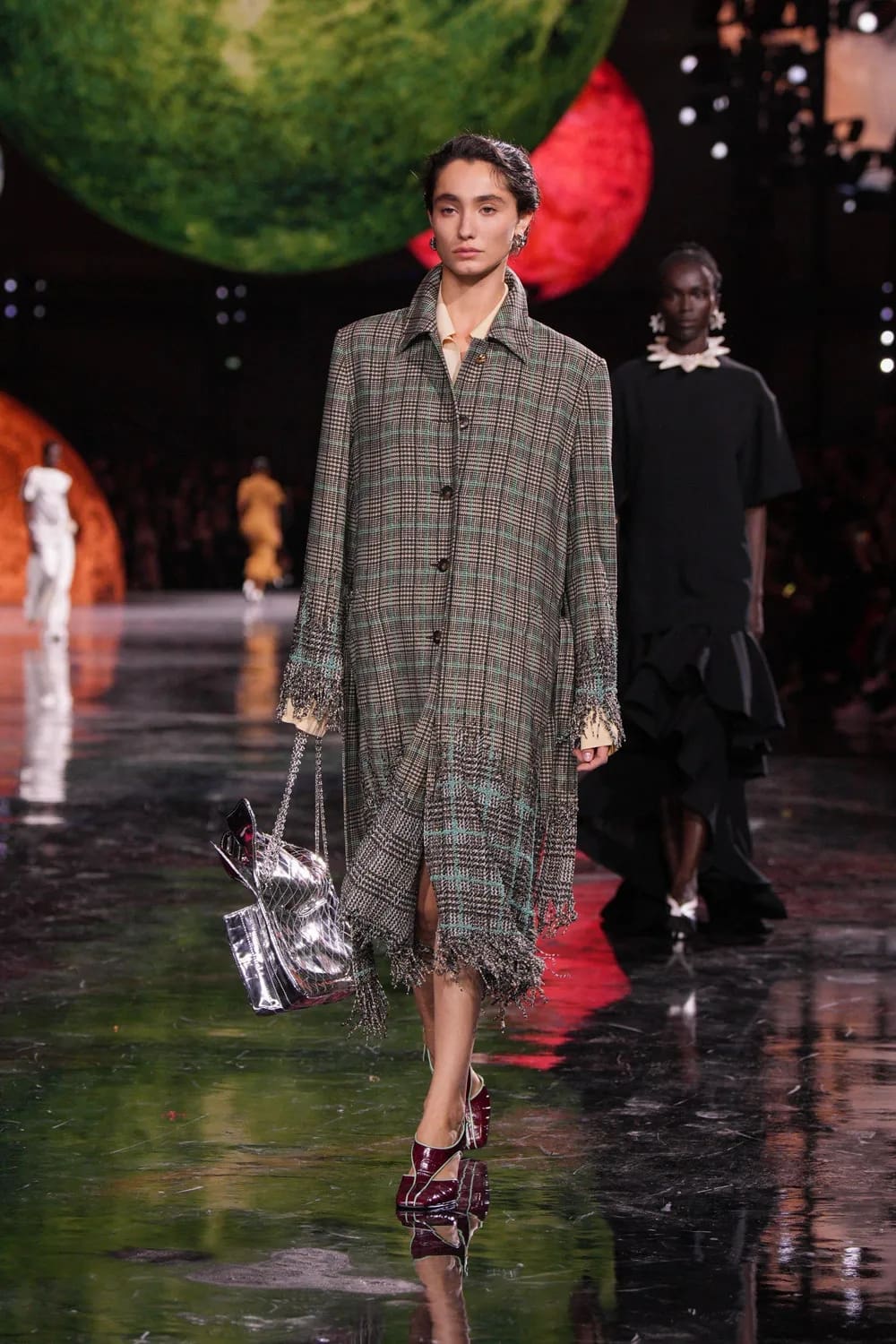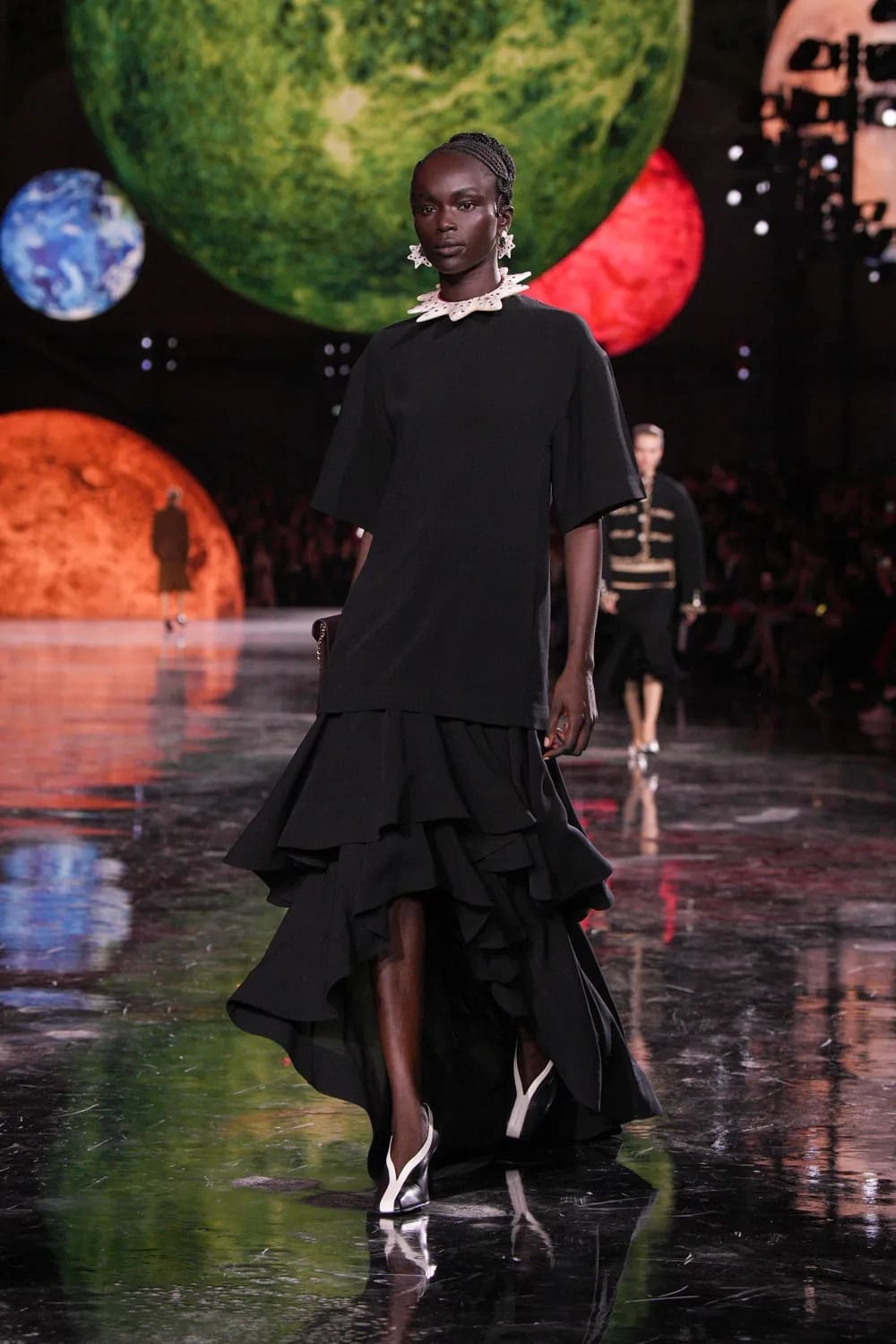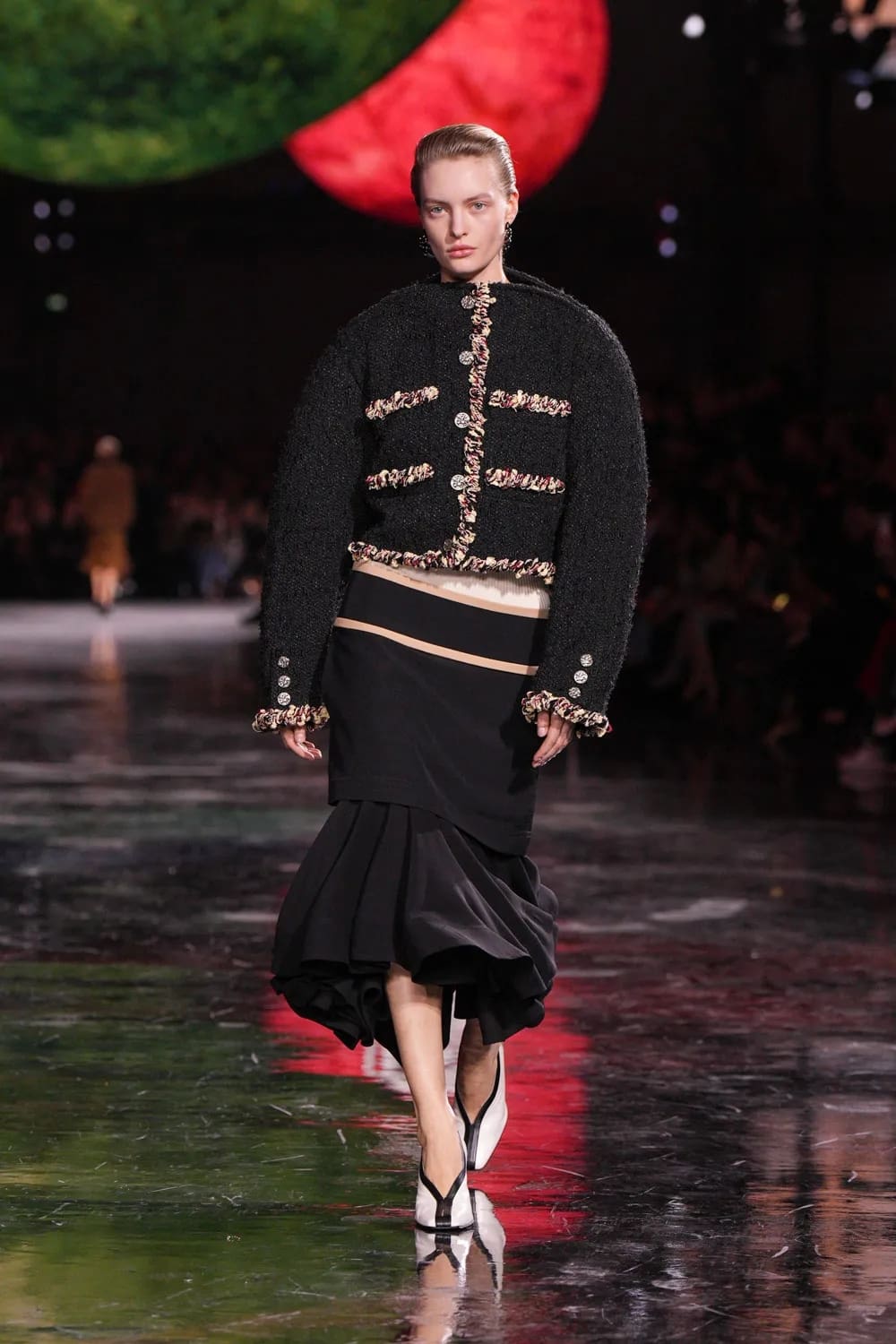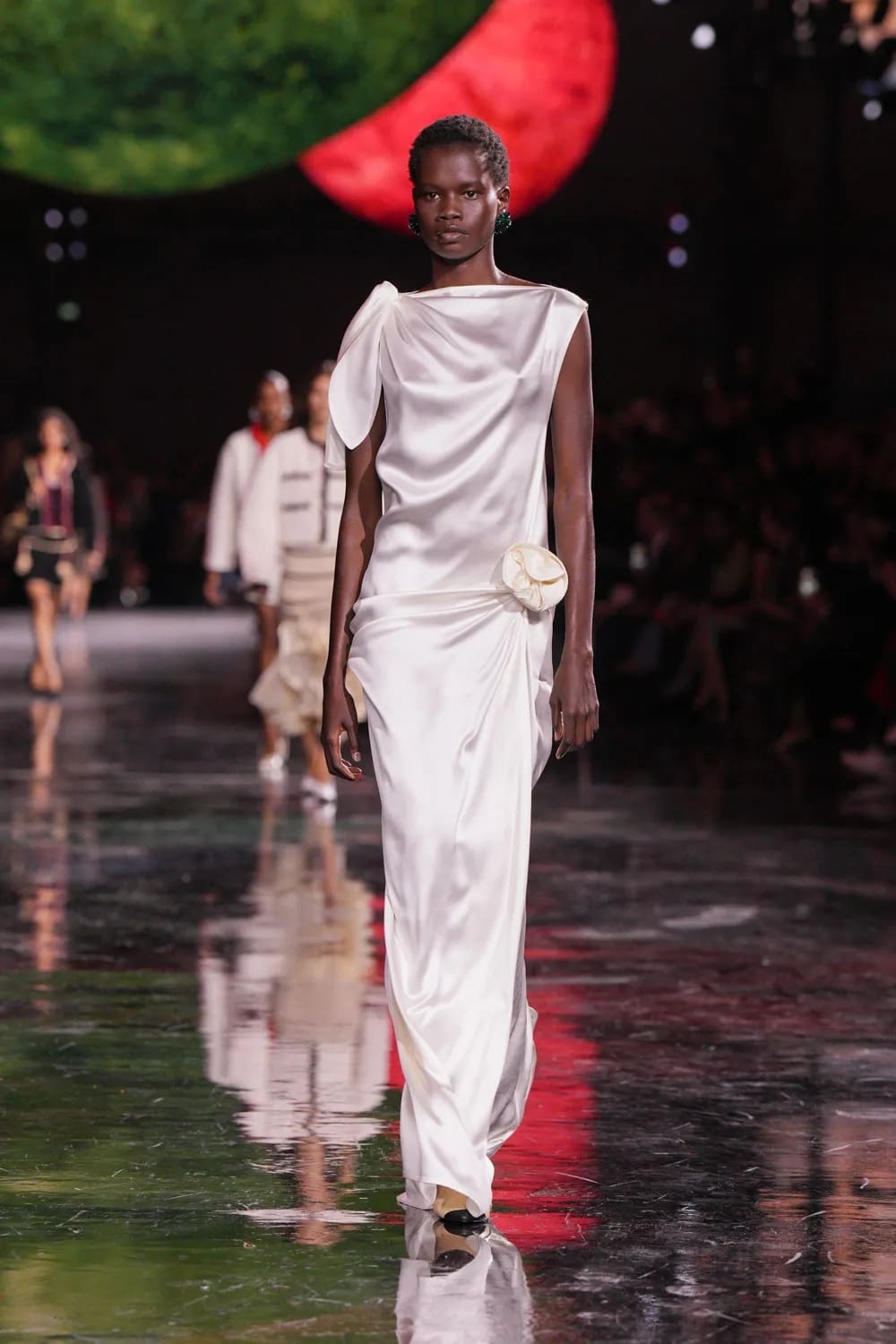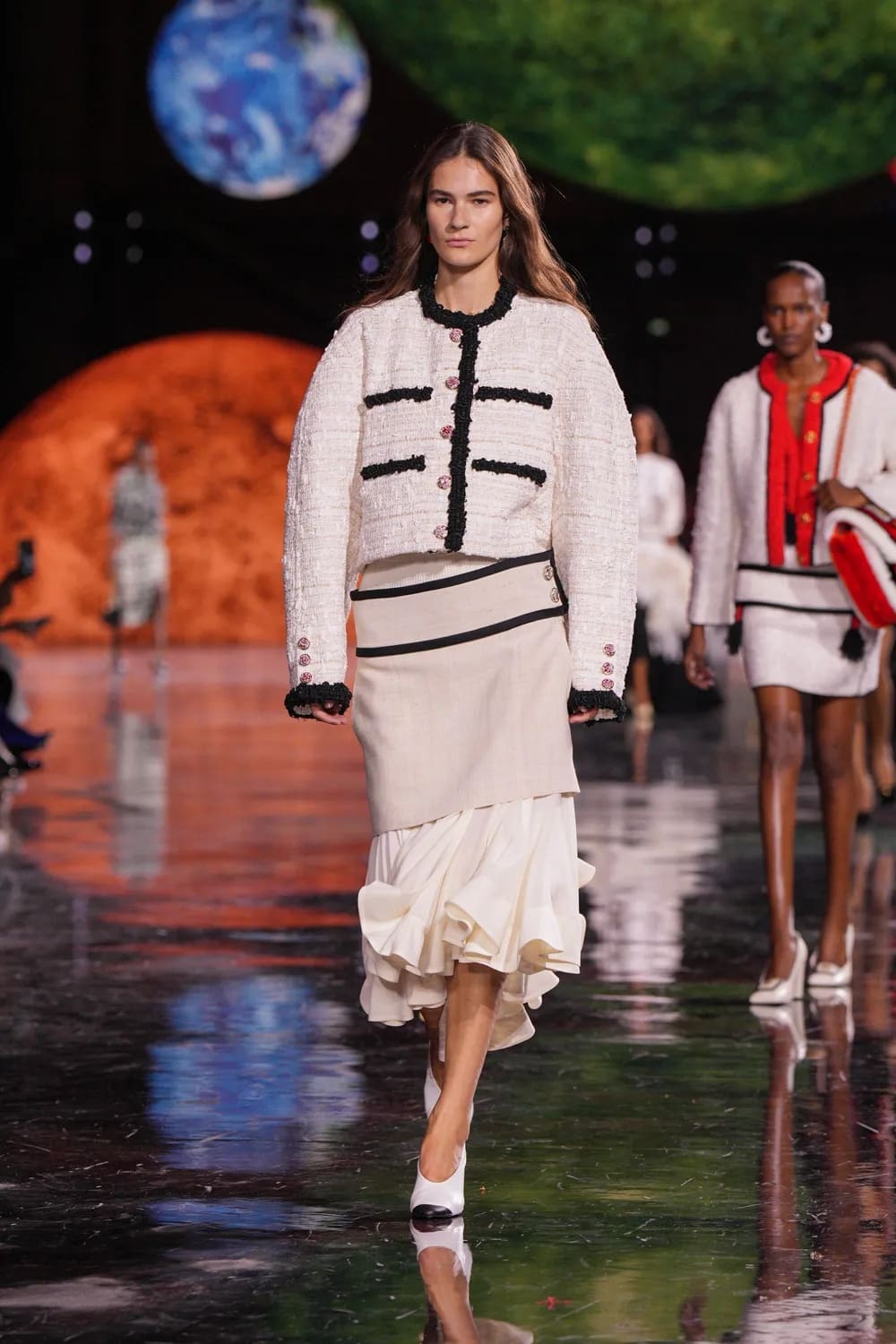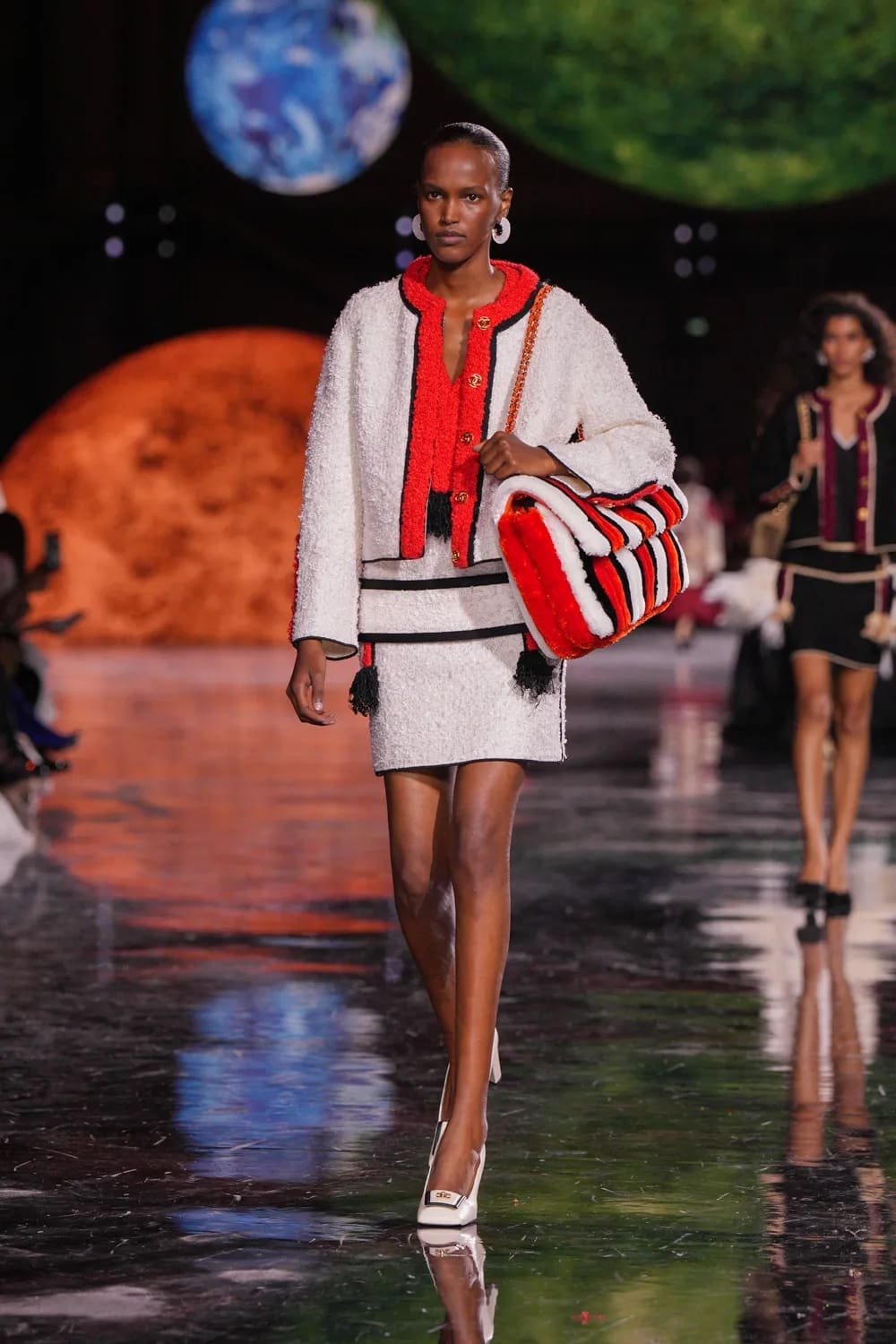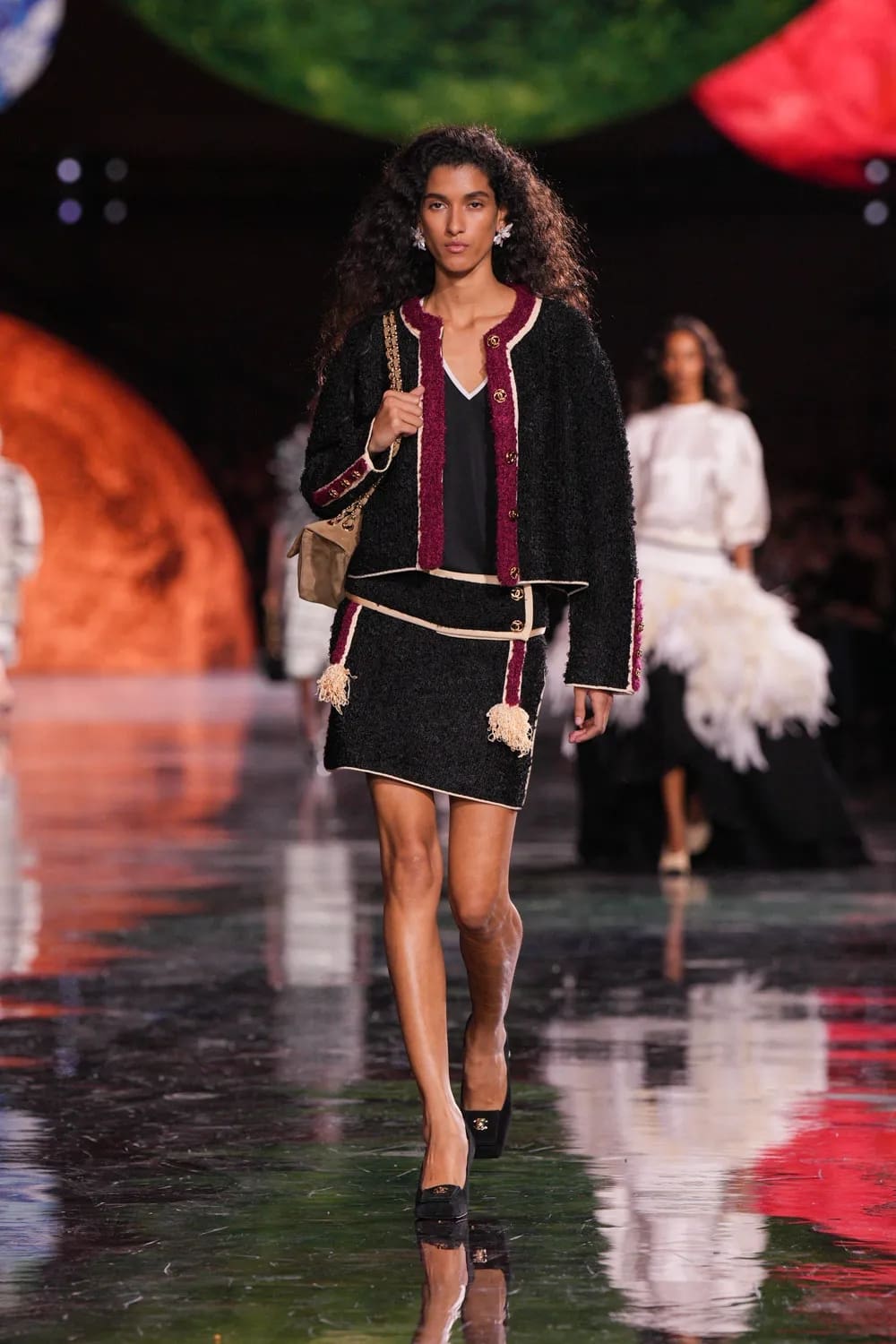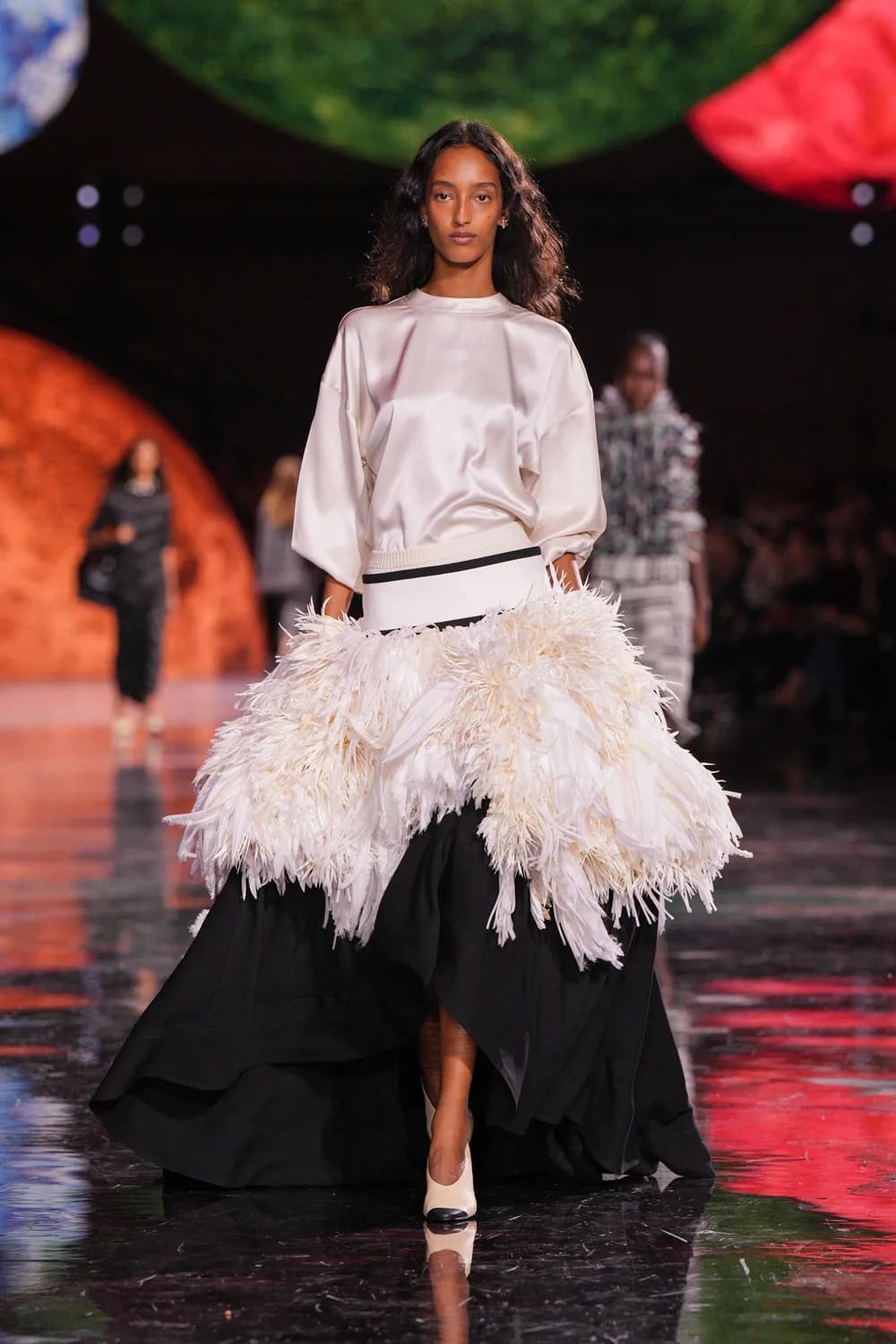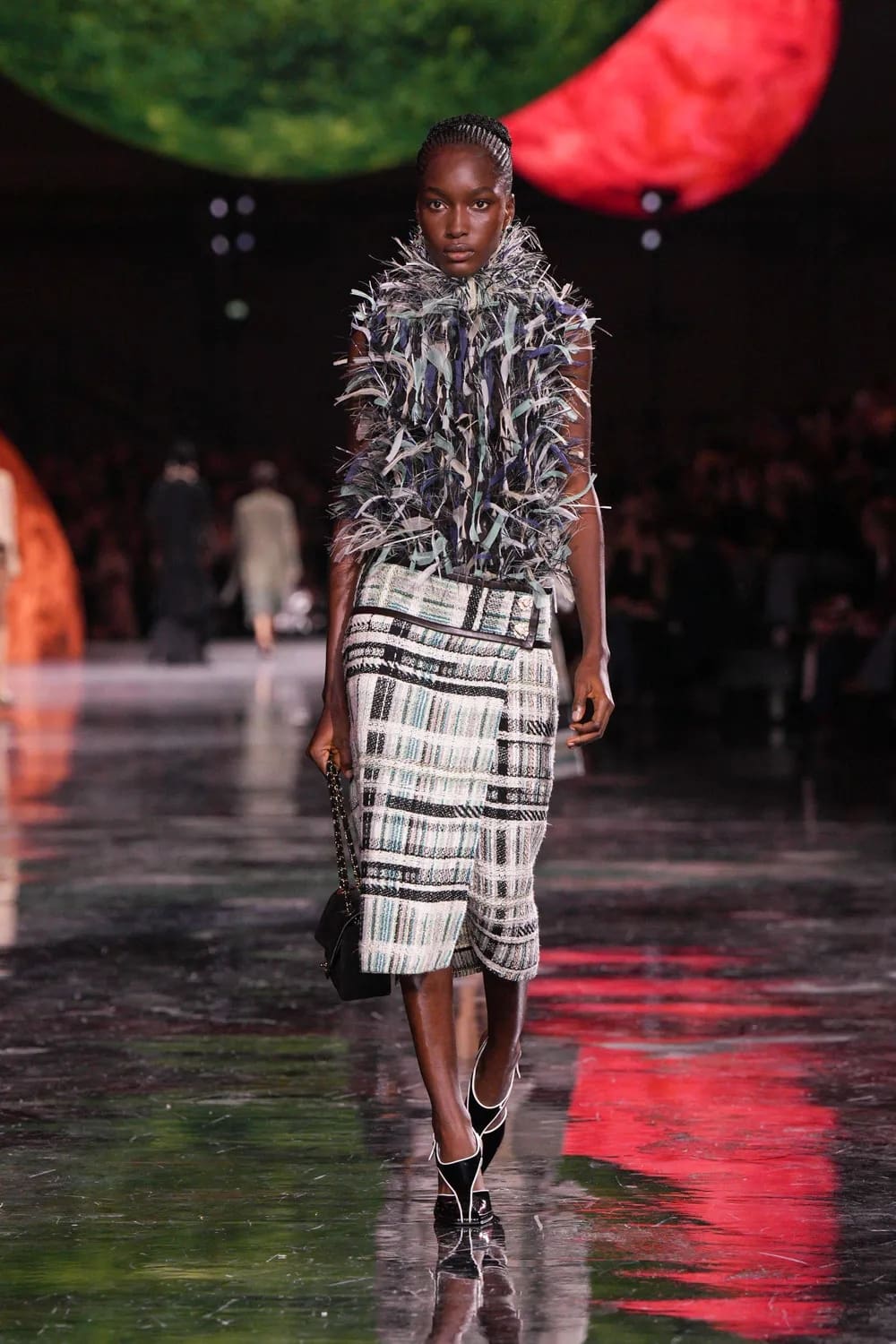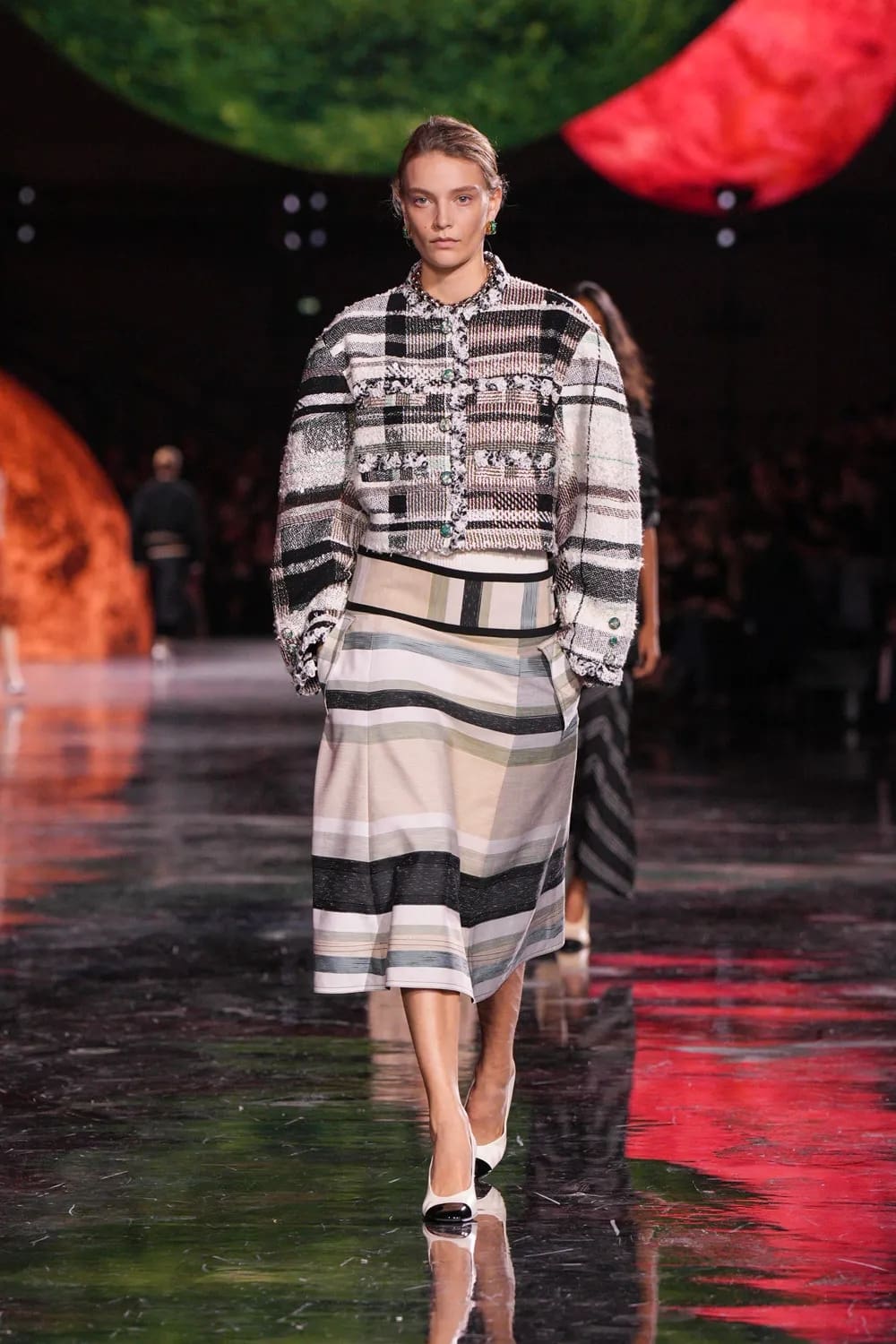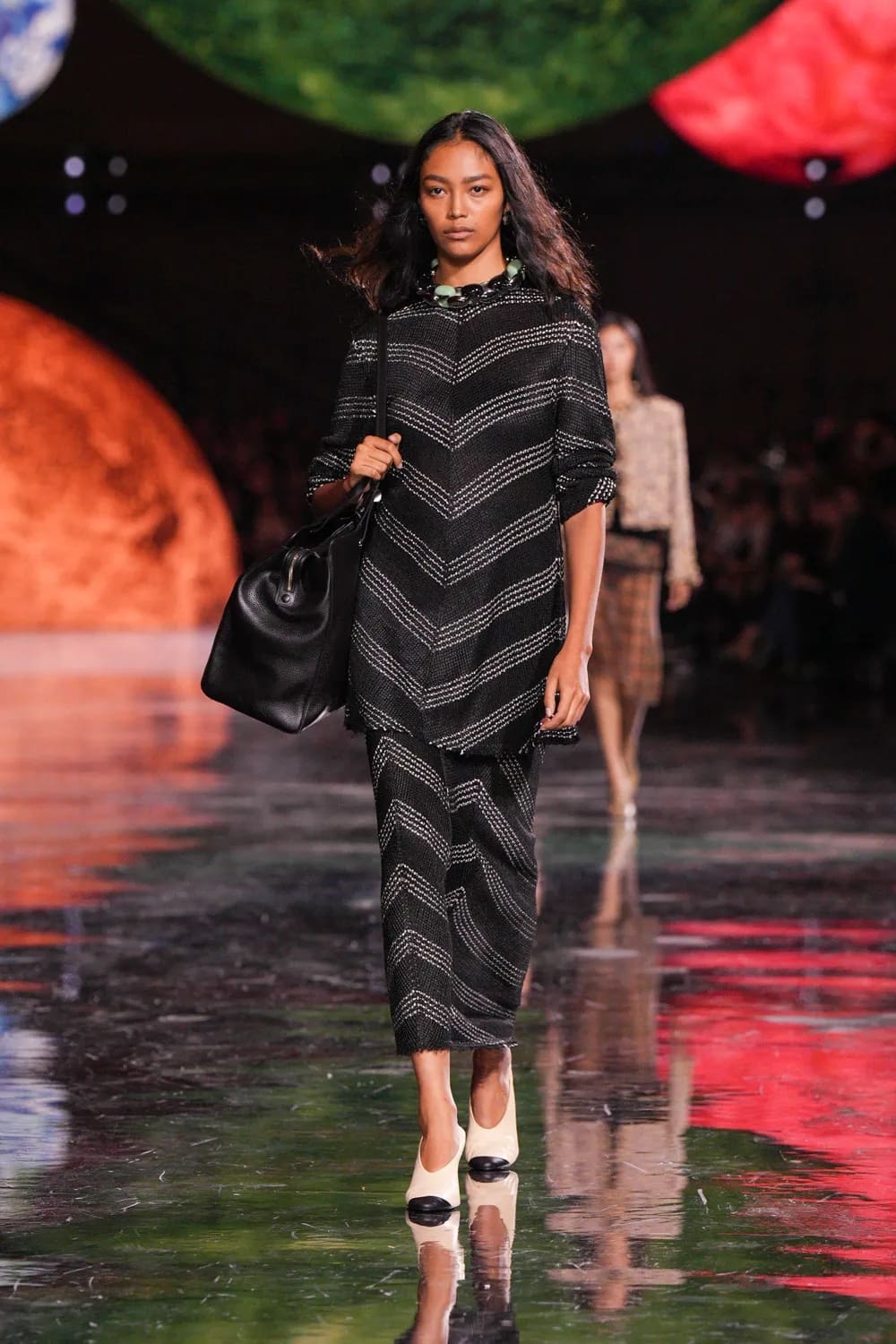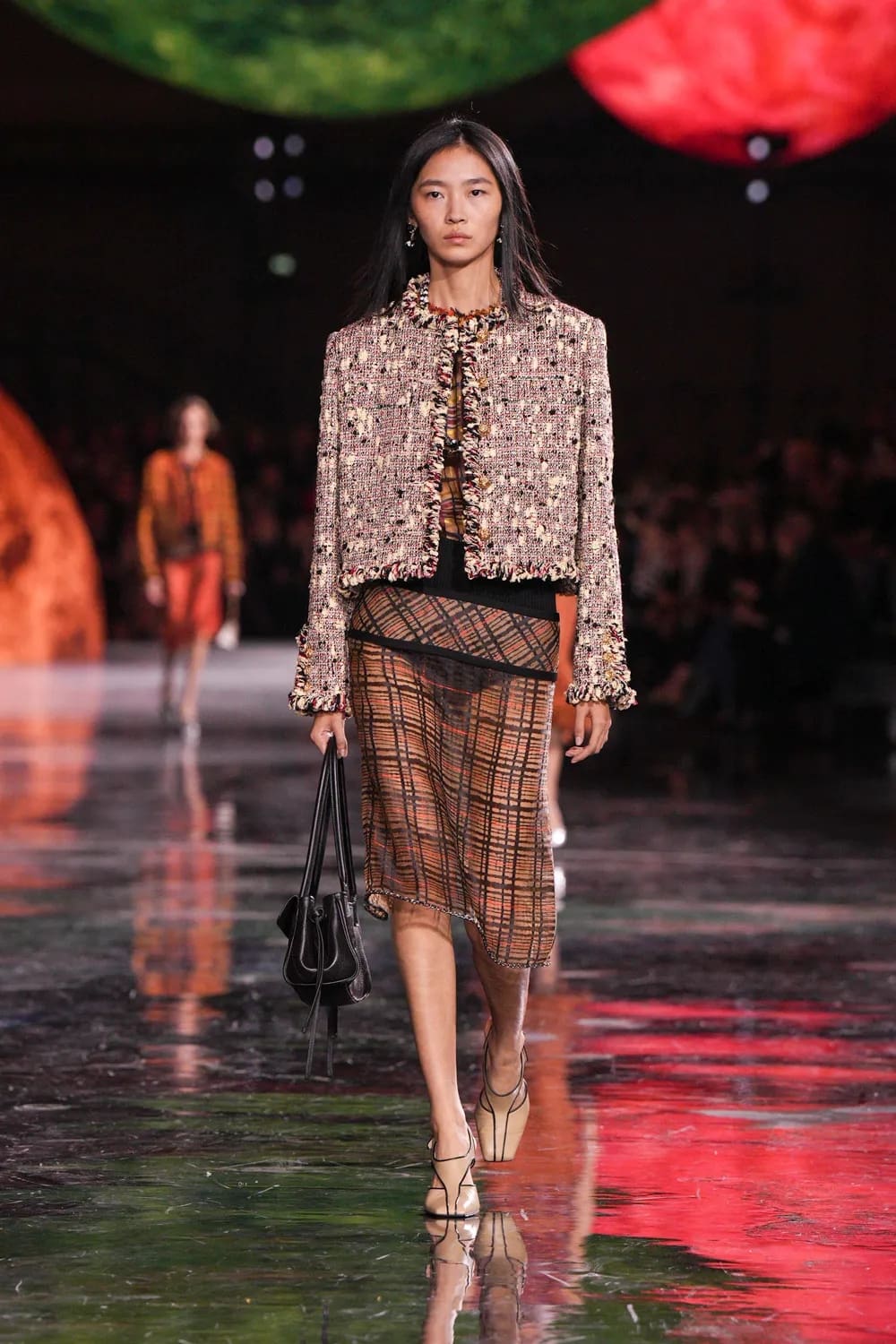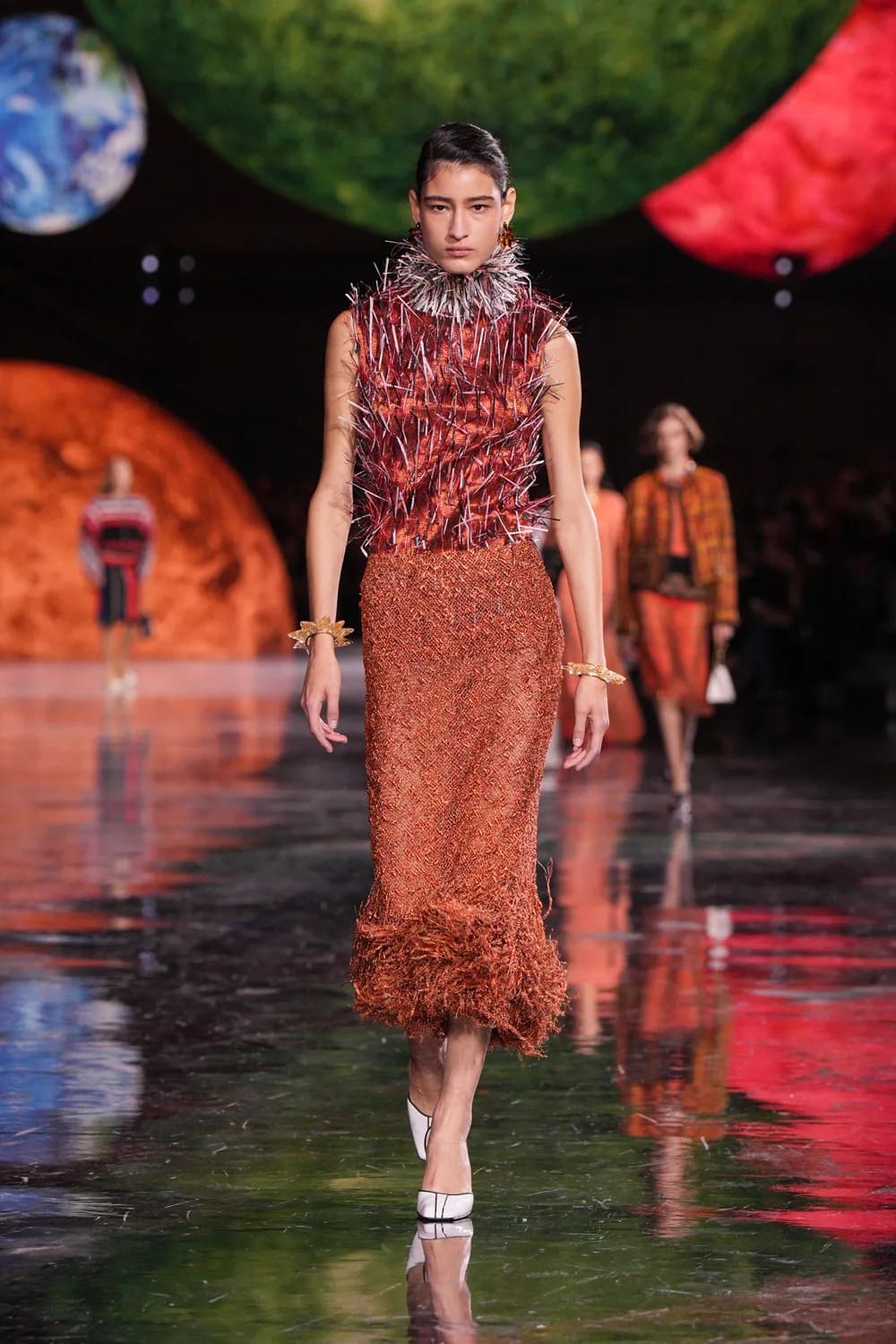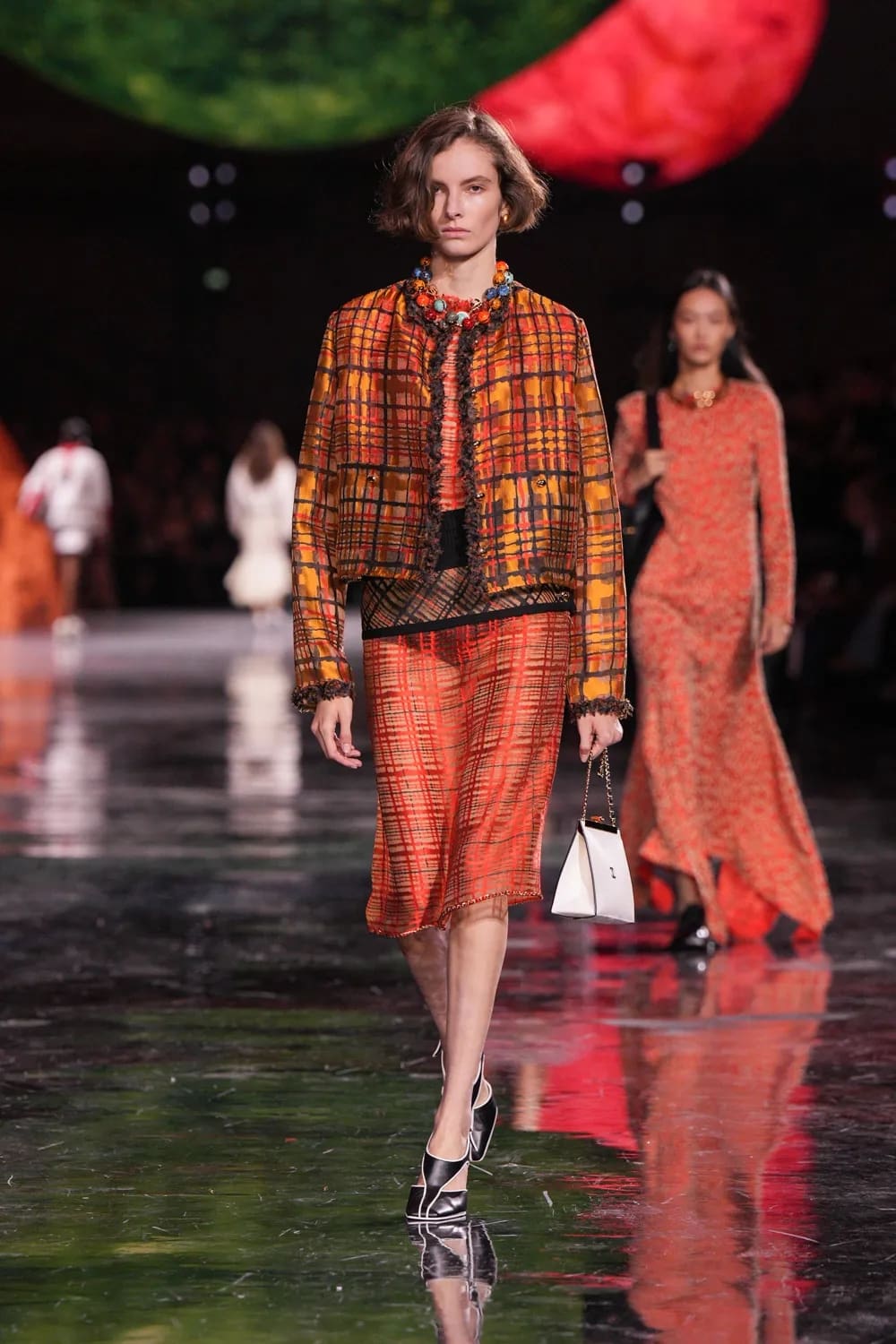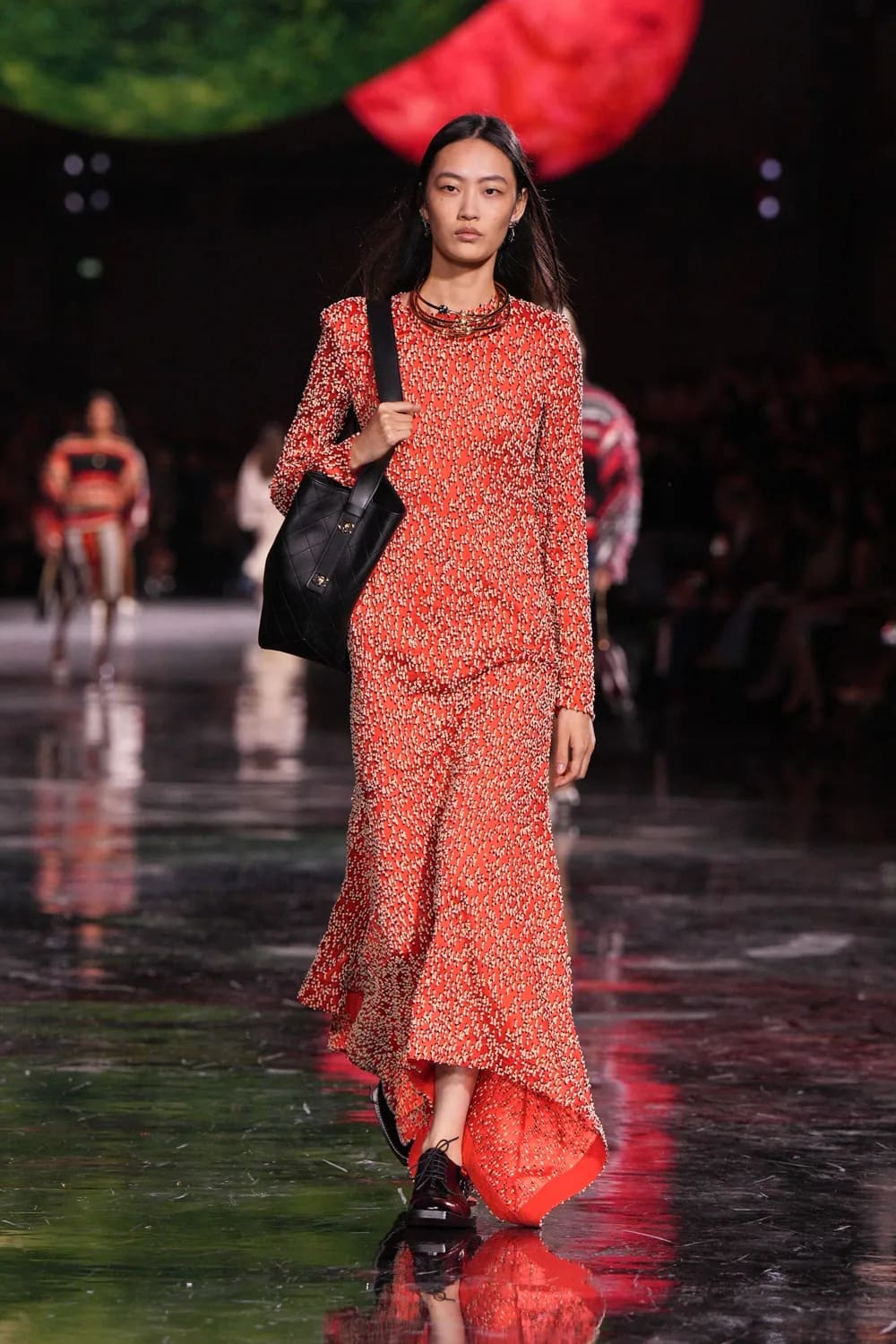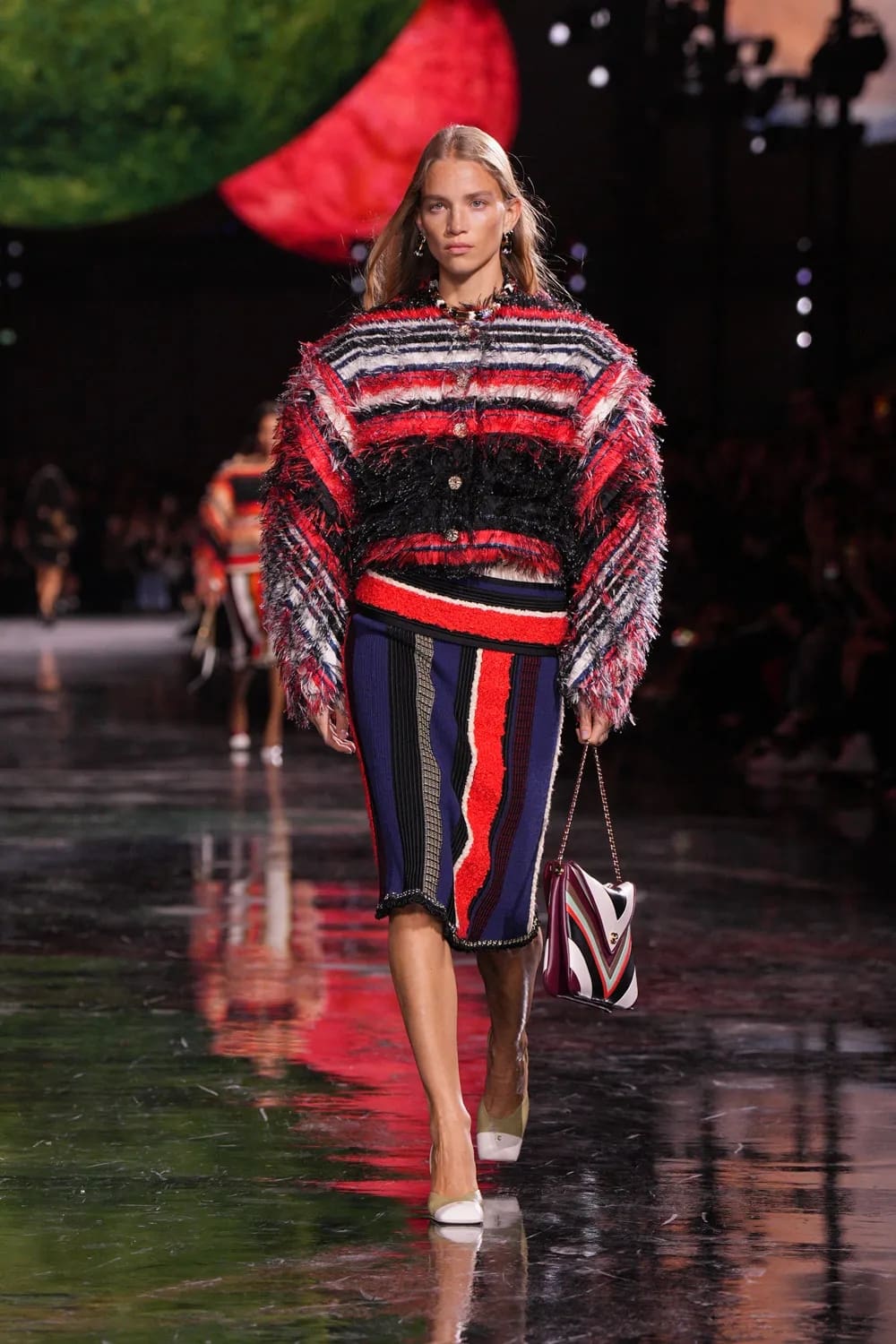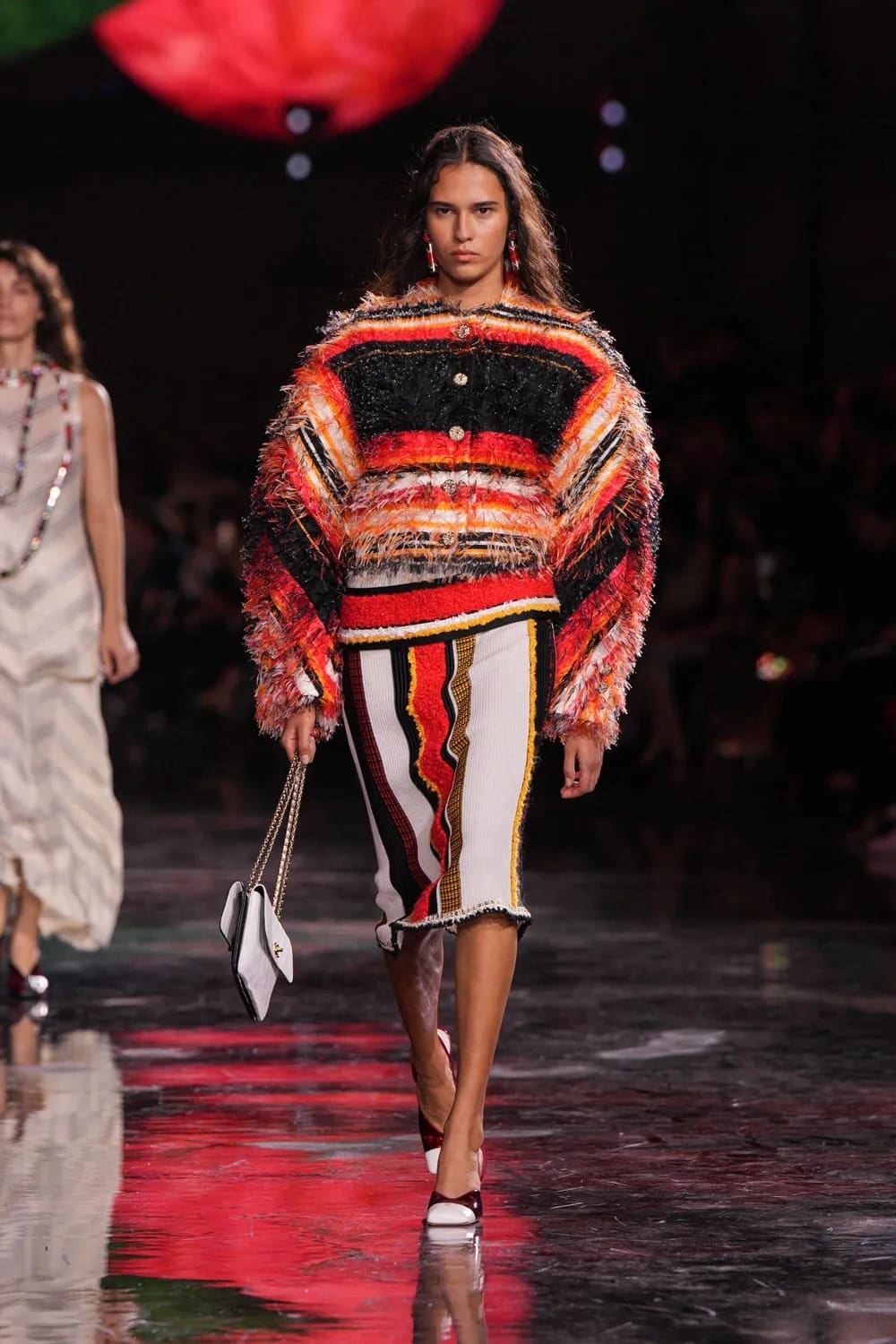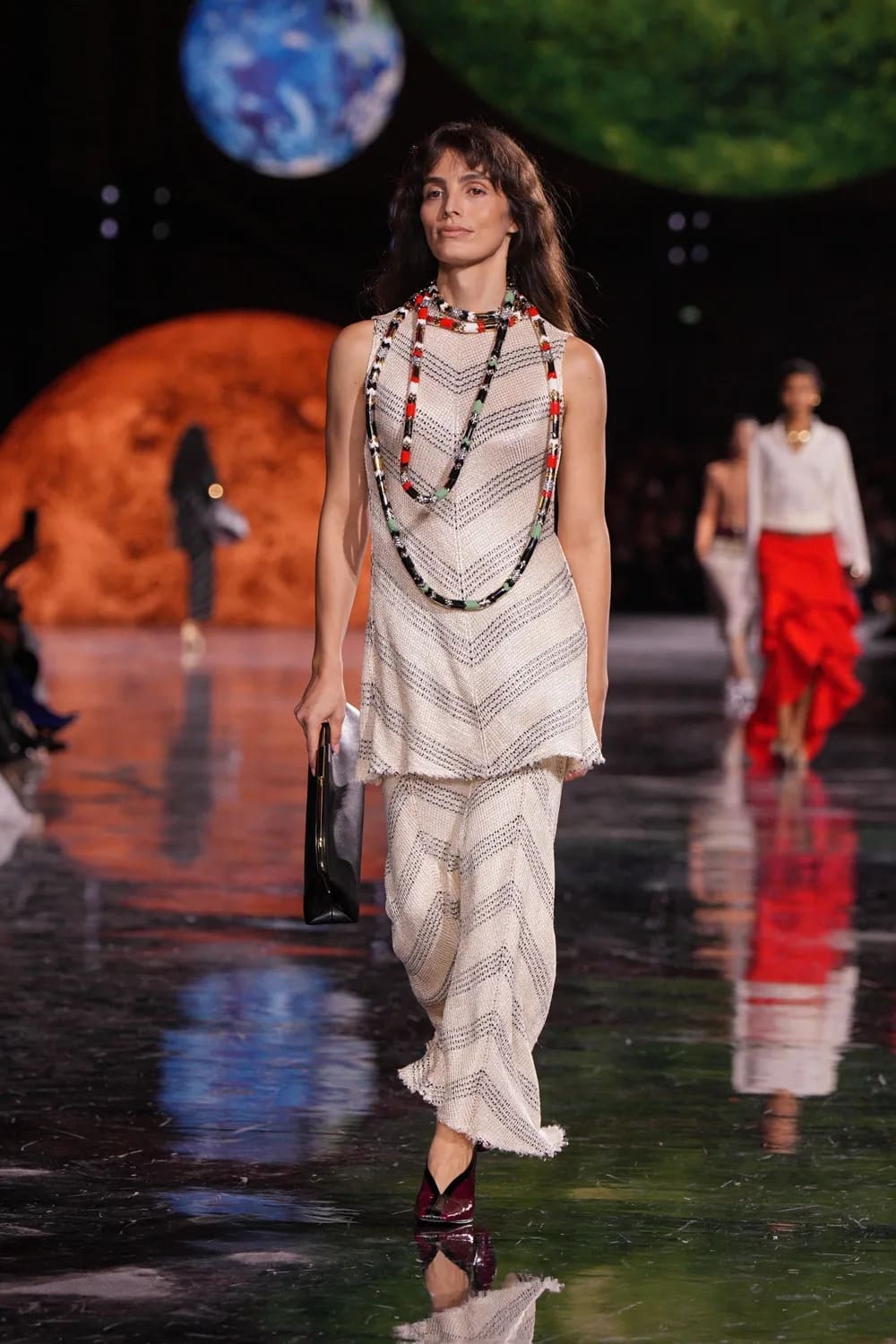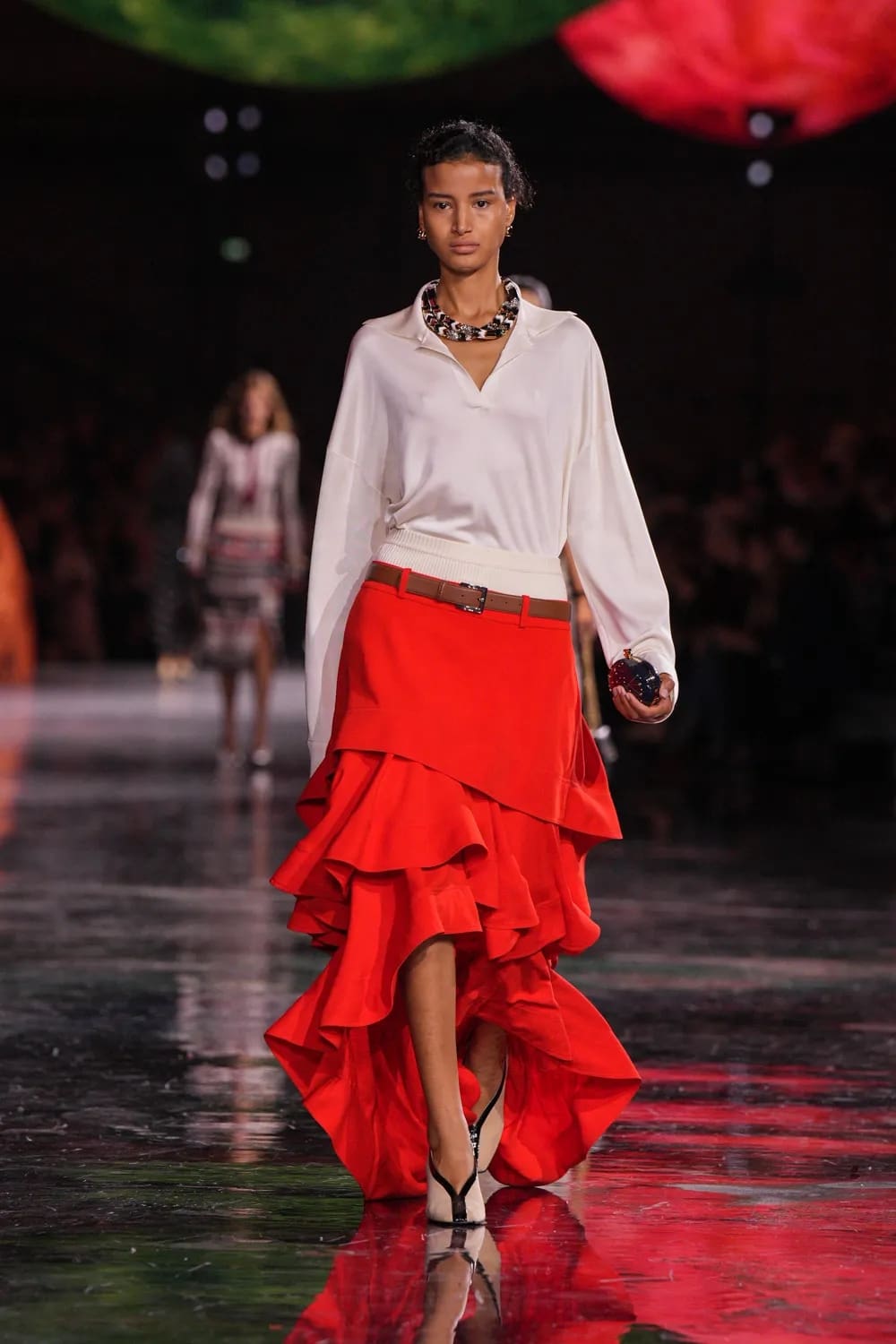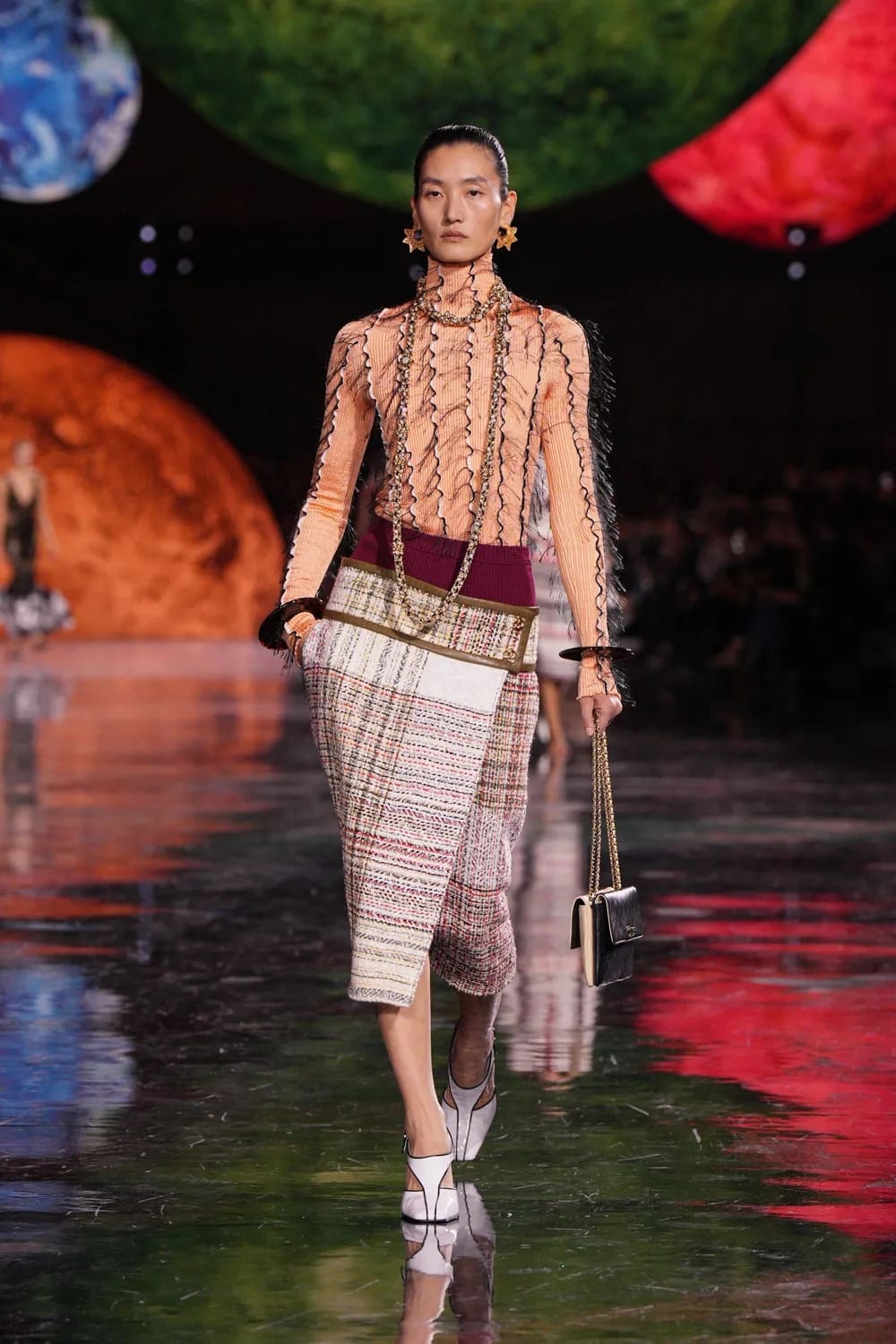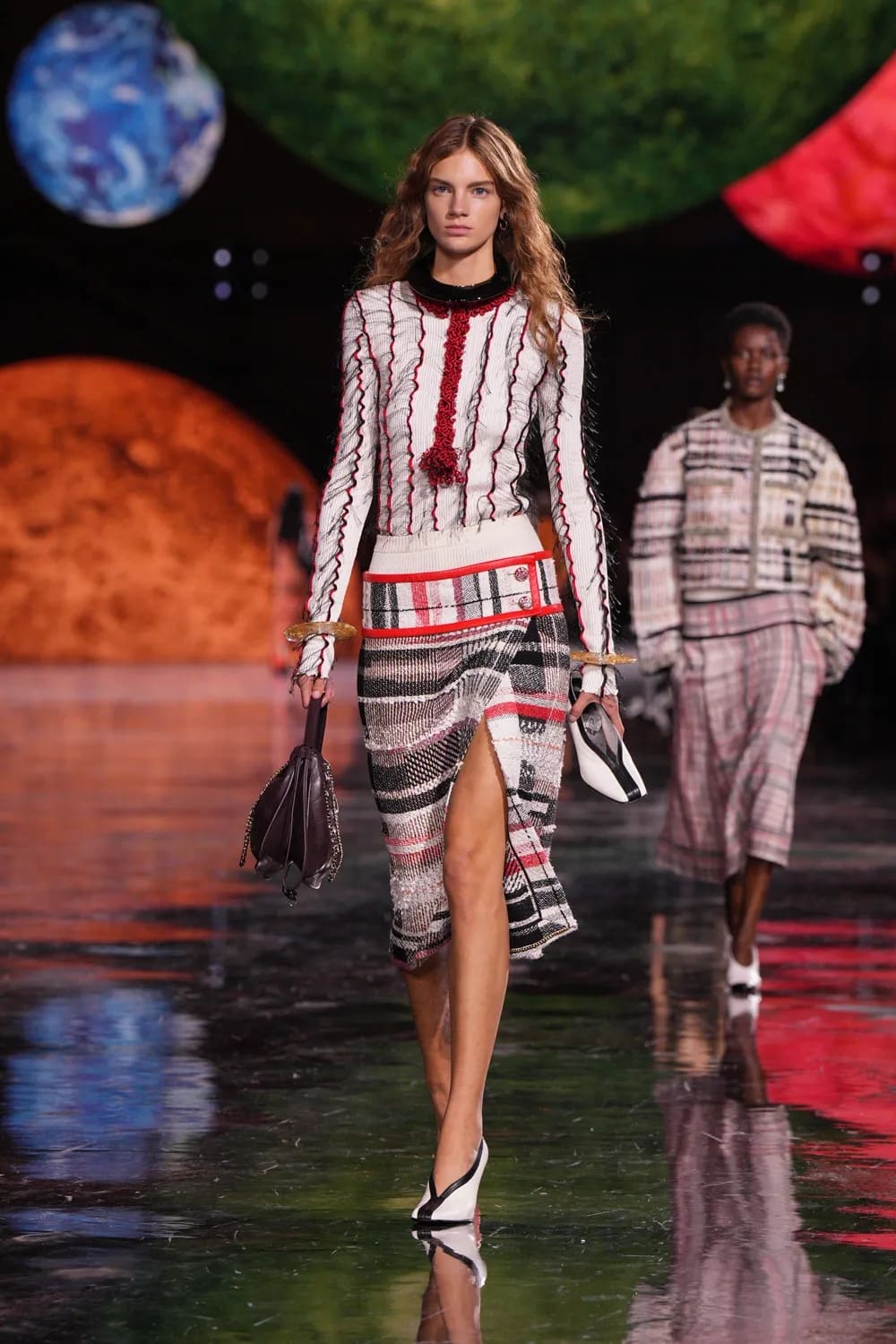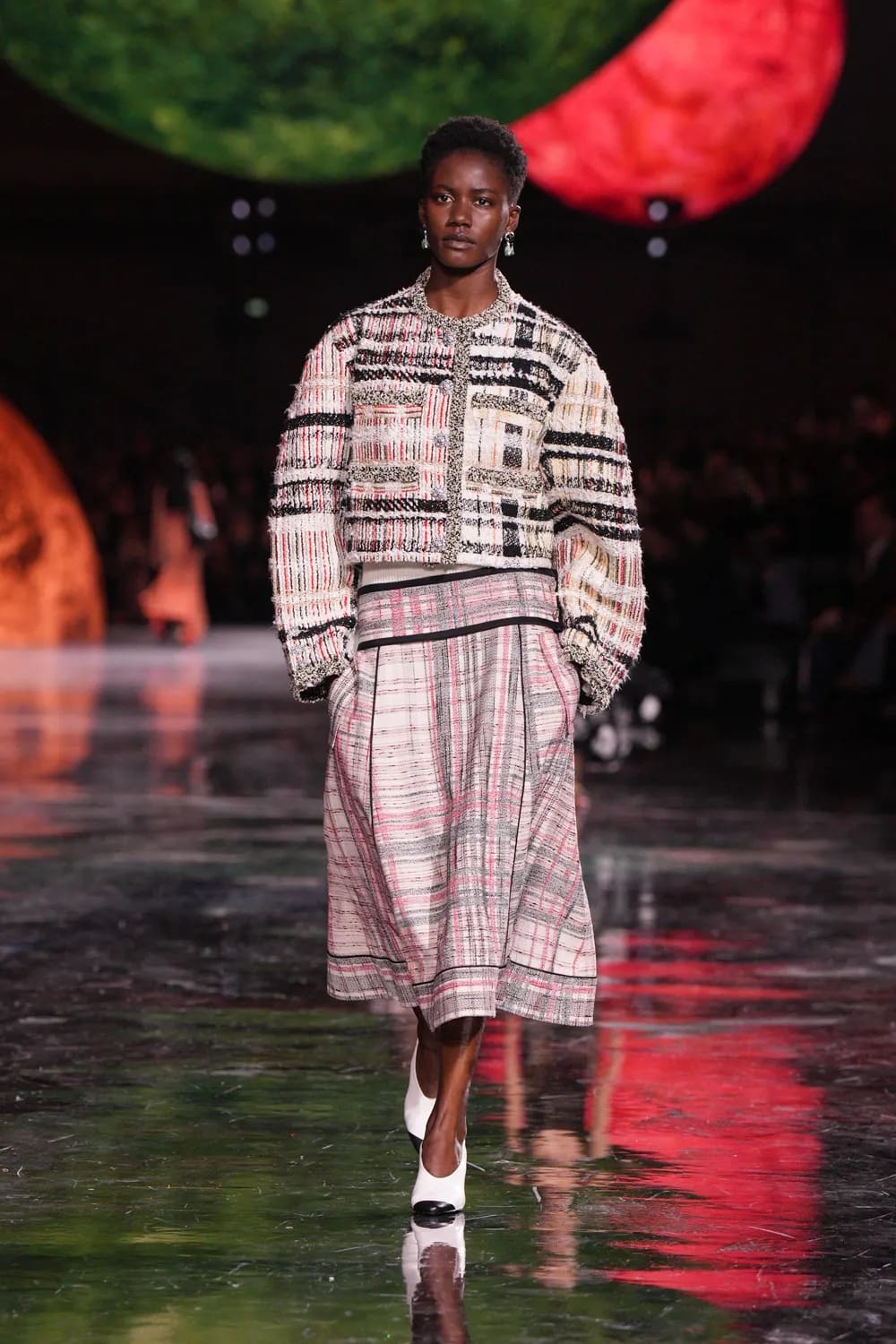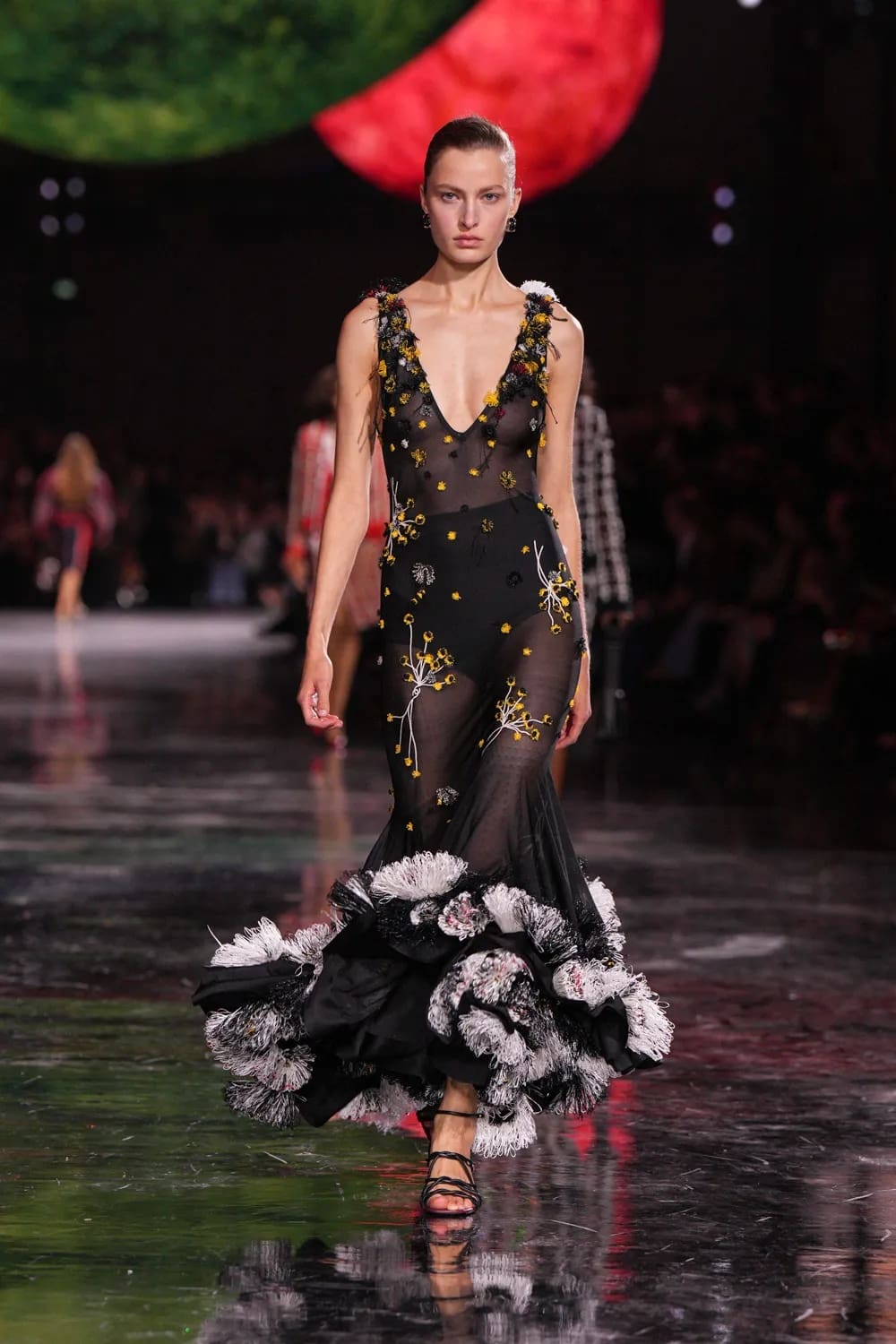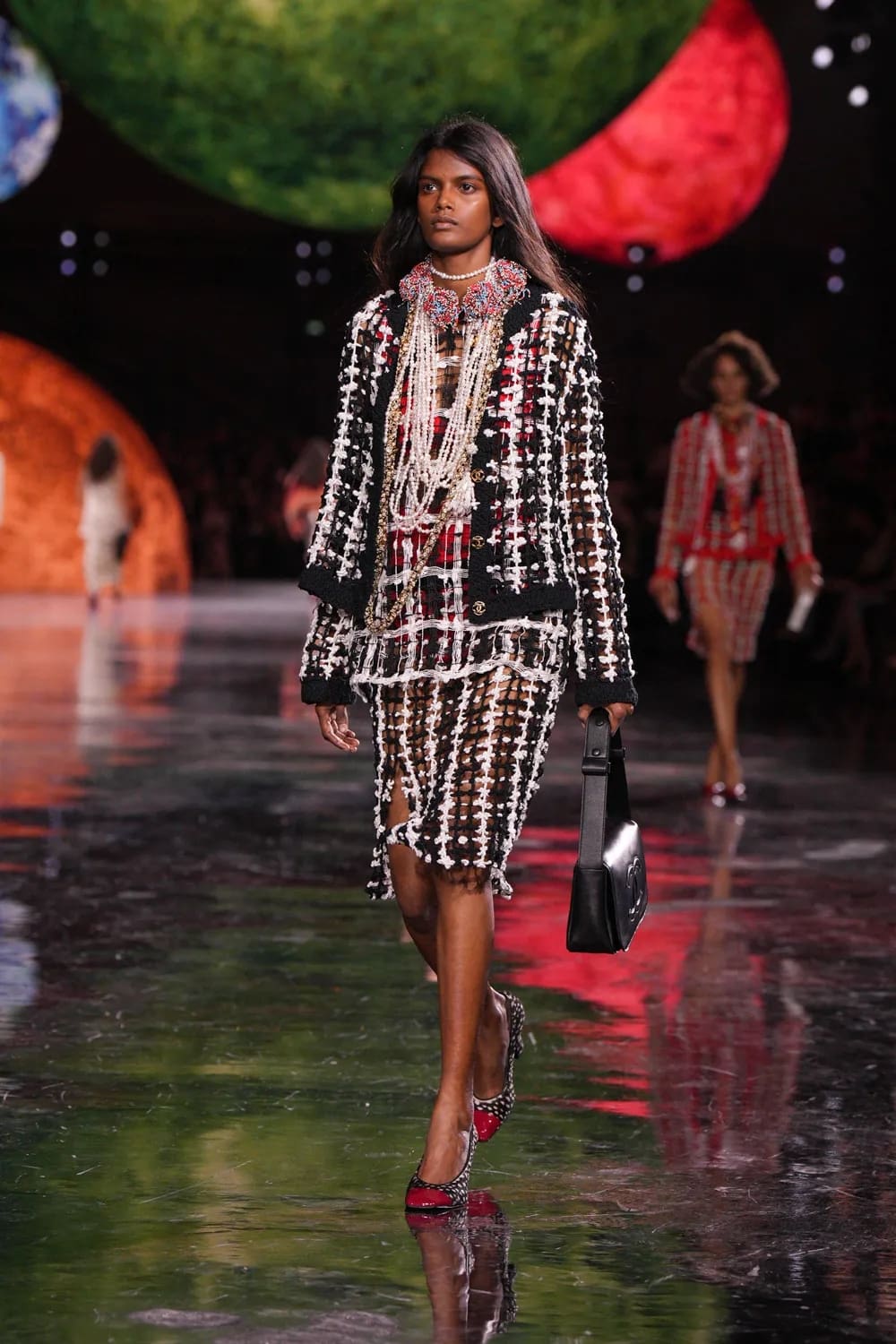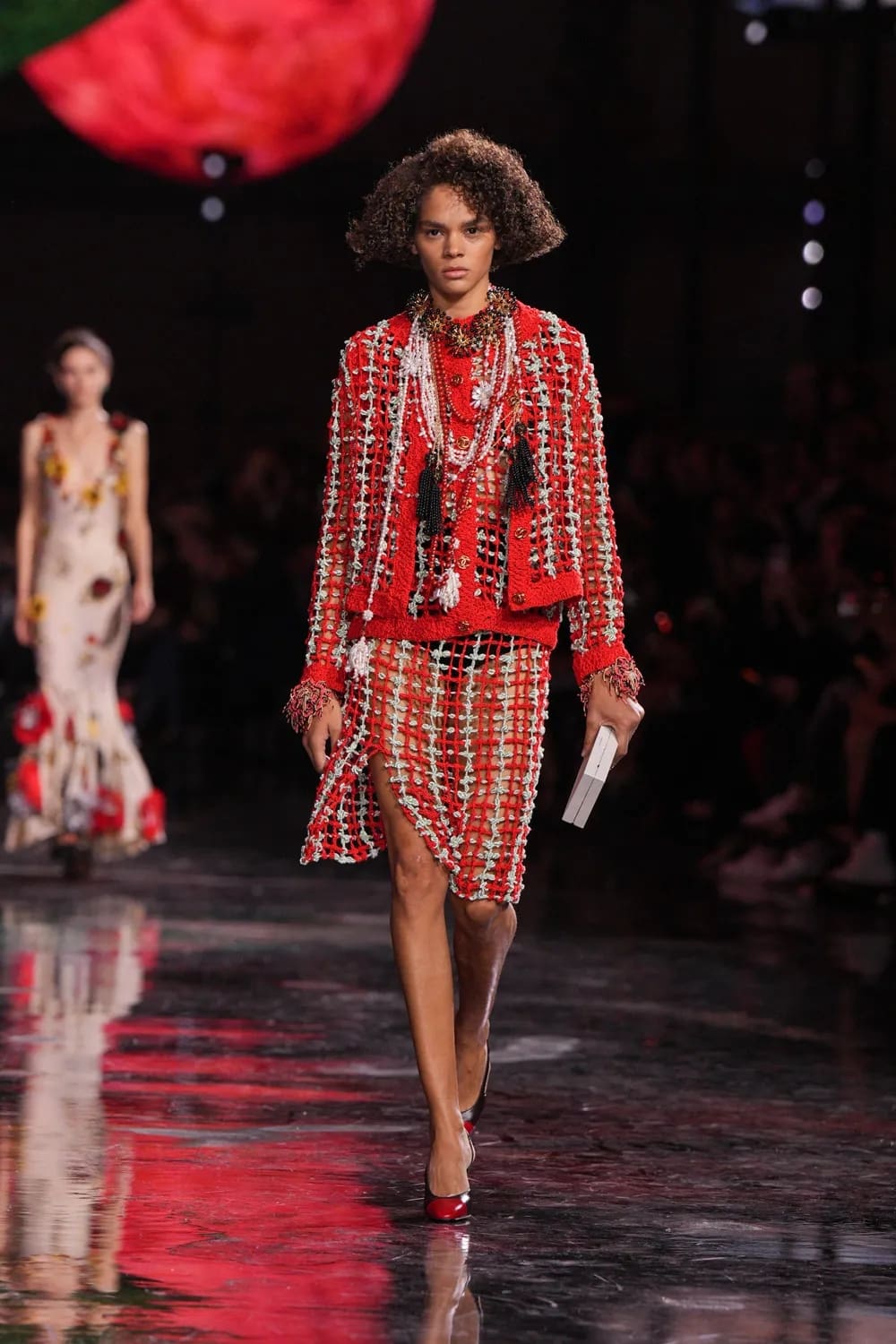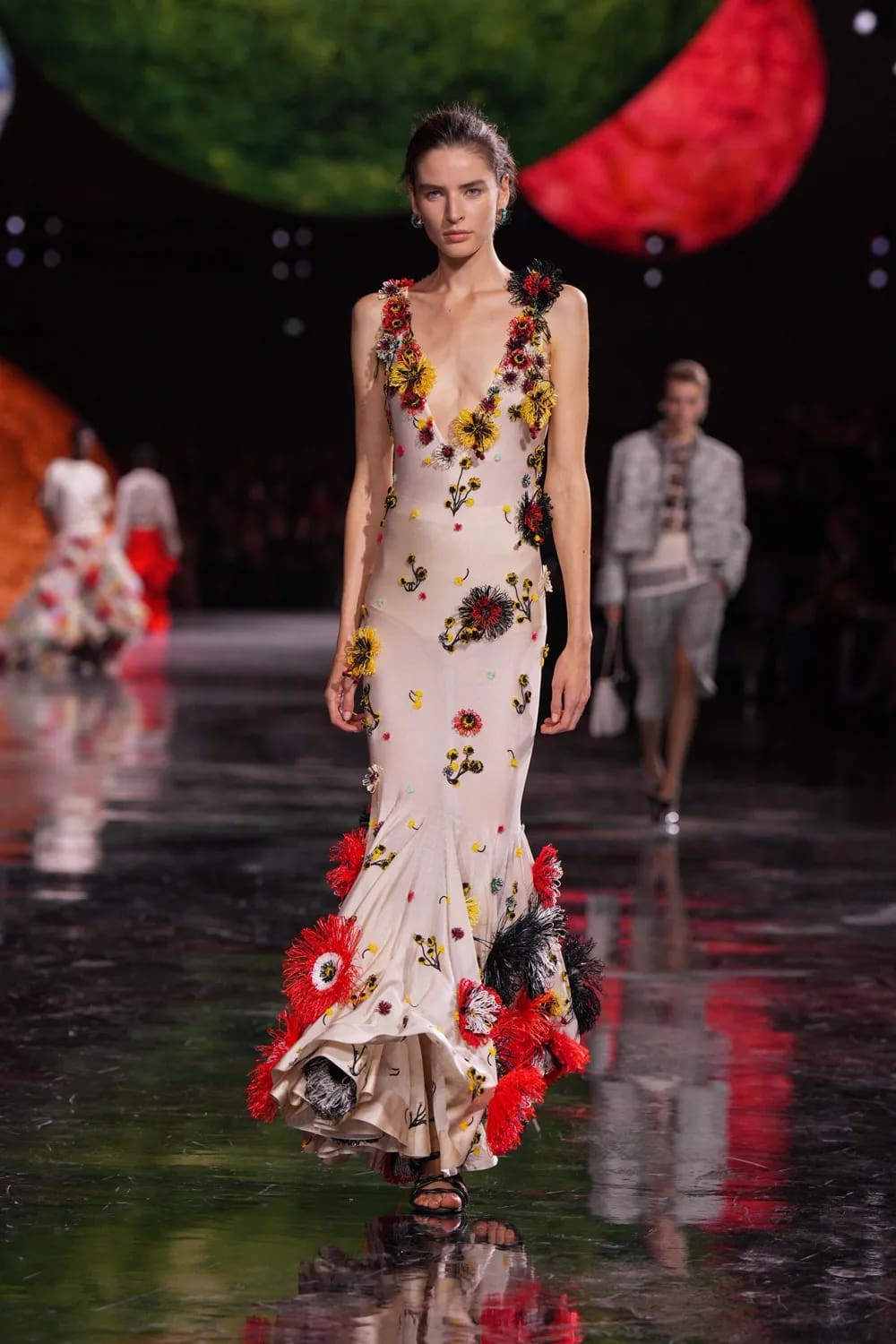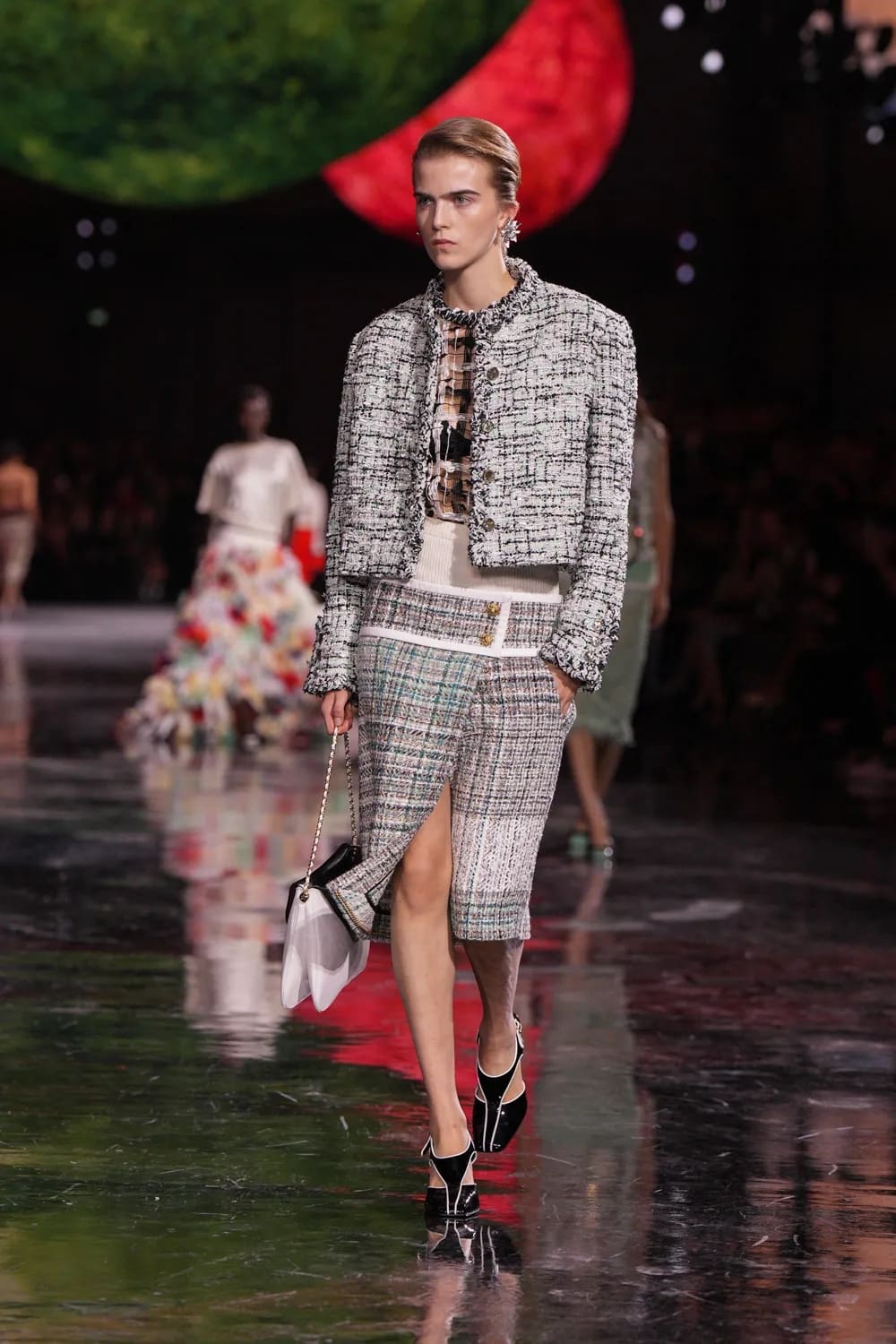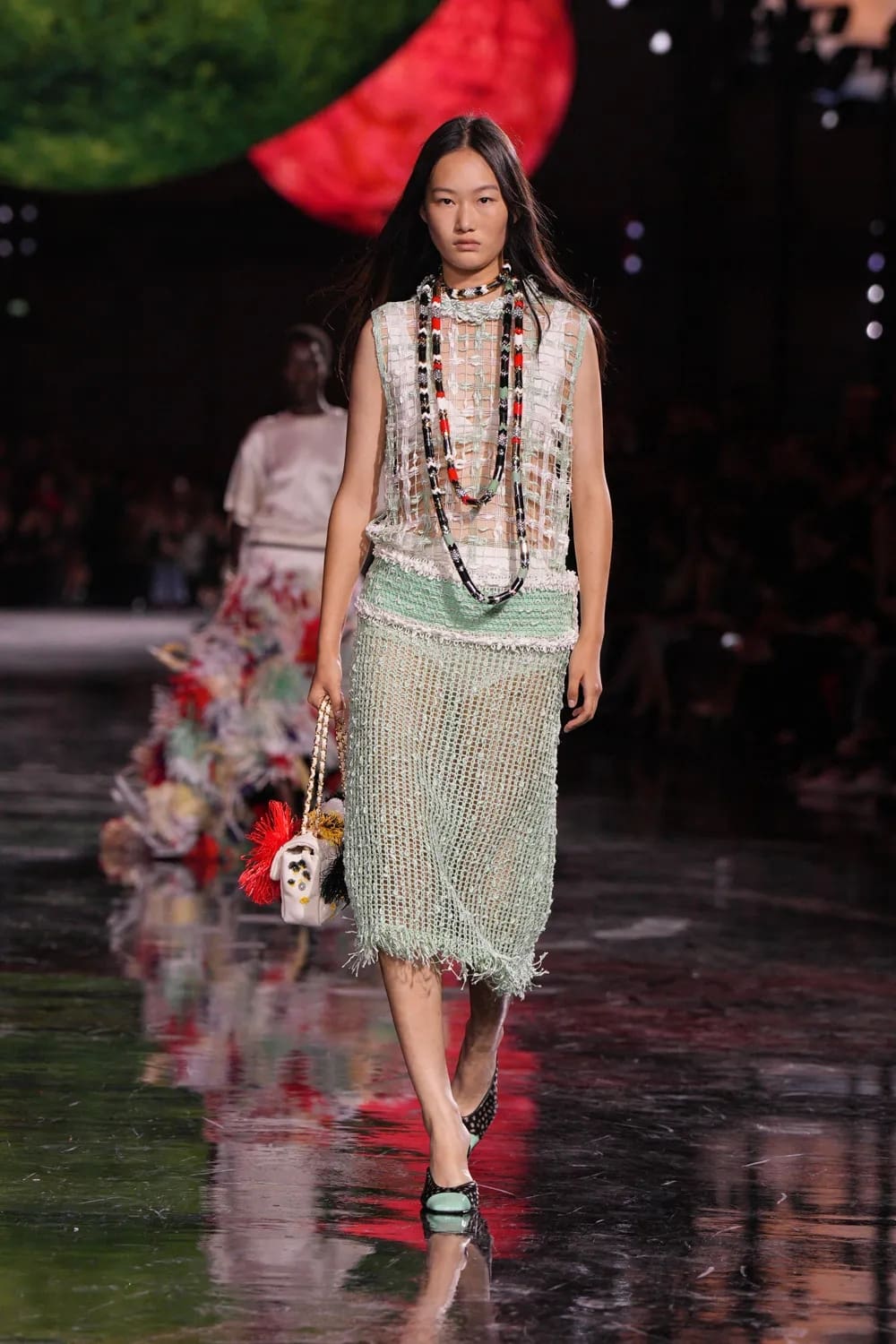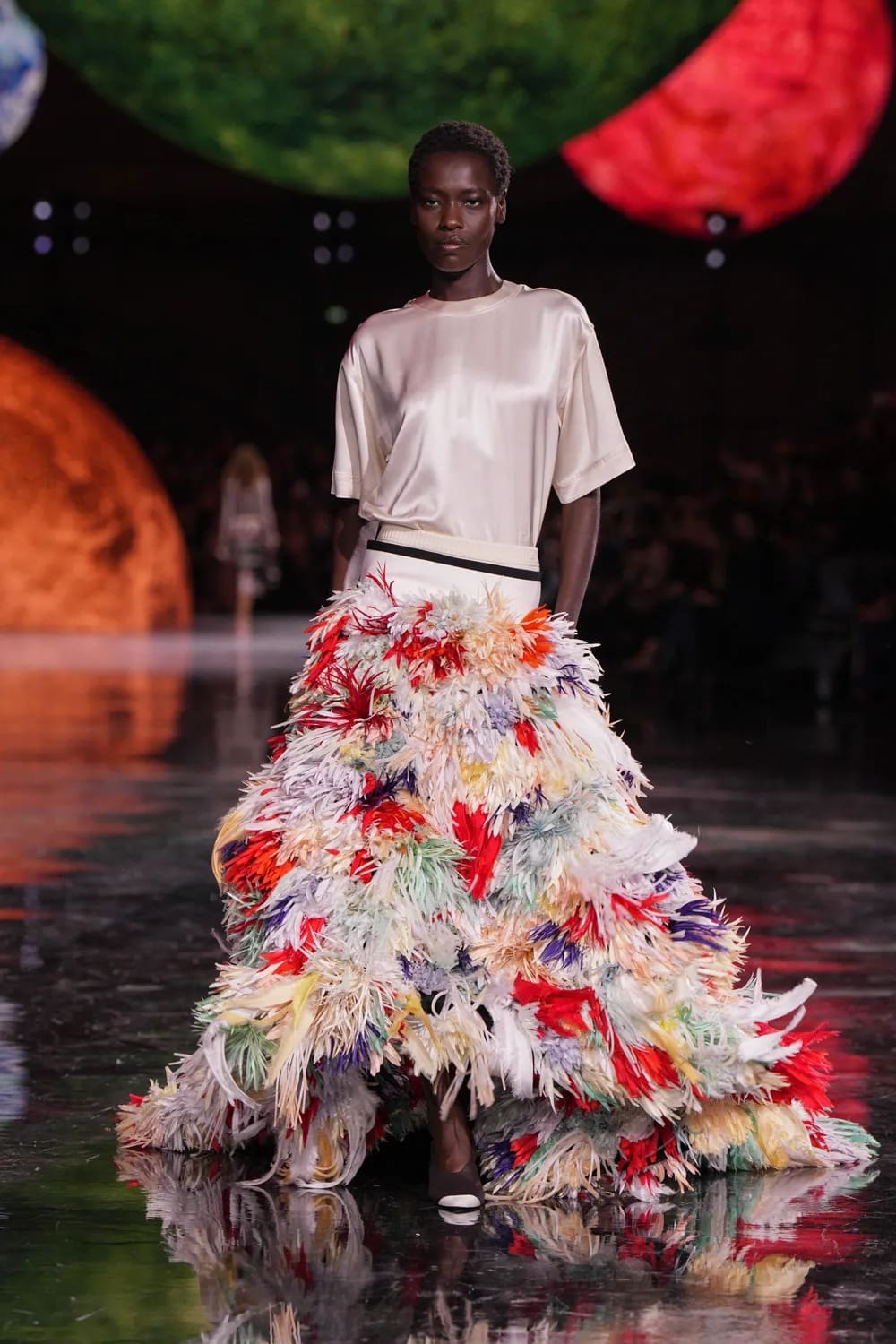Chanel Spring Summer 2026 by Matthieu Blazy “The Sky, The Moon, And The Stars”. Story by Eleonora de Gray, Editor-in-Chief of RUNWAY MAGAZINE. Photo Courtesy: Chanel / David Bailey.
The stars aligned—literally and metaphorically—for the debut of Matthieu Blazy at CHANEL. Beneath the monumental glass dome of the Grand Palais in Paris, a constellation of celestial bodies hovered mid-air, suspended in a cosmic ballet of color, light, and shadow. Planets, moons, and suns spun gently above a reflective black lacquered floor, transforming the historic space into a universe of reverie and revelation.
Blazy, stepping into his inaugural collection for the House, chose not to speak of time but to suspend it. In this spectacle, the runway was no longer a linear path—it became an orbit, a cosmic stage, a shared dream. The immersive decor echoed Gabrielle Chanel’s own words: “I love everything that is above: the sky, the moon, I believe in the stars.” A sentiment rendered not in metaphor, but in matter—grand spheres glowing with galactic textures and solar hues, casting luminous reflections on the guests below.
This was not just a fashion show. It was a ceremony of ascension, announcing the new era for CHANEL, pretending to be something mythic, shared, and strangely eternal. The vision, equal parts French precision and poetic abstraction, hinted at the spirit of collaboration that would underpin the collection to follow: a dialogue between French Métiers d’Art and Japanese craftsmanship, soon to echo in Tokyo at la Galerie du 19M.
Matthieu Blazy’s message was clear from the first moment: this would be a CHANEL that dreams together with the world. And the view from above? But would it?..
Faux Intellect and Cropped Intentions
The opening act of Matthieu Blazy’s debut for CHANEL arrives with a sketchbook spirit—ideas aplenty, execution hesitant. The first five silhouettes drift somewhere between student ambition and atelier vocabulary, yet rarely settle into the composure expected of the House. There’s tailoring, yes—cropped jackets with boxy shoulders, pleated trousers, and skirts sliced with side slits—but everything feels paused mid-thought. The construction is clean, but the soul? Unfinished.
What was perhaps intended as “contemporary restraint” lands more as “academic experiment.” Proportions are exaggerated, yet lack the boldness to truly claim space. Accessories—oversized coral earrings, metallic quilted bags—attempt to inject narrative, but end up speaking louder than the garments themselves.
Most telling is the persistent silhouette: the intellectualized uniform. A series of cropped jackets over understated separates, repeated like a formula waiting for approval. A look that wants to nod to Gabrielle’s masculine-feminine legacy, but instead bows to the Pinterest moodboard of fashion schools. These are not finished looks. They are concepts dressed in haute intentions.
Would Gabrielle Chanel have nodded in approval? Or quietly walked out halfway?
What’s clear is this: the opening movement doesn’t quite play in harmony. It flirts with CHANEL’s codes, but never commands them. Faux intellect, safe experimentation, and a lingering question: where is the refinement?
And perhaps more urgently—where is the authority?
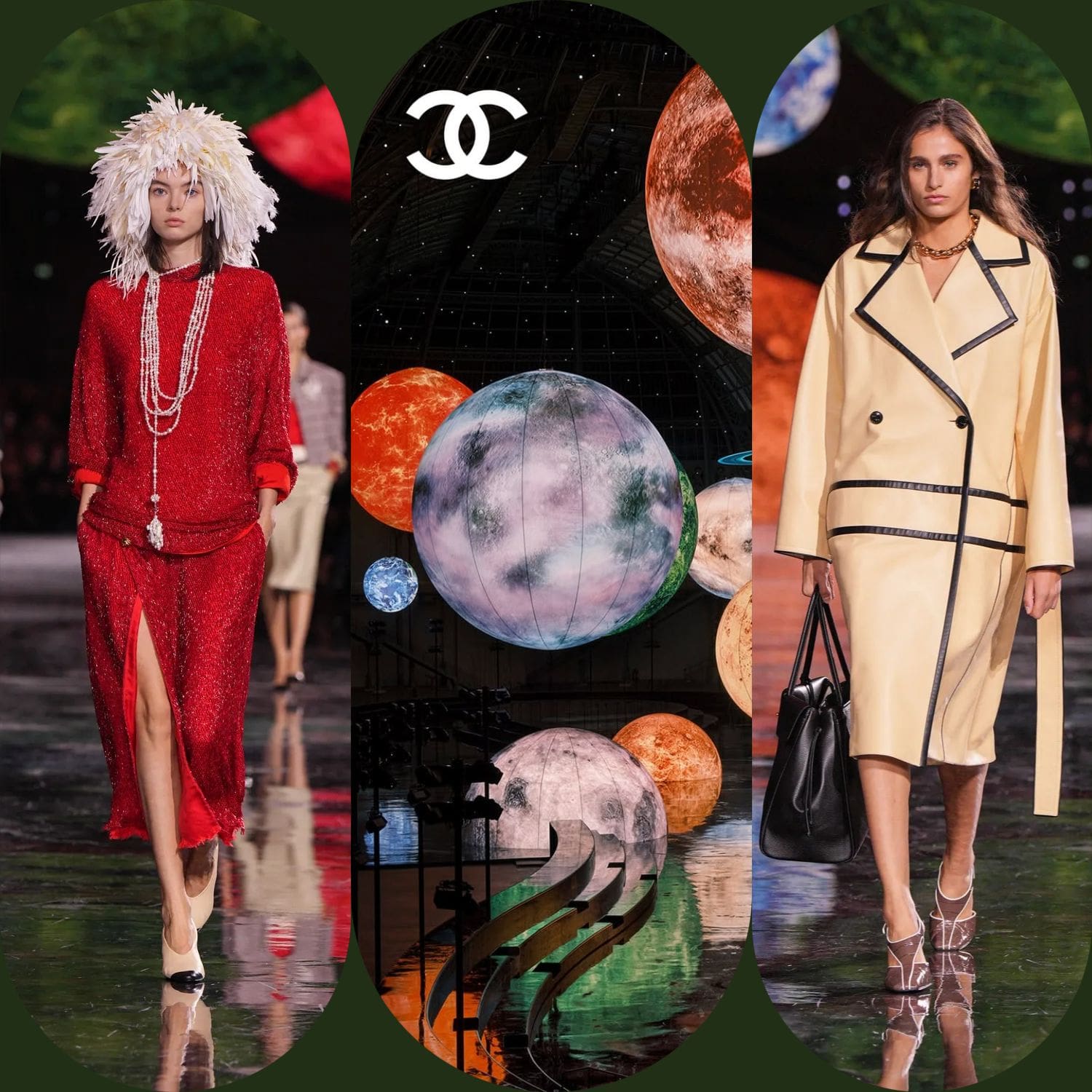
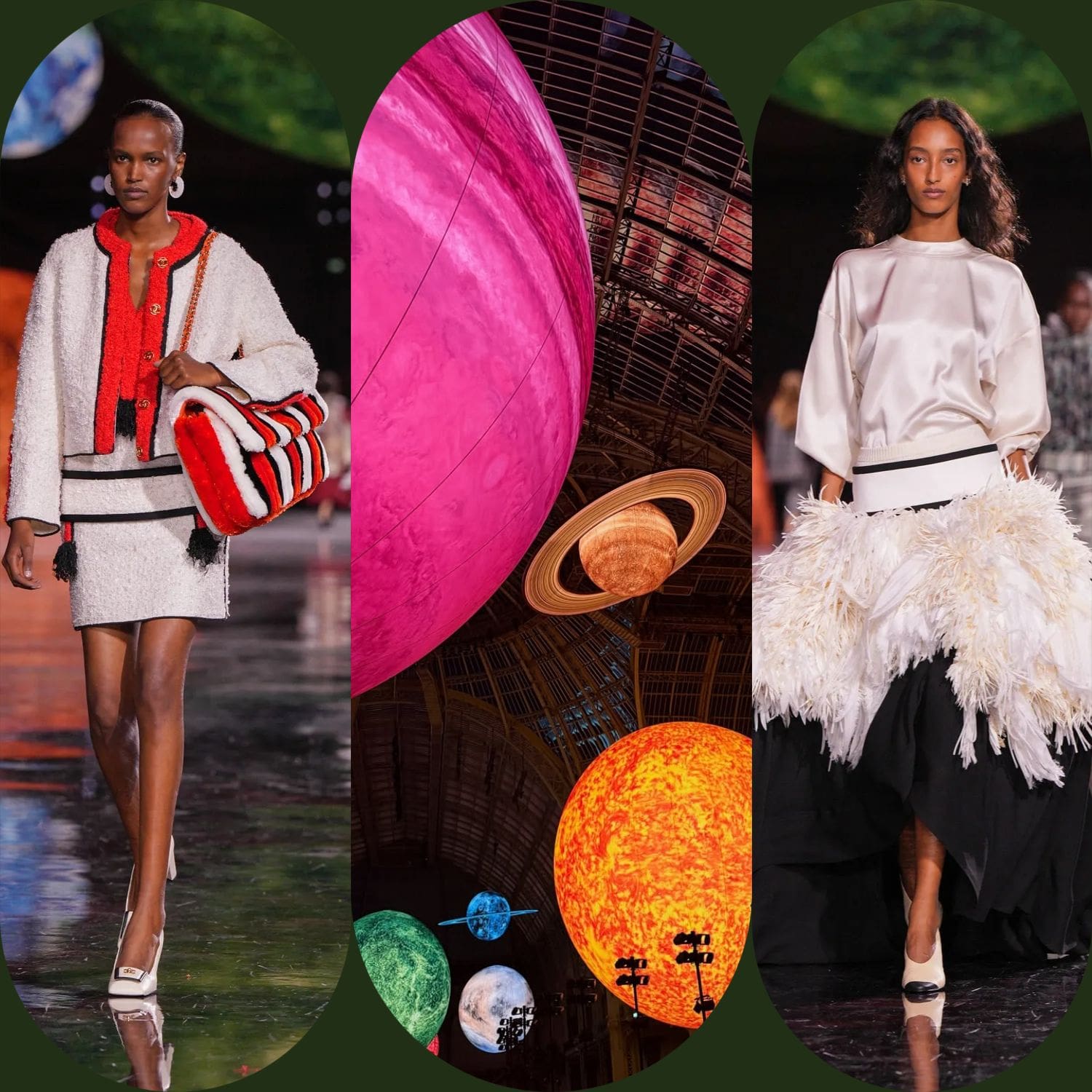
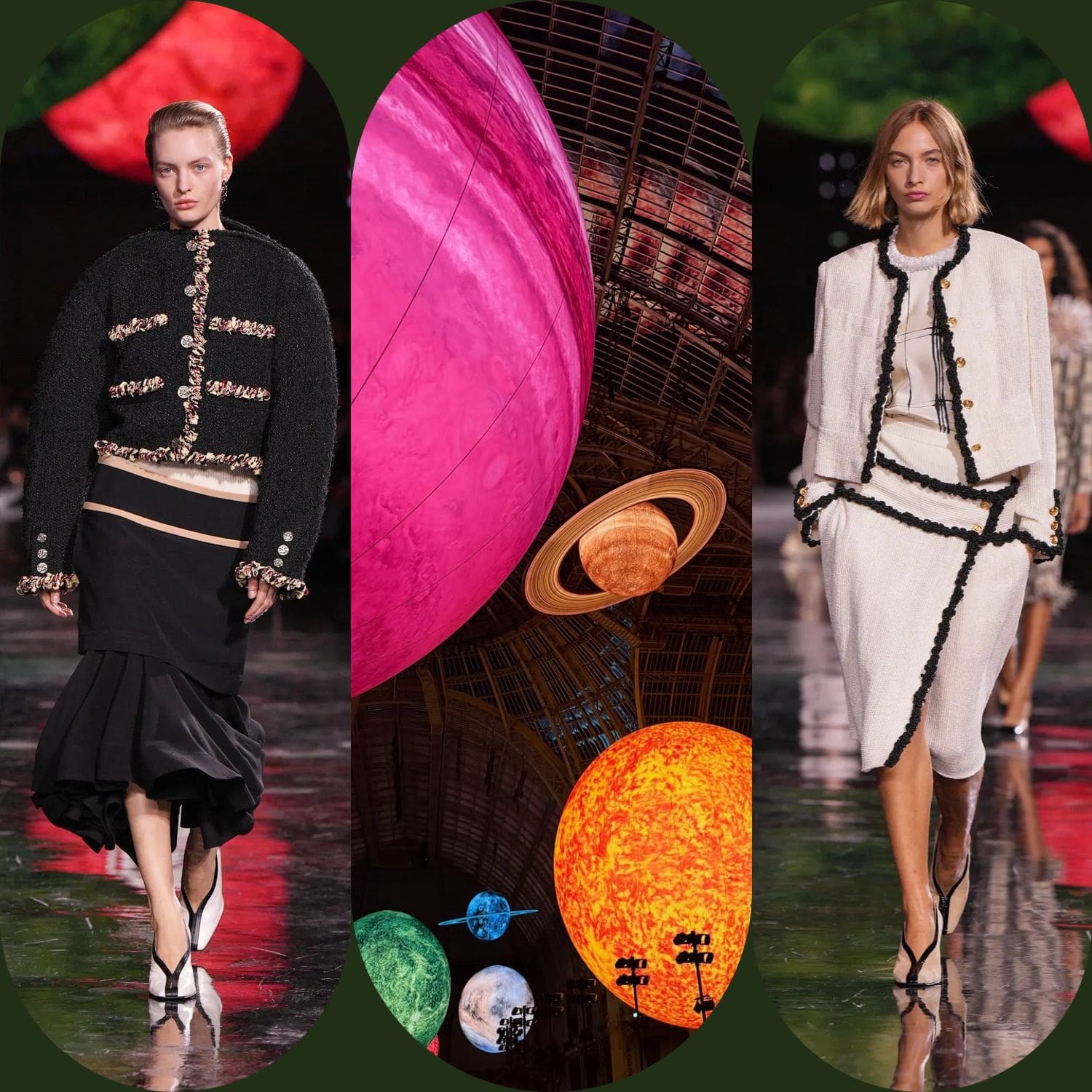
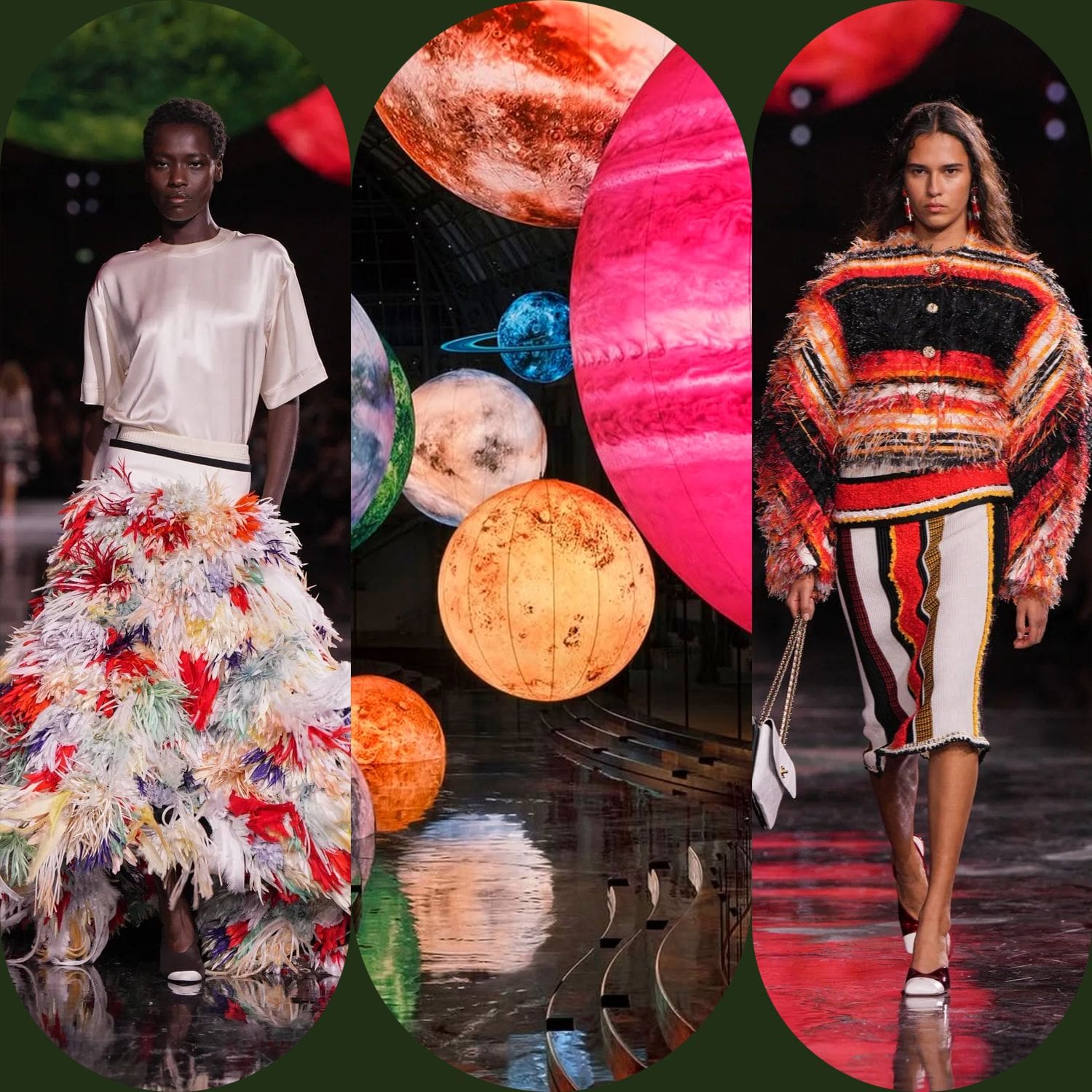
When Proportion Becomes Parody
Feathers, fringe, and forced proportions dominated this chapter, where garments seemed less designed to flatter and more intent on overwhelming. A classic men’s shirt was paired with a flaming red feathered skirt—an idea that could have sparked contrast but instead erupted into imbalance. Oversized tailoring, plasticized fabrics, and ballooning silhouettes continued the theme: distortion. Even the sacred CHANEL codes—tweed jackets, black-and-white palettes—were rendered in outline-heavy, cartoonish treatments, as if someone had traced Coco’s sketches with a black marker and called it modern.
Each look seemed to ask the same question: what if we made it bigger? The problem wasn’t size, but purpose. Wide shoulders and overbuilt coats didn’t create power—they diluted it. The models, no matter how angular, were burdened with weighty skirts and swollen cuts that swallowed movement and masked elegance. If there was an attempt at deconstruction, it was lost in translation. Instead, these looks became costumes—clever in theory, but unresolved in reality.
And here’s the irony: most of these looks are worn by thin, lithe models—and yet, the garments distort them into something else entirely. Not just oversized, but swollen. The thighs become magnified. Shoulders balloon. Silhouettes collapse under their own conceptual weight.
Is it commentary? Is it rebellion? Or simply a miscalculation in proportion?
What’s certain is this: CHANEL’s legacy was built on liberation—of form, of movement, of modernity. These looks? They imprison. Not women—but ideas. Oversized becomes overburdened. Iconic codes become costume.
And when a CHANEL jacket looks like a cartoon—one wonders who exactly is being drawn.
Matthieu Blazy trades elegance for exaggeration—and not always with intent. The silhouettes swell, distort, and drift into satire. From a banker’s shirt awkwardly paired with a volcanic feather skirt, to CHANEL’s sacred tweed suit outlined like a cartoon sketch, the clothes seem more concerned with being clever than beautiful.
What should have celebrated volume and fantasy instead collapses under theatrical weight. The models—willowy, poised—are rendered awkward, wide, sometimes even clumsy, not by their presence but by the garments wrapped around them.
Oversized here is not about comfort or freedom. It is disproportion as statement, though one that never lands. The codes of CHANEL are present—tweed, pearls, trim—but filtered through a lens of parody. Jackets become caricatures. Skirts become obstacles.
What happens when concept overtakes craft?
When silhouettes are built to alienate the body rather than elevate it?
A Galaxy of References, a Vacuum of Direction
The runway became a patchwork of impulses—stripes, feathers, florals, knits—none of them speaking to each other, let alone forming a narrative. There was no thread, no silhouette guiding the eye. Instead, the show dissolved into a series of loosely connected garments, each belonging to a different collection, mood board, or country entirely.
The warm, knit-inspired textures felt lifted from British high street catalogs—safe, sentimental, and entirely disconnected from CHANEL’s urban heritage or French rigor. Elsewhere, florals were scattered like confetti—pretty in isolation, but devoid of editorial purpose. A soft pullover was paired with a ruffled flamenco skirt, a sheer tartan over a micro-printed slip, and metallic threads fought with stiff silhouettes in an attempt to appear ‘handcrafted.’ But even the embroidery—usually a point of pride for the House—felt aimless here, as if the atelier had been given no direction beyond “decorate.”
What should have been a crescendo instead felt like the unraveling of a collection that never truly began. There was no finale—just a slow dispersion of aesthetic signals, flickering and fading like stars too far from their own constellation.
Matthieu Blazy’s debut for CHANEL promised a celestial vision—something universal, timeless, shared beneath the stars. What unfolded instead was a collection unmoored from the House’s gravitational pull. There were references, yes—plenty of them. Coco’s masculine tailoring, Lagerfeld’s baroque irreverence, even nods to Japanese craft and British softness. But references alone do not make a collection. Without cohesion, without silhouette logic or stylistic crescendo, what remains is a catalogue of gestures—some charming, many unresolved.
The show oscillated between concept and costume, from bloated tailoring to shapeless knitwear, from cartoonishly trimmed tweeds to aimless florals. Even the craftsmanship—a pillar of CHANEL’s legacy—was dulled by indecision. The embroidery felt applied, not embedded. The cuts, especially in outerwear, worked against the body instead of enhancing it. And in a house so historically tied to the liberation of women’s silhouettes, this felt like a betrayal in slow motion.
To call this collection unfinished would be generous. It was disassembled before it ever found structure. For a brand built on precision, innovation, and eternal codes, this was not a reinvention—it was a dissonance. A galaxy of ideas scattered across a runway, with no orbit to hold them in place.
See All Looks Chanel Spring Summer 2026
